When is the best time to go to Australia?

Nov 27, 2023 • 7 min read
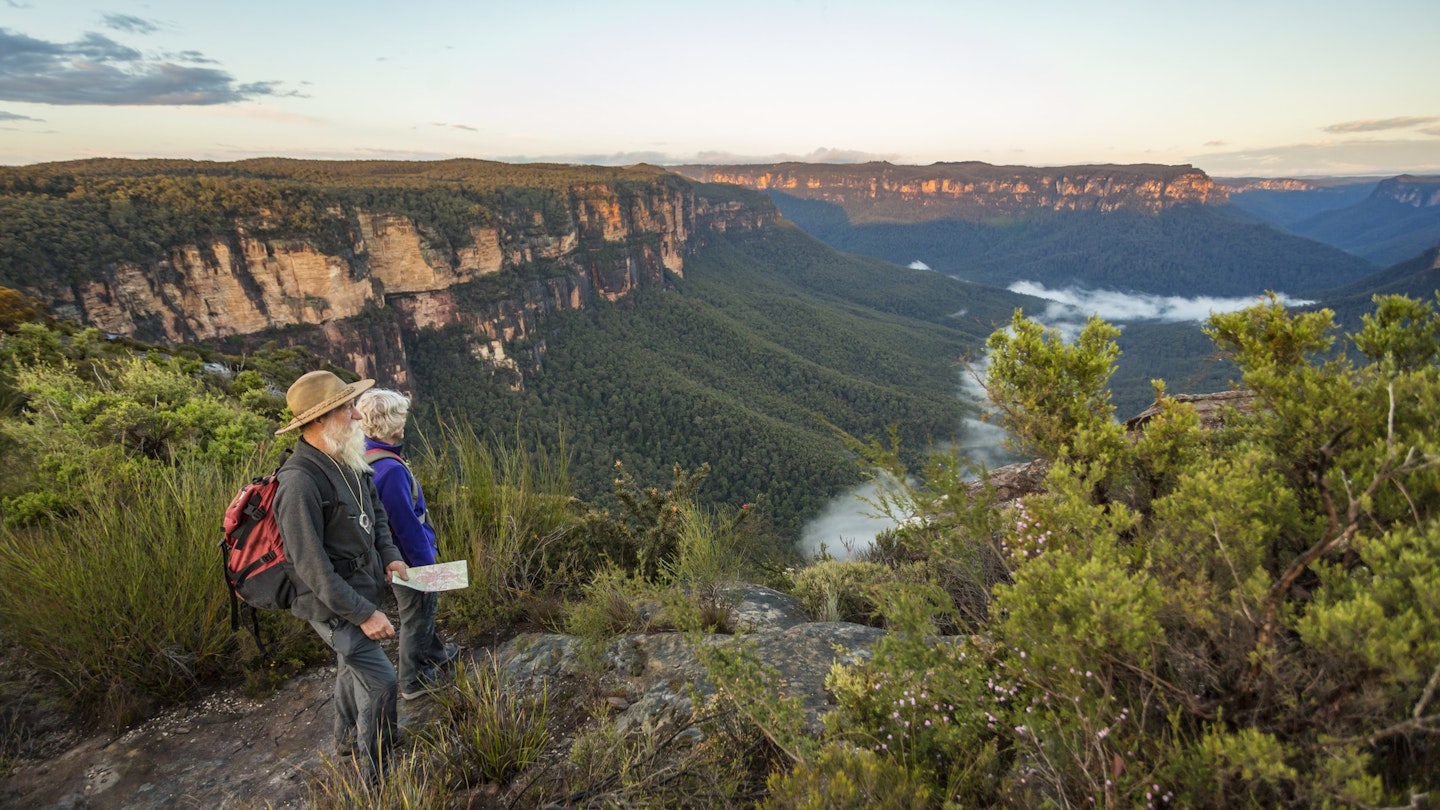
Plan the right time for your visit to Australia with this seasonal guide to what's happening through the year © davidf / Getty Images
As the sixth-largest country in the world, Australia has landscapes that range from dry savannahs and scrubland to lush tropical rainforests.
Each season brings its own magic, depending on where you are and when. Summer can either mean comfortable temperate days, blistering desert heat, or days of extreme humidity and frequent rain. Similarly, winter can deliver both snow or sunshine, depending on your location – and preference.
In short, the best time to travel to Australia depends on what you plan to do . From festivals to whale watching and wildflowers, here’s a seasonal breakdown of what's happening through the year.


December to February is the best time for beach days and festival vibes
Thoughts of Australia often conjure summer scenes of clear skies, brilliant sunshine and the sparkling ocean. December to February brings the hottest months with the longest days. This is also the peak travel season, so come prepared for crowds and premium rates on accommodation, particularly during Australian school holidays (which typically run from late December to late January).
Incredible as they are, there are plenty of ways beyond the beaches to enjoy summer in Australia. As Australia’s tropical north bunkers down for the wet season (with some remote regions such as the Kimberley all but closing up business until “the Dry” returns) this is the time to head south for festivals, sports and sunshine.
Big ticket events in January include the Australian Open tennis tournament in Melbourne and Sydney Festival , a visual and performing arts festival. Also not to be missed are quirky regional events such as Parkes Elvis Festival in rural New South Wales , timed to coincide with the King of Rock and Roll’s birthday.
In February, the world’s second-largest Fringe Festival (after Edinburgh) takes over Adelaide , while the streets are lined with glitter and rainbows for Sydney ’s version of Pride: the Gay and Lesbian Mardi Gras . There are also countless outdoor music festivals (both ticketed and free) across the country during this time, particularly over the New Year’s holiday period.

March to May and September to November are the best months for multi-destination adventures across the country
The shoulder seasons of spring (September to November) and autumn (March to May) can mean more rain in many areas, but much milder temperatures. This makes it easier to experience city and outback life in one trip.
During these periods, you'll find relief from otherwise scorching outback temperatures, making it the ideal time to visit destinations in the Red Centre including Uluru-Kata Tjuta National Park . Meanwhile hiking routes , including Central Australia’s Larapinta Trail, South Australia’s Heyson Trail and Cathedral Gorge in Western Australia’s Purnululu National Park, are a lot more manageable in the cooler months.
If you’re visiting the Kimberley between March and May, you may also be rewarded with glimpses of the waterfalls at the tail end of the wet season.
However, it pays to be aware that schools take two-week breaks, usually at the beginning of April and the end of September. Many Australian families take holidays during these periods, which can affect the availability and cost of accommodations.

June to August is the best time to snorkel on the Great Barrier Reef or hit the slopes
The winter months of June through August are generally the cheapest time of year to travel throughout much of Australia, with fewer tourists and better deals on flights and accommodations in most areas.
There are exceptions to the rule, though. The drop in temperatures and drier weather drives tourism to iconic destinations such as Uluru, as well as Cairns , Darwin and the Kimberley. (It can also be cooler than many tourists expect, with temperatures in the Red Centre dropping below 0°C/32°F overnight. Pack accordingly.)
In Queensland , jellyfish – including the infamous Irukandji – are less prevalent during winter, which also means it’s an ideal time to snorkel or dive on the Great Barrier Reef .
If you’re planning to visit these areas, be prepared to jostle for accommodation as domestic travelers from the southern states also head north to escape the cold, with most school districts taking a two-week break at the start of July.
However, it’s just as popular to head into the cold. While neighboring New Zealand is better known as a ski destination , Australia also has fantastic snow experiences to appease powder hounds. New South Wales’ aptly named Snowy Mountains – roughly 490km (304 miles) from Sydney – is home to Perisher (the largest ski resort in the country) and the nearby Thredbo resort. In Victoria, you can hit the slopes 385km (239 miles) from Melbourne in Falls Creek or take to the steeper runs of Mt Hotham.
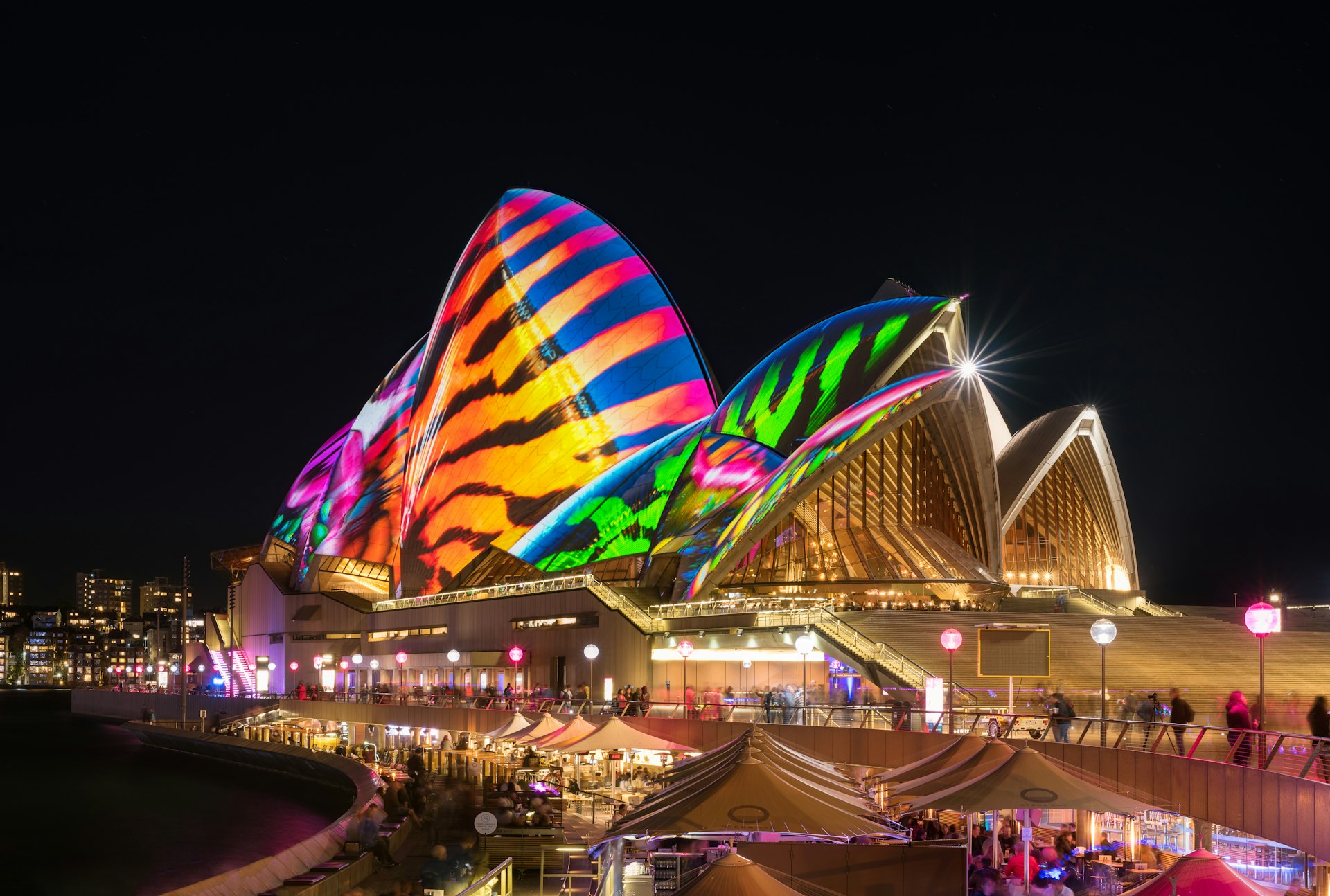
May to September is the time to experience Australia’s winter festivals
Winter doesn’t mean an end to the celebratory vibes. Instead, May to September is a flurry of activity in capital cities and regional hubs across Australia, with festivals to excite avid foodies, art aficionados, music lovers and more.
The return of shorter days is kicked off by Alice Springs ’ Parrtjima Festival in April. The free 10-night festival celebrates First Nations culture with interactive workshops and performances, and sees the MacDonnell Ranges transformed by an incredible light installation.
Next up is Hobart ’s subversive Dark Mofo festival – timed to coincide with the winter solstice in June. It’s one of the country’s most fêted off-season events, with massive bonfires, live music and performance art taking over the Tasmanian city. Dark Mofo is on pause for 2024, but daring visitors can still partake in the annual Nude Solstice Swim and Winter Feast.
Also in June, Sydney’s Vivid Festival draws visitors by the thousands for its light projections and a program of thought-provoking presentations. Similarly, Melbourne’s Rising Festival and Adelaide’s Illuminate both light up the long winter nights with bold projections and installations across the cities, alongside immersive free and ticketed events. Both are held annually between June and July.
On the other side of the country, foodies tuck into the season’s best at Truffle Kerfuffle in Manjimup, WA, followed by the Cabin Fever food and culture festival in July in Margaret River . Finally, if you’re in the Northern Territory in August, you might want to add Darwin Festival of arts and culture to your itinerary.
May to November is prime time for whale watching
If you love marine wildlife, May through to November marks the best months to glimpse whales as they make their twice-annual migration along the coast. Starting from April, tens of thousands of these majestic mammals begin their journey north from their Southern Ocean feeding grounds. They breed and give birth in warmer waters along Australia’s shores, before returning south with their young.
The coastlines of South Australia, Tasmania and Victoria are some of the best places to see southern right whales, while humpbacks and the occasional orca put on a show along the east and west coasts. Western Australia is the place to spot elusive sperm and blue whales.
Another phenomenon you may be lucky enough to see in Tasmania’s southern latitudes at this time of year is the aurora australis or southern lights. Popular places to witness the dancing colors include Cradle Mountain-Lake St Clair National Park , Bruny Island and the secluded Bathurst Harbour.
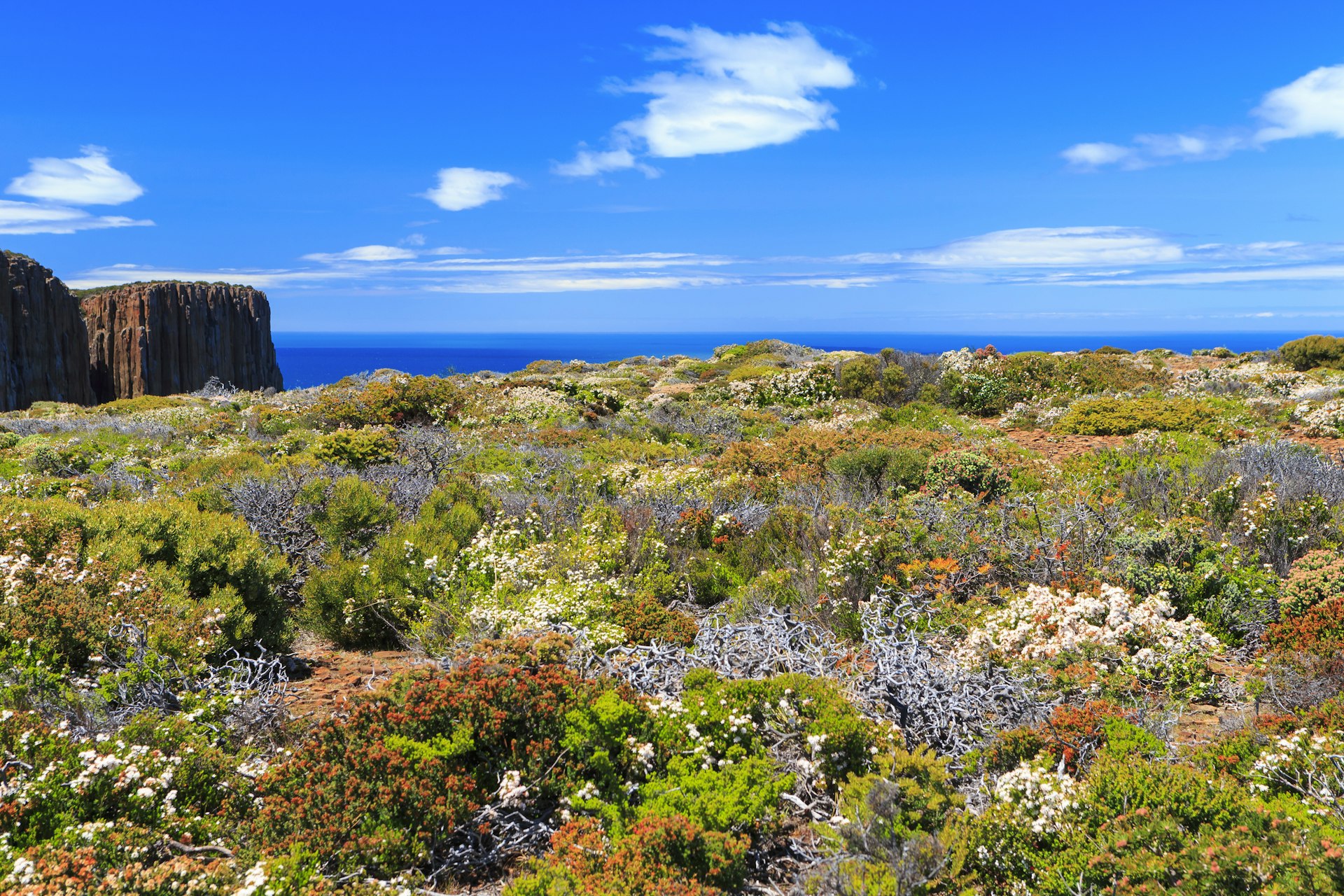
August to October is the best time to see rare and endemic wildflowers
We know what you’re thinking. Flowers, for spring? Groundbreaking. But thousands of Australia’s wildflowers bloom nowhere else on the planet. Case in point are the flowers of Western Australia’s southwest. There are more than 12,000 species, 60% of which are endemic to the region. The Indigenous peoples of this region, the Noongar, acknowledge six seasons of the year, and August to October marks the transition to Kambarang , the height of the flowering season. This is celebrated at Perth’s EverNow Festival in October.
Other notable places to experience the wildflower season include the Blue Mountains and Booderee National Park in New South Wales and Ikara-Flinders Ranges National Park in South Australia. Victoria also boasts numerous spots including the Grampians (Gariwerd) , which is home to one-third of the state’s flora and where the flowering season is known locally as petyan . The Dandenong Ranges are also a popular stop, particularly for those wanting to experience wildflowers and a winery or two of the nearby Yarra Valley .
At this time of year, you’ll find countless regional flower festivals across the country, alongside larger celebrations. Two of the biggest are Canberra’s Floriade (the largest flower festival in the southern hemisphere, hosted September to October) and Toowoomba’s Carnival of Flowers in September.
This article was first published March 2021 and updated November 2023
Explore related stories
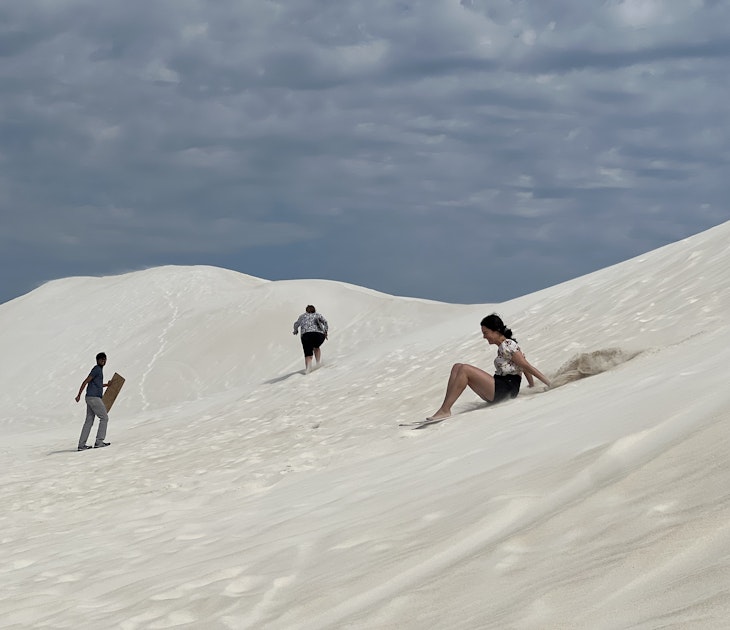
Art and Culture
Apr 4, 2024 • 5 min read
Perth’s immersive Indigenous experiences, stunning scenery and innovative culinary scene make it one of Australia's most exciting cities.

Mar 30, 2024 • 4 min read
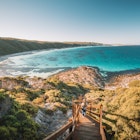
Mar 29, 2024 • 19 min read

Mar 26, 2024 • 8 min read
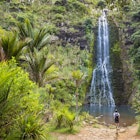
Mar 15, 2024 • 17 min read
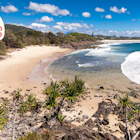
Feb 27, 2024 • 6 min read
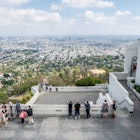
Feb 15, 2024 • 7 min read

Feb 9, 2024 • 12 min read

Jan 30, 2024 • 9 min read
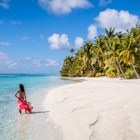
Jan 24, 2024 • 8 min read
- Search Please fill out this field.
- Manage Your Subscription
- Give a Gift Subscription
- Sweepstakes
- Destinations
The Best Time to Visit Australia for Perfect Weather and Affordable Rates
These are the best times to visit Australia for surfing, hiking, beach hopping, and more.
:max_bytes(150000):strip_icc():format(webp)/Sarah-Reid-0cc15a52771e459e8be5e9eaae794d2c.jpg)
From golden beaches and tropical rain forests to one-of-a-kind wildlife and rich Aboriginal and Torres Strait Islander culture, Australia has a memorable vacation in store for all types of visitors.
Visiting a country so big — complete with three separate time zones and eight different climate zones — requires a degree of planning. To help you get started, keep in mind the following seasons, which apply to most of the continent's tourist hot spots.
- High Season: December to February
- Shoulder Seasons: March to May and September to November
- Low Season: June to August
While city breaks, road trips, and winery visits can be enjoyed year-round, varying regional weather patterns mean that certain highlights — hiking around the iconic monolith of Uluru; snorkeling along the Great Barrier Reef — are best experienced during specific months. No matter what you want to do during your Australia trip, we've got you covered.
Best Times to Visit Australia for Smaller Crowds
Most tourists, especially from the Northern Hemisphere, visit Australia during the country's summer months: December, January, and February. To avoid these crowds, try visiting in winter (Australia's least popular season) or in the spring and fall shoulder seasons.
If you're planning to visit the country's northern coast, opposite rules apply. This region (home to the Great Barrier Reef and the city of Cairns, among other attractions) lies in the tropics. Because of this, the June to August winter months here are warm, dry, and swarming with tourists — both domestic ones on winter vacation and international visitors looking to explore the reef when visibility is at its peak. The summer rainy season, from November to April, is the least crowded time up north.
Best Times to Visit Australia for Good Weather
Every month presents an opportunity to experience a particular region of Australia at its best. If beach hopping is high on your agenda, aim for the warmer months of September to April in New South Wales and southeast Queensland, and November to March in southern states, including the southerly reaches of Western Australia. Summer is also bushfire season, so keep your eye on local alerts during your visit.
While southern states tend to experience four seasons, northern Australia (encompassing the top sections of Western Australia, the Northern Territory, and Queensland) has just two: wet (November to April) and dry (May to October). With road access often compromised during the wet season, the dry period is generally the best time to visit this region, especially on a road trip. The wet period also corresponds with cyclone and marine stinger seasons, which can make coastal travel a challenge. That said, Great Barrier Reef and rain forest tourism in the Cairns region operate year-round, weather permitting. If you want to swim during stinger season — when certain dangerous species of jellyfish populate northeast Australian waters — you'll just need to don a Lycra stinger suit supplied by your marine activity operator.
If you've got your heart set on an Australian outback adventure, the cooler months from May to August are most comfortable. For outdoor adventures in the island state of Tasmania, which has a cooler climate than the mainland, the warmer months from October to March are ideal. If you packed your skis, the snowfields of New South Wales and Victoria are typically open from June until September.
Best Times to Visit Australia for Lower Prices
Flights are usually one of the biggest cost hurdles on a trip to Australia, but there are ways to save. Airfare tends to be lowest during the Aussie winter — June to August — since that's the least popular season for tourism. At any time of year, though, you can find good deals by opting for flights with a layover instead of direct routes (New Zealand, China, and Singapore are some common stopovers) and by watching for sales. Airlines like Virgin Australia and the low-cost Qantas offshoot Jetstar often advertise great domestic deals.
Accommodation prices, meanwhile, can drop significantly in low and shoulder seasons. City breaks in the south's bustling urban centers tend to be most affordable in the winter off-season, too. Though the beaches may be too chilly for a swim, there's still plenty to see at this time of year. Try visiting in May or June to catch the Vivid Sydney festival, when iconic buildings are illuminated by incredible light installations for several weeks.
Best Times to Go Hiking in Australia
Australia's national parks and wilderness areas are laced with hundreds of spectacular hiking trails, many of which are best tackled at certain times of the year. As the summer months can be unbearably hot in Australia's Red Centre, walks in places like Uluru-Kata Tjuta National Park are most comfortably and safely undertaken from April to September.
The opposite can be said for Tasmania, where hiking is more popular during the warmer months, though walkers should be prepared for all types of weather (even snow) throughout the year. Hiking in the lush Gondwana Rainforests of Queensland and New South Wales is typically more comfortable in the drier winter months (particularly June to October), while the best time to wander Western Australia's famed Cape to Cape Track is in the spring (specifically September and October, when wildflowers are in bloom) and autumn (March to May).
Best Times to Go Surfing in Australia
Like in many other destinations around the world, the best months for surfing in Australia don't always coincide with the best months for swimming. If you're just learning how to surf, there's generally no bad time to take a lesson here — though you'll be more comfortable spending hours in the water during the warm summer months of December through February. (This is especially true in Victoria and southern Western Australia.)
For experienced surfers, the offshore winds and more consistent swells of the Australian winter tend to proffer the best conditions, though storms can also generate big waves at any time of year. If you'd rather watch great surfers than join them, try visiting in fall months like March or April — that's when many of the country's biggest surfing competitions, like the Margaret River Pro and Newcastle's Surfest , are held.
Best Times to See Wildlife in Australia
Irjaliina Paavonpera/Travel + Leisure
One of the best things about visiting Australia between May and November is the opportunity to spot migrating whales. Various species make their way up and down the east and west coasts during those months, with different peak times for each species. The best time to book a whale-watching tour in general is August or September, when humpbacks tend to be most active. If you've always wanted to see an orca on the hunt, aim to be in Western Australia's Bremer Bay between January and April.
When it comes to seeing land-based wildlife, it's more about the time of day than the time of year, with the hours of dusk and dawn typically the best for spotting native animals such as kangaroos and wombats. From lorikeets to cockatoos to the iconic kookaburra, Australia's birds (which can often be seen in cities) also tend to sing their hardest when they come in to roost. And after dozing in gum trees all day, koalas are more active in the evenings, making them easier to spot.
Baby animals of all kinds abound in springtime (September to November) across the country. And while sea turtles can be spotted in Australian waters throughout the year, time your visit to Queensland between November and January to see them come ashore to nest, with their babies hatching from January to April.
Worst Times to Visit Australia
Australia's diverse natural beauty and thriving culture mean that there's no bad time to visit. But, depending on your priorities, some times of year can be better than others.
If avoiding crowds and saving money are your top goals, you may want to skip summertime, when tourist numbers and flight and hotel costs reach their annual peak. For beach hopping, avoid the winter — except on the northern coast, where the beaches of Port Douglas and the Whitsunday Islands are at their best in the dry winter months.
International travelers should also note that Easter is surprisingly busy. Australian schools go on break this time of year, and most locals use that time to travel, whether to see family or go on vacation. Since this drives up prices and increases crowds, Easter may be a time to avoid unless you too are there to visit Australian relatives.
The Best Time to Visit Australia
:max_bytes(150000):strip_icc():format(webp)/IMG_2751-c8e99122470c4e26861511881ad3a6cd.jpg)
Prasit photo / Getty Images
Australia's landmass is only slightly smaller than the U.S. contiguous 48 states, covering an area of around 2.9 million square miles. The continent experiences very different climates in the north and south regions, as well as dramatic variation between the coast and the interior, so it's important to plan your visit with the weather in mind. In general, the best time to visit is in the spring or fall due to the fluctuations in temperature and rainfall in the northern and southern extremes of the country. Due to its location in the Southern Hemisphere, Australia also has different seasons to the U.S., with summer from December to February and winter from June to August.
Of course, the best time to visit also depends on what exactly you want to see and do in Australia, from snorkeling the Great Barrier Reef to hiking the mountains of Tasmania . For more details about the time of year you should plan your trip, check out this complete guide.
Weather in Australia
Australia has a reputation as a warm and dry country and that is not too far from the truth, although there are some exceptions. It is generally hotter in the center of the country than the coast and cooler in the south than the north, with regions like the Australian Alps in the south-west even receiving snowfall in the winter.
Most of central and southern Australia has four distinct seasons, with average temperatures between 68 degrees F and 95 degrees F in summer and 37 degrees F to 68 degrees F in winter. Cities like Sydney , Melbourne , Brisbane , and Perth fall into this category and can be easily visited all year-round.
However, the far north of Australia has a tropical climate, with a wet season running from November to March and a dry season from April to October. Destinations like Cairns, the Great Barrier Reef and Darwin fall into this category and are best visited in the dry season.
Even in a southern city like Sydney, summer temperatures can easily reach 100 degrees F, so make sure you are prepared for the heat if you decide to visit in December or January.
Peak Season in Australia
With a population density of only nine people per square mile, Australia is rarely crowded. (For comparison, the U.S. has a population density of 94 people per square mile.) Tourism levels vary throughout the year and across the country, with most domestic travelers generally on the move in summer and international visitors arriving in winter.
Larger cities like Sydney and Melbourne are busiest on holidays like New Year's Eve and during special events and festivals. The Great Barrier Reef is most popular at Easter and in early July, while Uluru is also relatively busy in June and July due to the Australian school vacations and the milder weather. Even so, you will be easily able to find an escape from the crowds if you're willing to venture off the beaten track.
Popular Events and Festivals
Many of Australia's cultural and sporting events are held in the cooler months between April and October, especially in the north of the country. Music festivals, on the other hand, are most common over the summer as Australians celebrate the holiday period. You can find a list of major events below.
Accommodation during city-wide festivals in Brisbane, Sydney, and Melbourne can book up quickly, as can smaller resort towns on the coast and near the major natural attractions at peak times. Booking a week or two in advance is usually a safe bet.
Best Time to Visit the Beaches
If you're planning to spend the majority of your vacation relaxing by the beach, we recommend visiting Sydney between November and May, when average ocean temperatures remain above 68 degrees F. Other popular beach destinations, including the Gold Coast, Byron Bay and Perth, are all warm and sunny almost all year-round.
Further north, the weather allows for swimming no matter when you visit, but you may need to take precautions to protect yourself from dangerous jellyfish. Box and Irukandji jellyfish (also known as stingers) can be fatal to humans and are present along the Far North Queensland coast from around November to May.
Many popular beaches around Cairns remain open with stinger nets in place during this period, but you can also wear a full body wetsuit as a precaution. These jellyfish are less common around islands than the mainland, so the Whitsundays can be a good option if you want to visit Far North Queensland during stinger season.
Best Time to Visit the Outback
In its broadest definition, the outback describes the majority of the Australian continent. This vast, isolated region is largely desert with an arid climate and pockets of vegetation around rivers and mountain ranges. Of course, there are towns in the outback (the largest, Alice Springs , has a population of 25,000), but settlements are few and far between.
Popular places to visit in Australia's interior include Uluru, the Flinders Ranges, the Bungle Bungles, Kati Thanda-Lake Eyre, Lake Mungo, Kings Canyon, and Nitmiluk Gorge. The biggest consideration when visiting these regions is the heat, especially if you're not used to the fierce Aussie sun. For this reason, it's best to plan your trip sometime between April and October.
Highs hover just under 80 degrees F in Sydney and Melbourne, while Perth and Brisbane are generally warmer. In Alice Springs and the Outback, temperatures can be over 100 degrees F. Expect heavy rain in the far north and clear skies in the rest of the country.
Events to check out:
- The Sydney Festival runs for most of the month, with theater, circus, music, dance, and visual art on show.
- January 26 is Australia Day in most of the country, also known as Invasion Day or Survival Day, which marks the date on which the continent was officially colonized in 1788.
- The Parkes Elvis Festival in regional New South Wales attracts thousands of Presley impersonators and fans.
- The Australian Open is a tennis Grand Slam tournament held in Melbourne.
- Mona Foma brings cutting-edge art and music performances to Tasmania.
The climate is similar to January in most of the country: hot, sunny, and perfect for a day at the beach. However, the northern cities of Cairns and Darwin receive their highest rainfall in February, often in dramatic thunderstorms.
- Perth Festival has a focus on performance, literature, music, film, and visual arts.
- Brisbane Comedy Festival is a month-long event that attracts local and international performers.
- Chinese New Year celebrations take place in Sydney, Melbourne and other major cities.
As Australia moves into fall, days remain warm and pleasant in most of the country. Many Australians prefer to take their beach vacations around this time, as you will usually find fewer crowds and less extreme heat.
- The Formula 1 Australian Grand Prix takes place in Melbourne.
- The Sydney Gay and Lesbian Mardi Gras festival is one of Sydney's biggest parties.
- The country's premier world music festival, WOMADelaide , brings global artists to South Australia.
- Melbourne Comedy Festival is one of the largest events of its kind in the world, taking over the city for almost a month.
Temperatures are generally just above 70 degrees F in the southern cities and the rain disappear in the tropical north. The Easter break is a busy travel time in Australia, with many families heading to the beach or the outback.
- Similar to a county fair, the Sydney Royal Easter Show celebrates the state's agricultural produce.
- The five-day Byron Bay Bluesfest attracts 100,000 music fans each year.
- The ANZAC Day public holiday commemorates all Australians and New Zealanders who served and died in the countries' armed forces.
The water is still warm enough to swim on the east coast and clear skies prevail across the country. Low humidity levels make for excellent sightseeing conditions.
- Wide Open Space is an music and arts festival that takes place in the mountain ranges outside Alice Springs.
- Another off-beat music event, Big Pineapple Festival , comes to regional Queensland.
The first month of winter brings chilly temperatures to most of Australia, although the outback and the far north remain pleasantly warm during the day. Average temperatures in Sydney and Melbourne are around 60 degrees F, while Perth and Brisbane are slightly warmer.
- Barunga Festival : This three-day program of music, sport, traditional arts, and cultural activities open to visitors takes place in the remote Aboriginal community of Barunga (near Katherine in the Northern Territory).
- The ski season usually opens on the Queen's Birthday weekend, which is the second Monday of the month.
- Dark Mofo may be Australia's weirdest arts festival, with experimental and challenging performances and exhibitions in Hobart.
Australia's coldest month can still be a good time to travel with daytime temperatures rarely below 50 F and nighttime lows of around 40 degrees F. In fact, winter is the peak season in the outback and the tropical north.
- The Garma Festival of Traditional Culture is held in Arnhem Land to share the culture, art and traditions of the Yolngu people.
- The three-day Splendour in the Grass music festival comes to Byron Bay.
- NAIDOC Week highlights the history and culture of First Nations peoples across Australia.
Cooler winter temperatures continue throughout August, making this your last chance to visit the ski slopes of the Australian Alps.
- Vivid is a popular festival in Sydney known for its light projections on iconic landmarks.
- Darwin Festival is a quirky calendar of music, comedy, theater, art, cabaret and more that makes the most of cooler temperatures in the Top End.
In spring, temperatures bounce back up into the 60s F in southern Australia and even higher in the north and the center. Beach days are back on the agenda and crisp evenings offer a welcome respite from the heat.
- Brisbane Festival is the city's top arts and culture event.
- As Western Australia's wildflowers are in full bloom, Kings Park Festival curates impressive floral displays in Perth.
Like fall, spring in Australia is mild and a good time to travel almost anywhere. Pack a medium-weight jacket and you'll be able to transition from the 85 degree days in Alice Springs to the 50-degree nights in Melbourne.
- Canberra celebrates spring with Floriade .
- Melbourne Fringe Festival supports over 3,000 artists to perform in hundreds of unconventional venues across the city.
The wet season rolls into Australia's north, bringing humidity and plenty of rainfall. However, it is still possible to visit the Great Barrier Reef and the Daintree Rainforest if you're willing to be flexible with your plans.
Event to check out: Australia's top horse race, the Melbourne Cup , is also the social event of the season in Victoria.
The heat and humidity intensifies again in December as Australia heads towards the end-of-year vacation period. Avoid the crowded city beaches in favor of smaller coastal towns.
- Falls Festival rolls into Byron Bay with international headliners, while Meredith comes to regional Victoria and Woodford to regional Queensland.
- New Year's Eve fireworks are a big deal across Australia's capital cities and are best enjoyed from rooftop bars or waterfront restaurants.
The spring or fall are the best seasons to visit, because warm temperatures and rainfall levels tend to be less extreme than in the winter and summer months.
Because Australia sits entirely within the southern hemisphere, summer begins in December and ends in February.
It depends on the destination. Big cities like Sydney and Melbourne are busiest during the December holiday season, while the Great Barrier Reef gets busiest around Easter.
Cairns & the Great Barrier Reef: Planning Your Trip
The Best Time to Visit Brisbane
The Best Time to Visit the Great Barrier Reef
The Best Time to Visit Melbourne
Complete Guide to the Great Barrier Reef
East Coast vs. West Coast: Which is the Best Australian Road Trip?
10 Foods to Try in Cairns, Australia
April in Australia: Weather, What to Pack, and What to See
May in Australia: Weather, What to Pack, and What to See
Your Trip to Brisbane: The Complete Guide
June in Australia: Weather, What to Pack, and What to See
The Best Time to Visit Cape Town
October in Australia: Weather, What to Pack, and What to See
The Best Time to Visit Perth
December in Australia: Weather, What to Pack, and What to See
February in Australia: Weather, What to Pack, and What to See

When’s the best time to visit Australia? Here’s your season-by-season guide
The best time to visit Australia comes down to what type of weather you prefer and what you’d like to do when you get there. From inspiring wildlife and bustling cities to iconic natural attractions, this unique place offers a rich variety of adventures. Plus, given how big it is, you can experience almost any type of weather on one whirlwind tour. This all means that any time is a great time to visit—and we’ve got Australia tours designed to highlight the country’s diverse beauty year-round. Ready to take the trip of a lifetime? Read on for our season-by-season guide to the Land Down Under.

Explore our Australia tours

4.6 out of 5 stars

4.5 out of 5 stars

4.7 out of 5 stars
More travel inspiration

- Best time to visit Australia
Book your individual trip , stress-free with local travel experts
- roughguides.com
- Australasia
- Travel guide
- Itineraries
- Local Experts
- Travel Advice
- Accommodation
Plan your tailor-made trip with a local expert
Book securely with money-back guarantee
Travel stress-free with local assistance and 24/7 support
- Climate in Australia
Australia’s climate has become less predictable in recent times, with phenomena such as the cyclic El Niño effect probably part of a long-term pattern. In December 2010 and January 2011, the eastern seaboard suffered the worst flooding for a generation; in Queensland, an area the size of France and Germany combined vanished underwater, with 130,000 homes affected in Brisbane, while a lake 80km long pooled in Victoria. Before that, in 2008–09, there were severe floods in the NT, droughts in New South Wales, hurricane-like storms in Western Australia, a record-busting heat wave in South Australia and devastating bushfires in Victoria. Bushfires also swept large areas of New South Wales in 2013. With freak weather increasingly becoming a misnomer, some climate scientists suggest that storm clouds are gathering over the Lucky Country.
Seasons in Australia
Festivals and holidays in australia by month, tailor-made travel itineraries for australia, created by local experts.

12 days / from 2900 USD
Explore Western Australia from Perth to Broome
Western Australia is the country's largest state, covering more than a third of Australia. This self drive itinerary allows you to explore sunny Perth, stunning national parks and waterfalls, the remote wild west outback, empty beaches and much more.
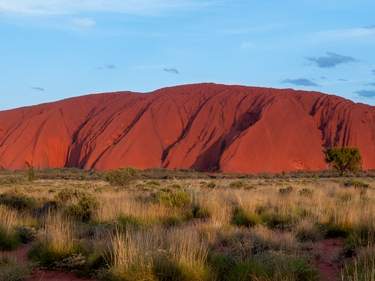
16 days / from 3300 USD
Explore South Australia and the Northern Territory
Explore South Australia and the Northern Territory on this self-drive adventure. Start in Adelaide and make your way over the Ayers Rock, Kings Canyon, and Alice Springs to the Kakadu National Park and ultimately Darwin.

23 days / from 4150 USD
Cross Western Australia to Darwin
Western Australia offers wonderfully remote outback experiences: from spectacular national parks to sandy deserts, pristine beaches to working cattle stations. This itinerary allows you to explore the way from Perth to Darwin in depth and at your own pace, in your own rental car.
Tailor-made trips for Australia
Visitors from the northern hemisphere should remember that, as early colonials observed, in Australia “nature is horribly reversed”: when it’s winter or summer in the northern hemisphere, the opposite season prevails down under, a principle that becomes harder to apply to the transitional seasons of spring and autumn. To confuse things further, the four seasons only really exist in the southern half of the country outside of the tropics. Here, you’ll find reliably warm summers at the coast with regular, but brief heat waves in excess of 40°C. Head inland, and the temperatures rise further. Winters, on the other hand, can be miserable, particularly in Victoria, where the short days add to the gloom. Tasmania is cooler year-round: while weather in the highlands is unpredictable at all times, summer is a reliable time to explore the island’s outdoor attractions. As a result, the best time to visit Australia depends on where exactly you plan to go.
Dry and Wet seasons
In the coastal tropics, weather basically falls into two seasons. The best time to visit is during the hot and cloudless Dry (from April to Nov), with moderate coastal humidity maintaining a pleasant temperature day and night and cooler nights inland. In contrast, the Wet – particularly the “Build Up” in November or December before the rains commence – can be very uncomfortable, with stifling, near-total humidity. As storm clouds gather, rising temperatures, humidity and tension can provoke irrational behaviour in the psychologically unacclimatised – something known as “going troppo”. Nevertheless, the mid-Wet’s daily downpours and enervating mugginess can be quite intoxicating, compelling a hyper-relaxed inactivity for which these regions are known; furthermore, the countryside – if you can reach it – looks its best at this time.
Australia’s interior is an arid semi-desert with very little rain, high summer temperatures and occasionally freezing winter nights. Unless you’re properly equipped to cope with these extremes, you’d be better off coming here during the transitional seasons between April and June, or October and November.
In general, the best time to visit the south is during the Australian summer, from December to March, though long summer holidays from Christmas through January mean that prices are higher and beaches more crowded at this time. In the tropical north, the best months are from May to October, while in the Centre they are from October to November and from March to May. If you want to tour extensively, keep to the southern coasts in summer and head north for the winter.
The nationwide festivals listed here all include, necessitate and are, in some cases, the imaginative product of prolonged beer-swilling. Why else would you drive to the edge of the Simpson Desert to watch a horse race? More seriously, each mainland capital tries to elevate its sophistication quotient with a regular celebration and showcase of art and culture, of which the biennial Adelaide Arts Festival is the best known.
Besides the major events listed here, there’s a host of smaller, local events, many of which are detailed throughout the Guide. All cities and towns also have their own agricultural “shows”, which are high points of the local calendar. The Christmas and Easter holiday periods, especially, are marked by celebrations at every turn, all over the country.
- Sydney Festival Sydney, NSW; starts the first week sydneyfestival.org.au . Three weeks of festivities all over the city – in parks, theatres and cinemas – with something for everyone, from new film and outdoor jazz to contemporary art and current-events lectures.
- MoFo TAS; mid-Jan mofo.net.au . Launched in 2009, this is one for the hipsters – a small week-long Hobart festival of alternative rock and arts curated by the cutting-edge Mona gallery.
- Australian Open Tennis Championship Melbourne, VIC; mid- to end Jan australianopen.com . The year’s first Grand Slam attracts hordes of zinc-creamed tennis fans to see the best players in international tennis compete for two weeks at Melbourne Park.
- Tamworth Country Music Festival NSW; mid-Jan tcmf.com.au . Ten days of Slim Dusty and his ilk, attracting over 50,000 people and culminating in the Australian Country Music Awards.
- Big Day Out Various locations; late Jan to early Feb bigdayout.com . Australia’s and New Zealand’s largest outdoor music festival, with over 250,000 people gathering at six different locations over successive weekends to see Australian and international indie and alt-rock bands. Kicks off in Auckland, then moves on to the Gold Coast, Sydney, Melbourne, Adelaide, and finally Perth.
- Sydney Gay and Lesbian Mardi Gras NSW; early Feb to early March mardigras.org.au . Sydney’s proud gay community’s festival runs throughout Feb and culminates at the beginning of March with an extravagant parade and an all-night dance party.
- Perth International Arts Festival Perth, WA; mid-Feb to early March perthfestival.com.au . Australia’s oldest and largest arts festival, attracting renowned international artists, performers and attendees to indoor and outdoor events all over the city for three weeks.
- Adelaide Arts Festival SA; late Feb to mid-March in even-numbered years adelaidefestival.com.au . The country’s best-known and most innovative biennial arts festival, featuring opera, theatre, music and dance, and including the largest literary festivals in the world. Not to be missed.
- Australian Grand Prix Melbourne, VIC grandprix.com.au . Formula 1 mania takes over Melbourne for four days, with action centred on the purpose-built Albert Park race track. As well as the high-adrenaline 58-lap race, which takes place on Sun, off-track entertainment includes air displays, rides, go-karting and glamour in the form of the pit girls.
- Womadelaide Adelaide, SA; first or second weekend womadelaide.com.au . Part of the Womad festival circuit; three-day party featuring world music, folk, blues and jazz.
- Moomba Festival Melbourne, VIC; second weekend. A long weekend of partying in Melbourne, beginning and ending with fireworks, with lots of water-based fun on the Yarra River in between. Don’t miss the “Birdman Rally” in which various flying contraptions assemble at Princes Bridge and attempt to defy gravity.
- Melbourne International Comedy Festival Melbourne, VIC; comedyfestival.com.au . Leading laughathon that attracts more than a thousand home-grown and international comics throughout April. Based around the Melbourne Town Hall, but with programmes in over fifty other city venues, spanning stand-up comedy, plays, film, TV and street theatre.
- Sydney International Film Festival Sydney, NSW; early June sff.org.au . Important film festival, running for over two weeks and based at four CBD venues including the glorious State Theatre.
- Barunga Cultural and Sports Festival Katherine, NT; Queen’s Birthday weekend (second weekend) barungafestival.com.au . This three-day festival, held on Aboriginal land near Katherine, offers a rare and enjoyable opportunity to encounter Aboriginal culture in the NT. No alcohol.
- Laura Dance and Cultural Festival Cape York, QLD; third weekend (held in odd-numbered years) lauradancefestival.com. Three-day, alcohol-free celebration of authentic Aboriginal culture.
- Imparja Camel Cup Alice Springs, NT; second Sat camelcup.com.au . This event originated with camels charging down the dry Todd River; the camel-racing now takes place at Blatherskite Park, with free buses to the site. Entry fee.
- Darwin Beer Can Regatta NT; early Sun beercanregatta.org.au . Mindil Beach is the venue for the recycling of copious empties into a variety of “canstructed” seacraft. Also a thong-throwing contest; Territorian eccentricity personified.
- Melbourne International Film Festival VIC; end July to mid-Aug miff.com.au . The country’s largest and most prestigious film festival, lasting for nineteen days with a focus on Australian, cult and arty films, plus a multimedia component.
- Isa Rodeo Mount Isa, QLD; second or third weekend isarodeo.com.au . Australia’s largest rodeo – a gritty, down-to-earth encounter with bulls, horses and their riders.
- Henley-on-Todd Regatta Alice Springs, NT; third Sat henleyontodd.com.au . Wacky races in bottomless boats running down the dry Todd River; the event is heavily insured against the river actually flowing.
- Birdsville Races QLD; first weekend birdsvilleraces.com . Once a year, the remote Outback town of Birdsville (population approx 120) comes alive for a weekend (Fri & Sat) of drinking and horseracing – a well-known and definitive Australian oddity.
- Brisbane Festival Brisbane, QLD; mid-Sept brisbanefestival.com.au . Huge seventeen-day festival featuring performing arts, food and drink, music, writing, kids’ stuff and fireworks.
- Royal Melbourne Show VIC; mid-Sept royalshow.com.au . Eleven-day agricultural bonanza, featuring sheepshearing, dog and horse shows and performing pigs. Rides, candyfloss and contests for everything from Jersey-Holstein cows to wood-choppers.
- Shinju Matsuri Festival Broome, WA; third weekend shinjumatsuri.com.au . Probably the most remote of the big festivals, but the town packs out for WA’s ten-day Oriental-themed pearl festival.
- AFL Grand Final Melbourne, VIC; last Sat afl.com.au . Huge, testosterone-charged sporting event. The Australian Football League final is held at Melbourne’s MCG and is accompanied by lots of beer drinking and celebrating, depending on which team wins.
- Australian Motorcycle Grand Prix Phillip Island, VIC motogp.com.au . Held over one weekend, this is one of the last races of the World Championship and a popular pilgrimage for all motorbike enthusiasts.
- Melbourne Festival VIC; mid-Oct melbournefestival.com.au . One of Australia’s pre-eminent annual arts events, this seventeen-day festival has a cast of thousands drawn from the fields of music, multimedia, opera, dance and theatre. Ticketed and free performances are held both indoors at various venues and on Melbourne’s streets.
- Melbourne Cup Flemington Racecourse, VIC; first Tues melbournecup.com . Australia’s Ascot, a 148-year-old horse race that brings the entire country to a standstill around the radio or TV.
- Targa Tasmania Statewide, TAS; first or second weekend targa.org.au. One of Australia’s top motor events with 300 cars, many vintage, on a six-day, 2000km rally. A petrol-head’s paradise.
- Christmas Day Sydney, NSW. Australia’s largest festive day event is held on Sydney’s Bondi Beach – usually with bands and DJs and a fair slug of alcohol. The days of free partying are long gone and the festivities are now by ticket only, although a section of the beach remains accessible to the public.
- New Year’s Eve Sydney, NSW. The fireworks display from Sydney Harbour Bridge is a grand show, and a fine example to the rest of the world of how to welcome in the New Year. To get the best views along the water’s edge, get there while it’s still light.
- Sydney–Hobart Yacht Race Sydney, NSW rolexsydneyhobart.com . Crowds flock to the harbour to witness the start of this classic regatta, which departs Sydney at 1pm on Boxing Day and arrives in Hobart three days later.
The Rough Guides to Australia and related travel guides
In-depth, easy-to-use travel guides filled with expert advice.
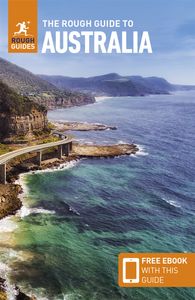
Travel advice for Australia
From travel safety to visa requirements, discover the best tips for traveling to Australia
- Eating and drinking in Australia
- Getting around Australia: Transportation Tips
- Travel Health Australia
- Sports and Outdoor activities in Australia
- How to get to Australia
- Travel Tips Australia for planning and on the go
- Travelling with children in Australia
Find even more inspiration here

- Travel Tips

written by Andy Turner
updated 14.05.2021
Ready to travel and discover Australia?
Get support from our local experts for stress-free planning & worry-free travels.
- Where to stay
- Travel advice

Best Time to Visit Australia
What are the best times of the year to travel to australia, answering this question is not as simple as it may seem..
It significantly can be influenced by your interests, your budget and your preferences for what you believe is the ideal climate for you to travel to Australia. Being Australia travel agents helping people travel to Australia since 1999, we’ve gathered the most important factors to consider when deciding the best time to travel to Australia for your vacation. And if you need inspiration on what to ‘see and do’ for your trip to Australia, we also invite you to browse our popular Australia Vacation packages or contact us directly, we’d love to help you plan your trip. Here are the factors you should consider when you start planning your trip to Australia…
- Australia’s Weather & Climate
- Australian School Terms & Public Holidays
- Seasons for Flight Prices to Australia (low or high season)
- Seasonal Activities
- The Best Time to Travel to Australia
1. Australia’s Weather & Climate
When will the Australian climate be most comfortable for you based on your planned vacation activities? Here are some useful facts and resources on Australia’s climate Averages, rainfalls and water temperatures to help you decide.
Australian Seasons
- Spring: September – November (lovely)
- Summer: December – February (hot)
- Autumn: March – May (lovely)
- Winter: June – August (cool, but not really cold)
Australian Temperatures
As a starting point, its important to know that the size of Australia compared to the USA is only slightly smaller in land mass – so Australia is huge! So there are large differences in temperatures across Australia on any day. The further north you travel (closer to the equator) the hotter it gets, which is the opposite for the USA.
The coldest it gets in Australia’s most visited tourist destinations is around 32F (freezing) in places like Uluru or Canberra during winter nights in July/August. There are not many snowbound cities in Australia, but you might see snow in southern regions of New South Wales, Victoria and Tasmania.
Weather Averages: Lowest Temperatures (at night) for Popular Australian Tourist Destinations. Measured in Degrees Fahrenheit (F)
The hottest (dry heat) is about 100F at Uluru in the peak of summer in December/January. And with 100% humidity it can reach about 90F in Cairns and Darwin during those same months.
Weather Averages: Highest Temperatures for Popular Australian Tourist Destinations. Measured in Degrees Fahrenheit (F)
For more detailed climate averages for each city in Australia see Weather in Australia , or the Australian Government Bureau of Meteorology: http://www.bom.gov.au/. Other useful statistical information on Australia can be found at the various Official Country and State Australia Tourism websites.
Rainfall (Tropics)
Wet Season: November – May (Most rainfall occurs in January, February & March.)
Dry Season: June – October
The “Tropics of Australia” is the region north of the “Tropic of Capricorn” (approximately the top third of Australia) and includes cities like Cairns & Darwin. Rainfall is an important consideration if you want to spend some of your vacation exploring the Outback at Kakadu National Park in Australia’s far north – the “wet season” is not the time to do it. However if Scuba Diving the Great Barrier Reef is more up your alley, then it won’t matter if you travel in the wet season – either way you’re going to get wet and have fun!
Rainfall Averages (inches) for popular Australian Tourist Destinations
Stinger Season: November – May (wet season)
Little marine critters and jellyfish that sting are collectively known “Stingers”. They generally don’t affect the Great Barrier Reef. Stingers aren’t overly energetic animals and have not caused any problems around the reef and islands but occur mainly around the rivers, creeks and beaches north of, and around, Bundaberg. They are easy to avoid, but cause discomfort if you are stung. The more serious ones are ‘Box Jellyfish’ which have been known to be lethal. Stinger season is from typically November through May. If there are stingers present there will most likely be signs posted. At these locations you will need to swim inside the stinger enclosures provided or wear a stinger suit. A stinger suit is like a ‘sun suit’ – a long leg, long sleeve, one piece swimsuit typically made from lycra (or similar) .
2. Australian School Terms & Public Holidays
During Australian Public & School Holidays seat availability on flights, tours and accommodation may be limited, unavailable or priced very high due to high demand. You may like to consider avoiding travel during Australia’s Public & School Holidays.
Australian School Terms & Holidays: https://www.australia.gov.au/school-term-dates
Australian Public Holidays: https://www.australia.gov.au/public-holidays
3. Seasons for Flight prices to Australia (low or high season)
Airfare pricing to Australia is significantly affected by the “Dates” you chose to travel ranging from Basic Season (cheap) to Peak (expensive).
Airline Seasonality:
Basic (Cheap): May – June and July – September
Shoulder: February – April, June – July and September to November
Peak (Expensive): December – January
Read our Airfare Pricing Tips and our Sale Airfares
4. Activities that are “seasonal”
Seasonality of activities that are your “passion”, or events that you want to attend, may mean that all the other factors above become irrelevant. For example, if you are a Diver, it may be a highlight of your trip to Dive with the Minke Whales which migrate to the Great Barrier Reef in June. Or maybe you want to attend the Australian Open (Tennis) which then restricts you to dates surrounding that event irrespective of all other factors. Nevertheless, if you are at least aware of all the other factors, it may help you during the planning process to decide whether to spend more time vacationing after the event instead of before.
5. The Best Time to Travel to Australia
For me, the best time to go to Australia is either Spring (September – November) or Autumn (March – May), not too hot nor too cold. This avoids the busy Summer Break (School Holidays) and the peak Christmas traffic (most expensive flight prices). If traveling up north to the tropics and with no other influencing factors, I’d choose to vacation in Spring, just before the wet season.
However, given I have family in South Australia, the deciding factor for me is to vacation around family events (birthday celebrations & Mothers Day) which are in Autumn.
We hope you’ve found this information useful. If you have any questions, need help or advice on planning your trip to Australia, please don’t hesitate to contact us directly, toll free on 888-359-2877 (M-F, 8.30am – 5pm CT USA) – we’d love to help you plan your vacation to Australia. Be on the lookout for our special sales on discount trips to Australia !
Veronica Pearce AboutAustralia.com
Get inspired! Browse our travel packages to Australia…
- Newsletter Signup
- Privacy Policy
- Terms of Service
- Australia Vacations
- Tailor-Made Vacations
- Escorted Tours
- Travel Agents
- Travel Insurance
- Travel Visa
- FAQs & Australia Travel Tips
- Travel Blog
- All Galleries
- Photographers
- Travel recommendations
- The taste of travel
- Tips & tricks
- Travel experiences
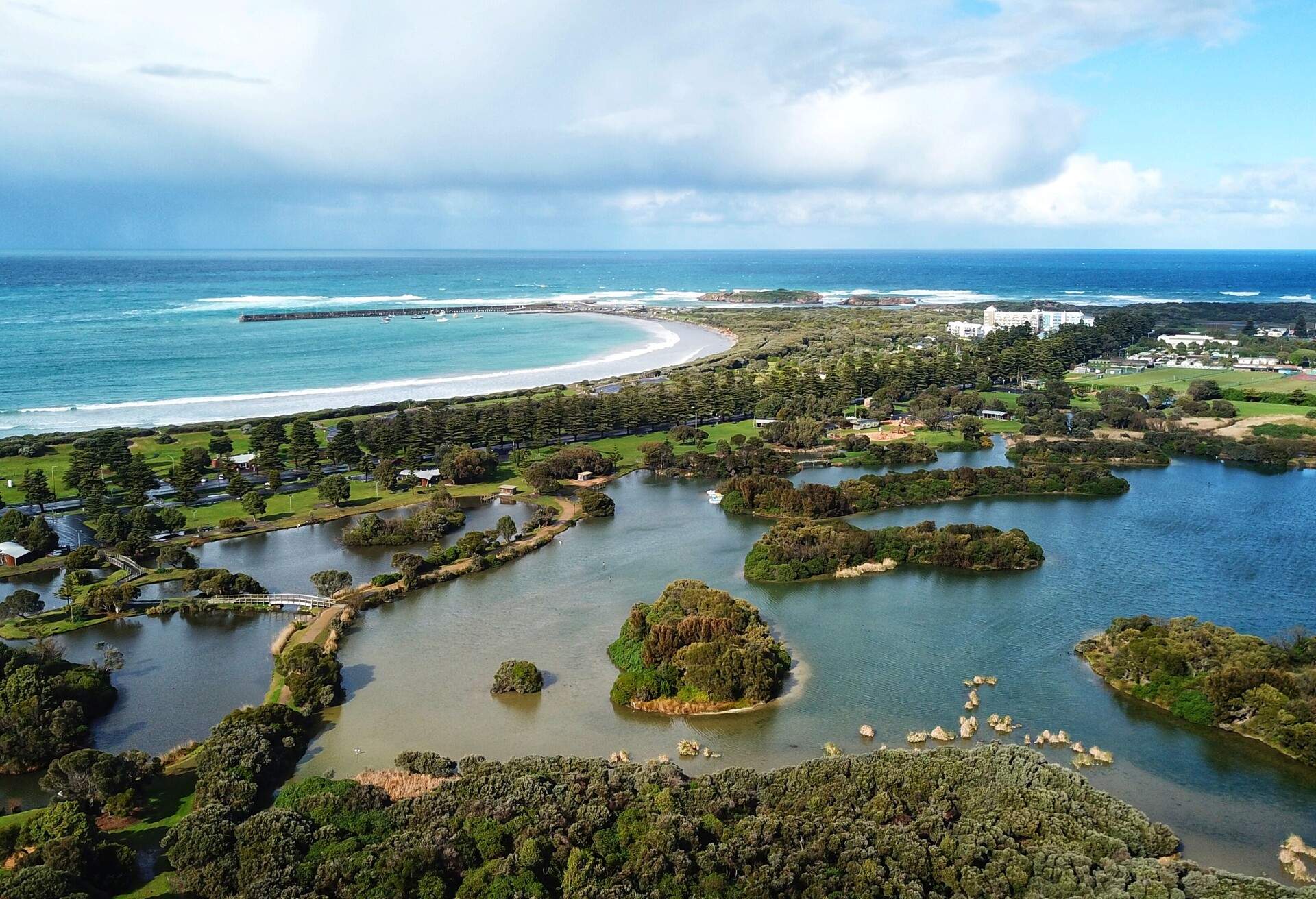
Let’s talk about the best time to visit Australia – The Land Down Under
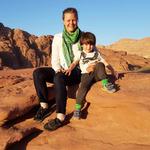
Ever wondered what the best time to visit Australia is? We’ve gone and done our homework on the Land Down Under and provided a brief overview of what the weather is like during different seasons, what festivals you can look forward to, as well as some tips and tricks on how to enjoy your time the most. Strap in and enjoy.
Find stays Melbourne
Why visit Australia
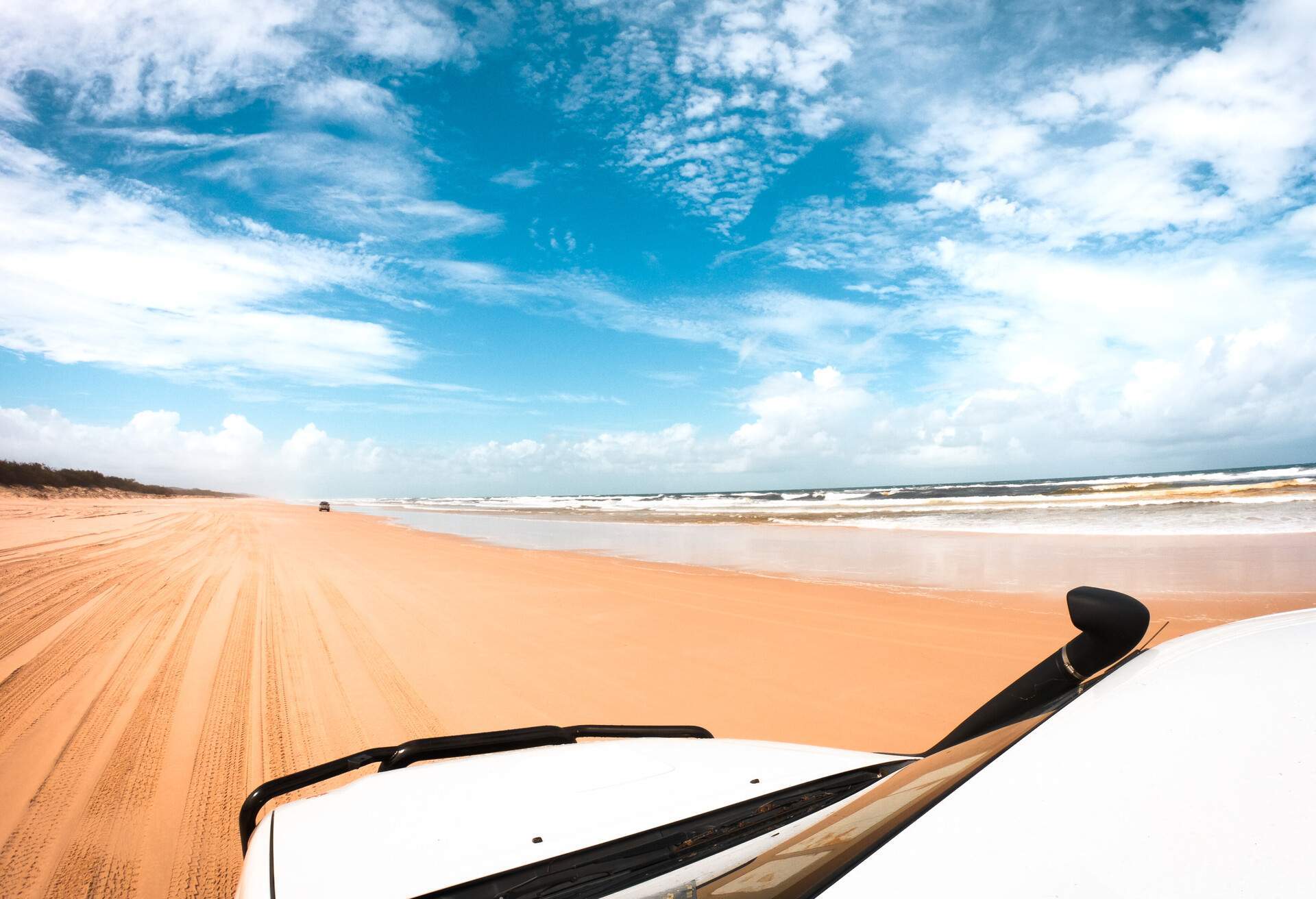
Whether you’re talking about world-class wines, magic beaches, dune bugs in the desert, weird and wonderful wildlife , or want the best cup of coffee in the world, the excellence that Australia is bound to deliver. You could spend a lifetime meandering through different parts of the vast country and still miss out on plenty it has to offer unsuspecting visitors. This is particularly true if you’re in search of adventure. It’s a challenge to find somewhere on the planet more fitting than the Land Down Under.
Find hotels Brisbane
A world of adventure
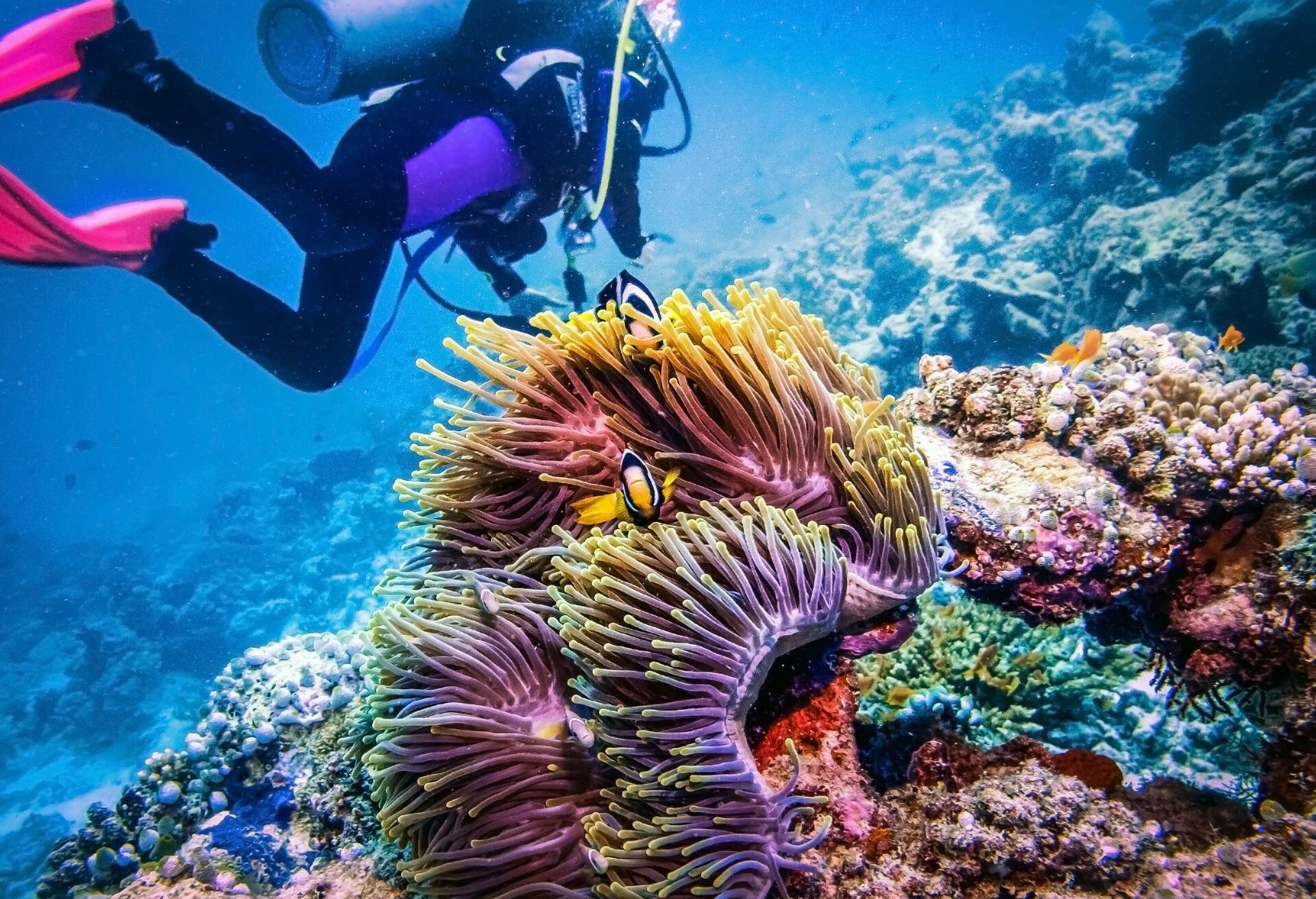
The options for adventure are endless in Australia and cater to all types of explorers. If you’re an ocean lover, you don’t want to miss out on visiting the Great Barrier Reef and experiencing all the weird and wonderful things there, including getting to swim with whales, sharks, and 100-year-old turtles, discovering thousands of coral species, or getting out before droves of box jellyfish flood the scene between November and March. It’s worth noting that jellyfish season can be incredibly painful and sometimes fatal.
Thrill-seekers can head out any time of the year and experience some of the most incredible high-flying, low-diving, fast-driving things to do in the country.
Make your way to Tamborine during any time of the year and take a ride in a tank that served in the Vietnam War, or head on over to Western Australia and join up with Tree Adventure to zipline through a pine forest. During the spring or summer months, you can spend time water rafting in a World Heritage Rainforest, south of Cairns along the Tully River’s most famous rapids, the Theatre Rapid. The list is endless.
Find hotels Sydney
Australian festivals
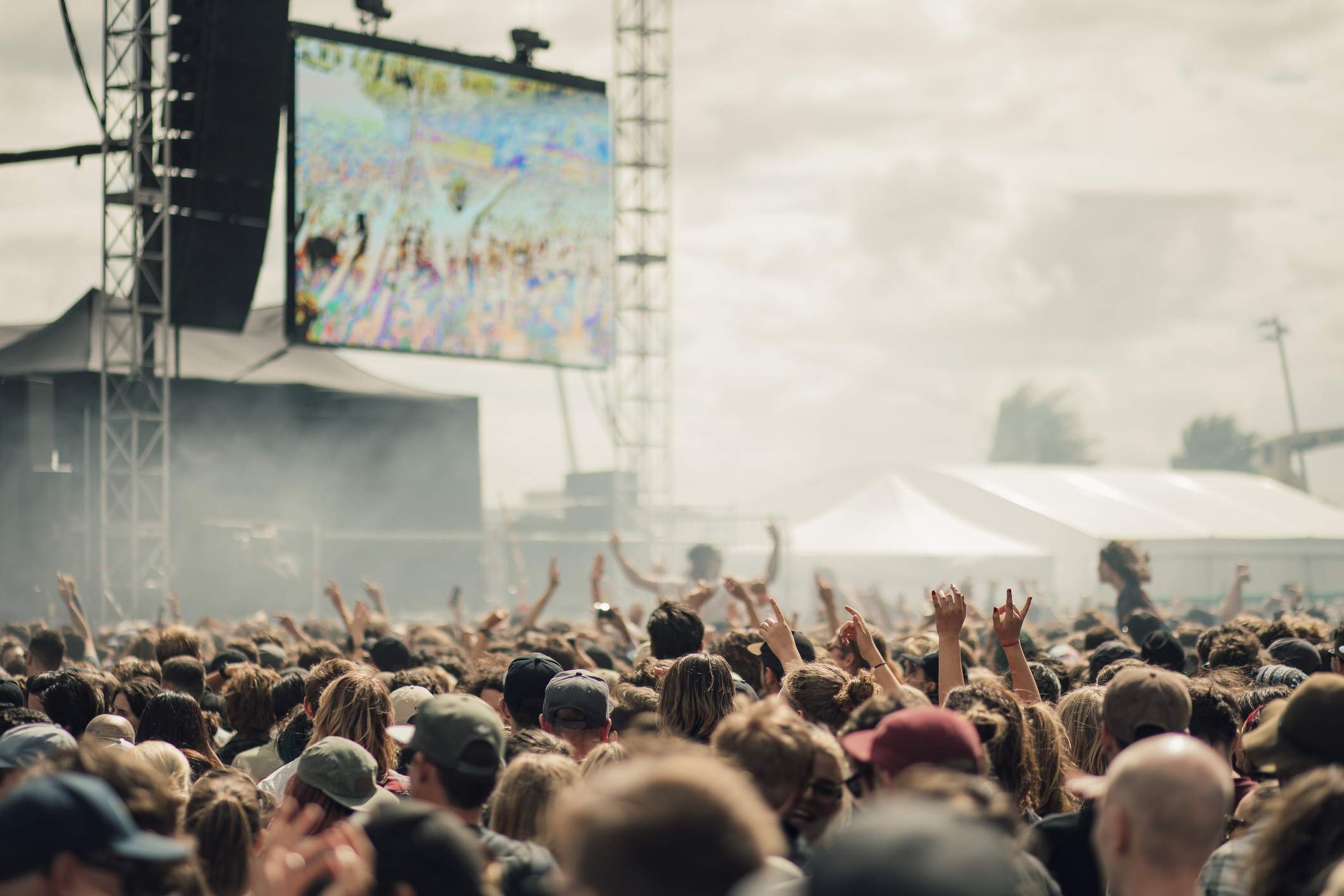
Splendour is one of the biggest and best music festivals in Australia that happens every year in July. Make your way to Byron Bay during this time if want to experience world-renowned musicians doing their thing.
The Melbourne International Comedy Festival happens every year in March and April. This festival brings some of the world’s biggest names in comedy to a wide range of venues across the city. Not only is this an insatiable time for comedy, but equally as insatiable for your belly. The local venues are each supported by local restaurants serving up culinary delights.
The Dreaming Festival happens in June in a small town called Woodford, about 90 minutes from Brisbane. Over three days, the town celebrates indigenous culture through music, dancing, and cooking. The storytelling from indigenous groups is not to be missed and is sure to leave you enthralled.
Vivid Sydney is an annual celebration that transforms Sydney over 23 days through creativity, technology, and innovation. You’ll be treated to a light show that illuminates the city with vibrant 3D projections and glowing light art.
You can’t mention festivals in Australia without mentioning Australia Day, which is considered to be the country’s National Festival. On this day, Australia celebrates the day the shores of Australia were reached by the first fleet on January 26, 1788. Locals and visitors celebrate the day with fireworks, family barbecues, plenty of beer, and never-ending partying. Most of the celebrations happen around Circular Quay, Sydney Opera House, and Harbour Bridge, but you’ll find a celebration wherever you are in the country.
Seasons determine the best time to visit Australia
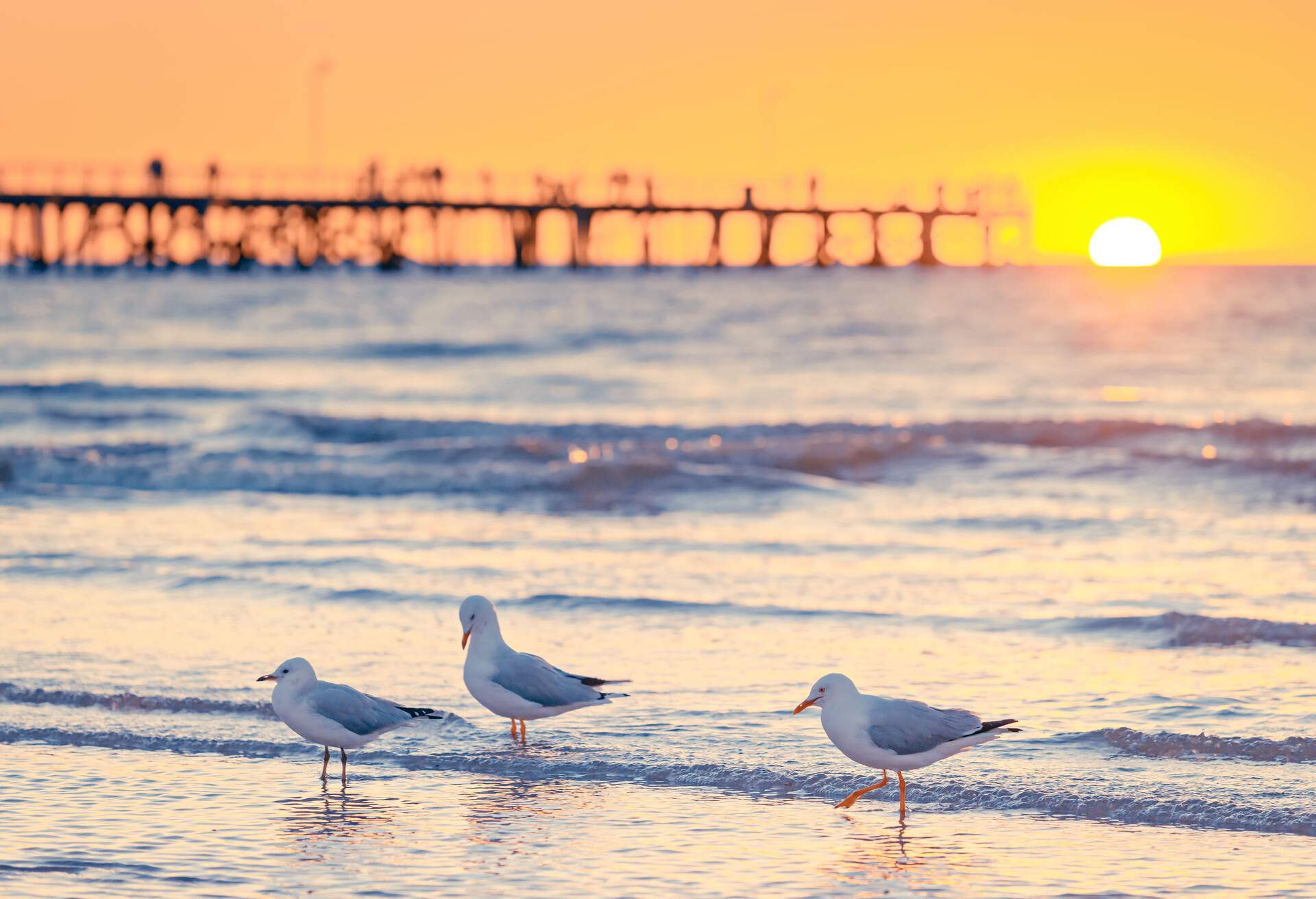
In Australia, the seasons are grouped into four different periods with roughly three months per season.
Spring starts around September and runs through to the end of November. Summer begins in December and runs until the end of February. Fall starts in March and ends in May, while winter in Australia is usually from June until August.
This can be confusing when visiting Australia as the northern half of the country and the tropics don’t seem to follow the same course. These areas differ wildly and nailing down specific seasons is impossible. However, if you’re in the southern half of the country, expect very hot and dry summers, winters that hover around 68°F, and mild spring and fall.
Best time to visit Australia’s Coast
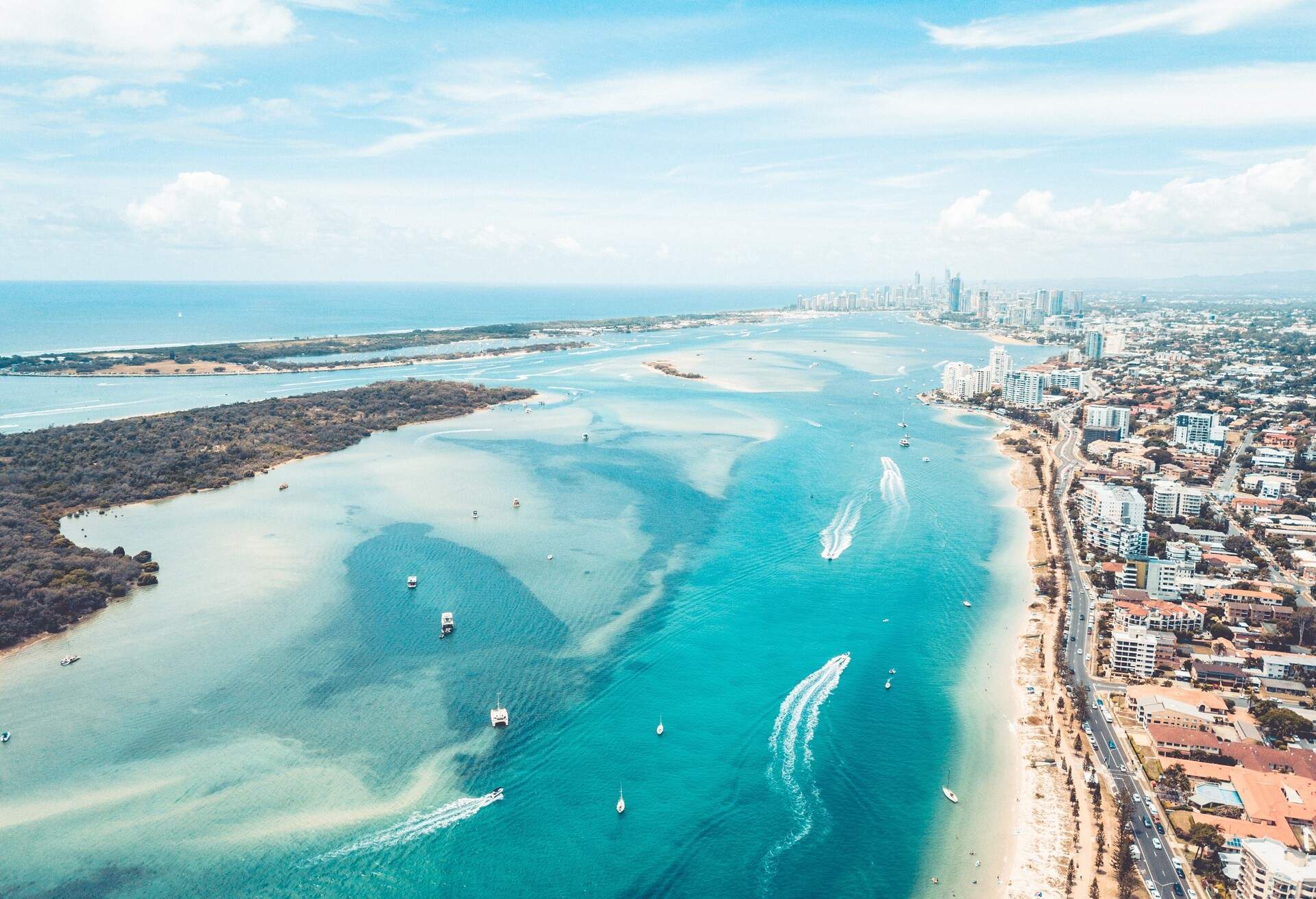
Australia is HUGE, so when we talk about the best time to visit the coast or head to the waters, it’ll differ from place to place. Some areas will be best during the hot summer months, while others will be unbearable during the same time. It all depends on where you end up.
The Coral Coast
The Coral Coast is just north of Perth, with thousands of kilometers of outback desert, laid-back coastal towns, and white sandy beaches stretching on for miles. You’ll find some of the world’s largest coral reefs fringing along this coast.
Coral spawning happens between March and May, and at the same time leading up to July, you’ll have a chance to swim with or at least see Whale Sharks in the region.
Humpback Whales and Manta Rays make their way to the Coral Coast between June and November, while Turtles nest on the shores and later hatch between November and March. So, basically, the best thing to do is to spend a year at the Coral Coast!
Find flights Perth
Sunshine Coast
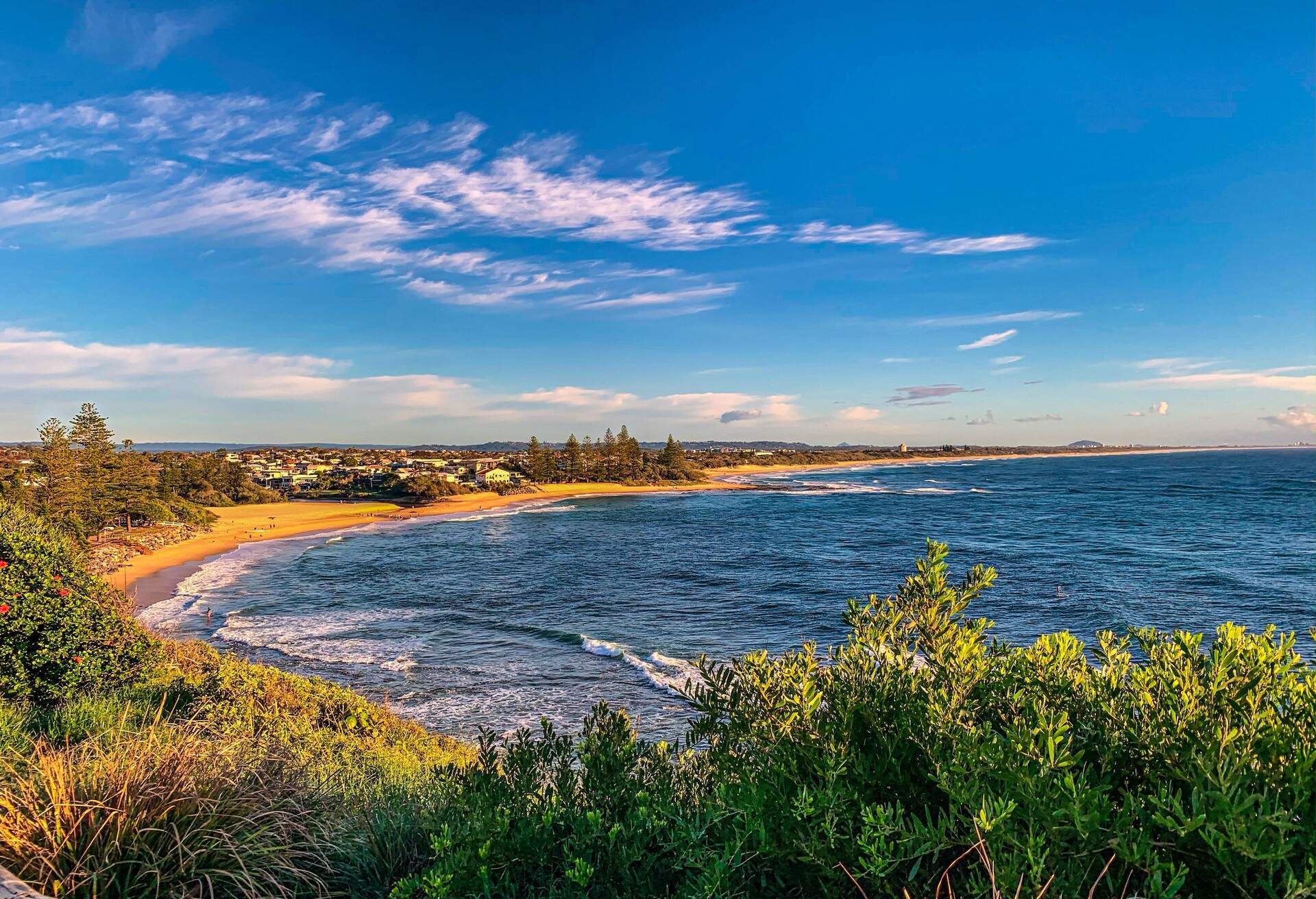
The Sunshine Coast stretches from Caloundra, a coastal city near Brisbane, to the far north where you’ll find the Great Sandy National Park. It’s teeming with beautiful little villages nestled along the coastal sands like Maroochydore and Noosa.
For year-round travel, Noosa is better suited because it receives less rain than the villages in the north and there’s no concern about jellyfish because they don’t come to the region. April to November is usually the best time of year when it’s cloudless and hot, but the temperatures tend to stay around 86°F throughout the year.
The Gold Coast is another year-round destination but the summer months of December to February can get incredibly warm and uncomfortable with sporadic tropical weather. It also tends to be the time of year when everybody flocks there so it’s likely to be crowded.
There’s a large consensus that April to May is often the best time to go because it’s a bit of a shoulder period when it comes to tourism and the weather is pleasant with very little rainfall. There also aren’t any school or college holidays and very few tourists
Things to keep in mind when visiting Australia
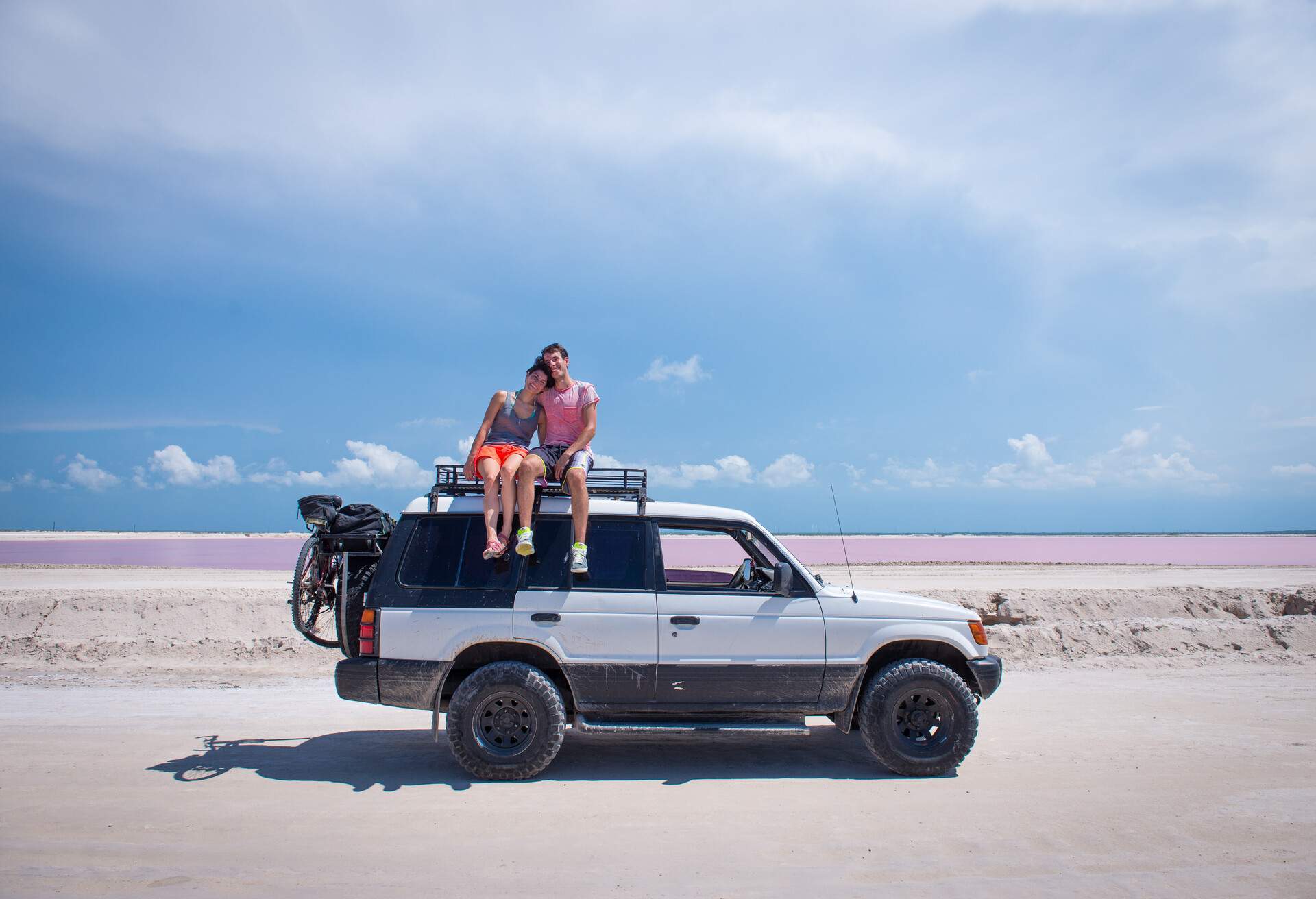
Regardless of when you go, there are a few things worth keeping in mind for your trip.
- Cultural differences – do research on how things are done in the part of Australia you’re going to and remember to be respectful, ensuring you don’t offend anyone while there.
- Get the right mode of transport – many travelers stick with air travel but this can be limiting, especially when visiting smaller towns and cities or moving along the coast. Consider renting a car to explore more.
- Pack appropriately – the weather in Australia can be volatile, especially during the springtime. Consider packing different types of clothing to make sure you’re covered.
- Stick to the shoulder seasons – spring and fall tend to be the least touristy times to visit Australia. Plus the weather is usually lovely.
About the author
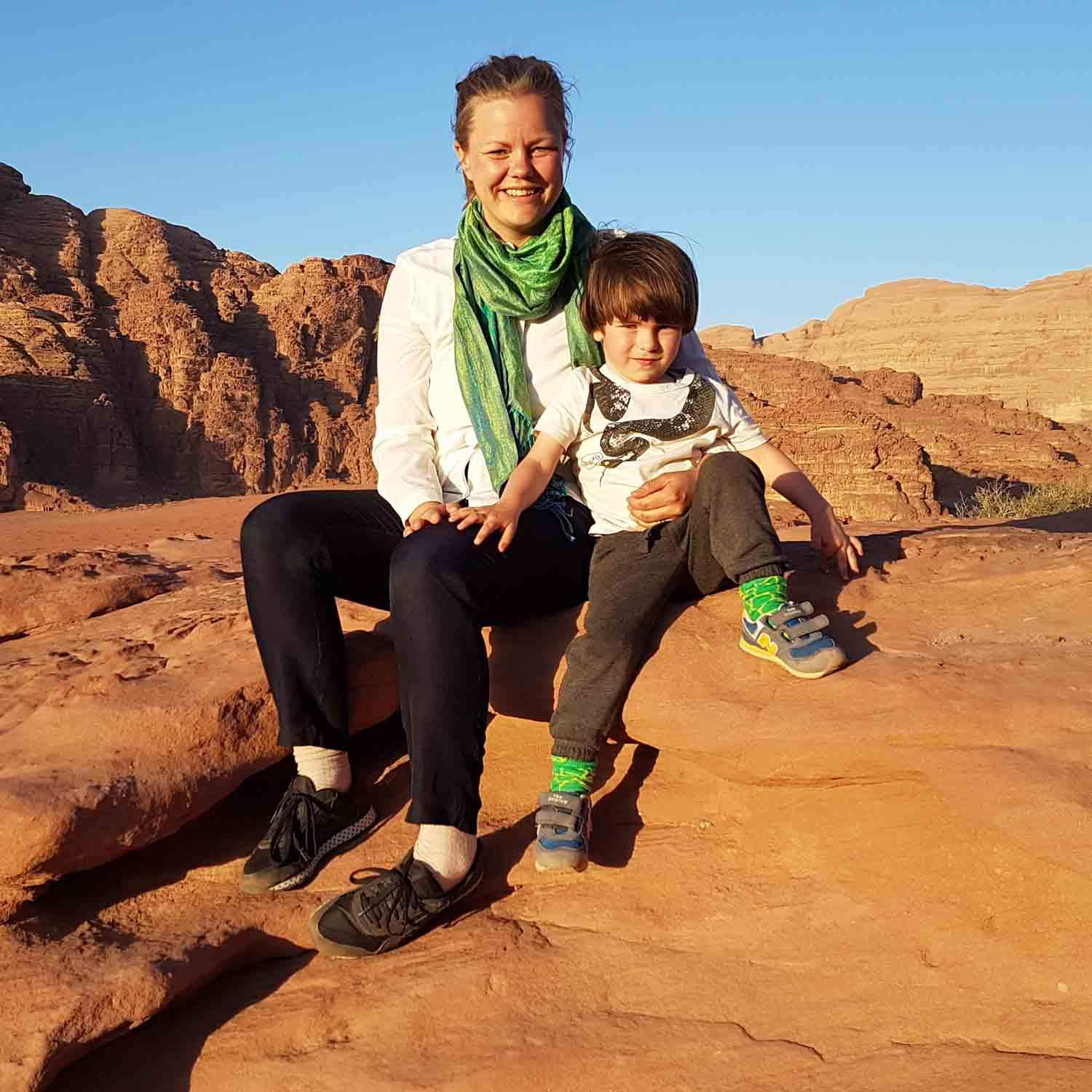
Explore more articles
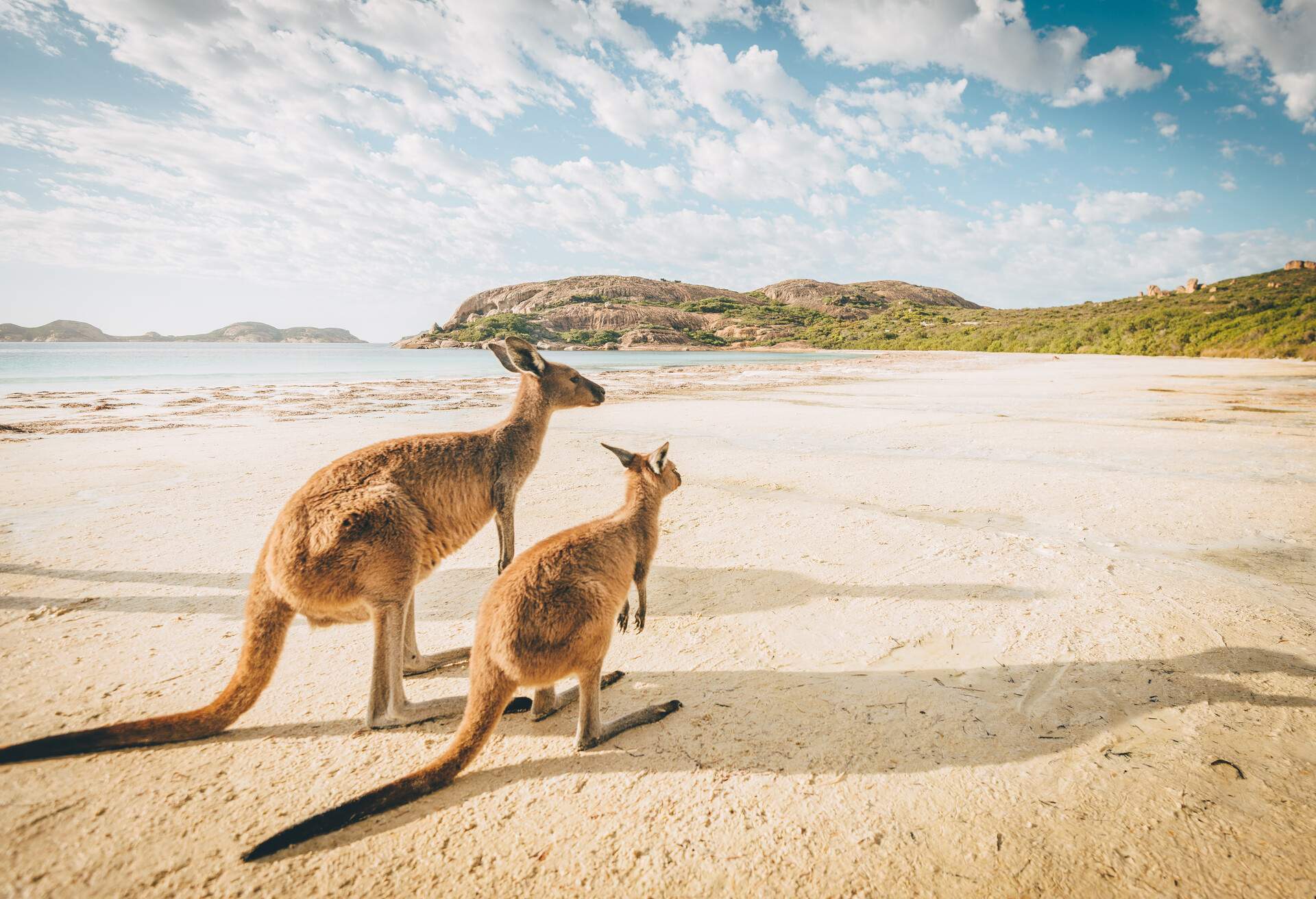
- How we work
- Hotel owners
- Advertise with us
- Airline fees
- Low fare tips
- Badges & Certificates
- Terms & Conditions
California consumers have the right to opt out of the sale * of their personal information. For more information on how we securely process personal information, please see our Privacy Policy .
Do not sell my info ON
* The definition of "sale" under the California Consumer Privacy Act is applicable only to California consumers.

- Southeast Asia
- North America
- Central & South America
- Middle-East
- Australia & South Pacific
- Luxury Awards
- Sustainable Travel
- Family Travel
- Solo Travel
- Beaches & Islands
- Zodiac Travels
- Wellness & Spas
- Accessories
- Points and Miles
- #TheGreenEdit
- T+L Tastemakers
- T+L Experiences
- Destinations
Best Time To Visit Australia For Perfect Weather And Affordable Rates
This travel guide reveals the best time to visit australia if you want to go surfing, hiking, beach hopping, and exploring the wildlife..
By: SARAH REID Published: Mar 24, 2024 10:00 AM MYT

From its dazzling golden beaches to its steamy tropical rain forests, its rich Aboriginal and Torres Strait Islander heritage to its one-of-a-kind wildlife, Australia has a memorable vacation in store for all types of visitors, given you pick the best time to visit.
Visiting a county so big — complete with three separate time zones and eight different climate zones — requires a degree of planning. While city breaks, road trips, and winery visits can be enjoyed year-round, varying regional weather patterns mean highlights like hiking around the iconic monolith of Uluru and snorkelling alongside the Great Barrier Reef ‘s marine life are best experienced during specific months. No matter what you want to experience during your Australia trip, we’ve got you covered.
Best time to visit Australia for ideal weather
Every month presents an opportunity to experience a particular region of Australia at its best. If beach hopping is high on your agenda, aim for the warmer months of September to April in New South Wales and southeast Queensland, and November to March in southern states, including southern Western Australia. Summer is also bushfire season, so keep your eye on local alerts during your visit.
While southern states tend to experience four seasons, northern Australia (encompassing the top sections of Western Australia, the Northern Territory, and Queensland ) has just two: wet (October to May) and dry (June to September). With road access often compromised during the wet season, the dry period is generally the best time to visit the region, especially on a road trip. The wet season also corresponds with cyclone and marine stinger seasons, however, the Great Barrier Reef and rain forest tourism in the Cairns region operates year-round, weather permitting. You can still swim during stinger season, with Lycra stinger suits supplied by marine activity operators.
If you’ve got your heart set on an Australian outback adventure, the cooler months from May to August are most comfortable. For outdoor adventures in the island state of Tasmania, which has a cooler climate than the mainland, the warmer months from October to March are ideal. If you packed your skis, the snowfields of New South Wales and Victoria are typically open from June until early September.
Best time to go hiking in Australia
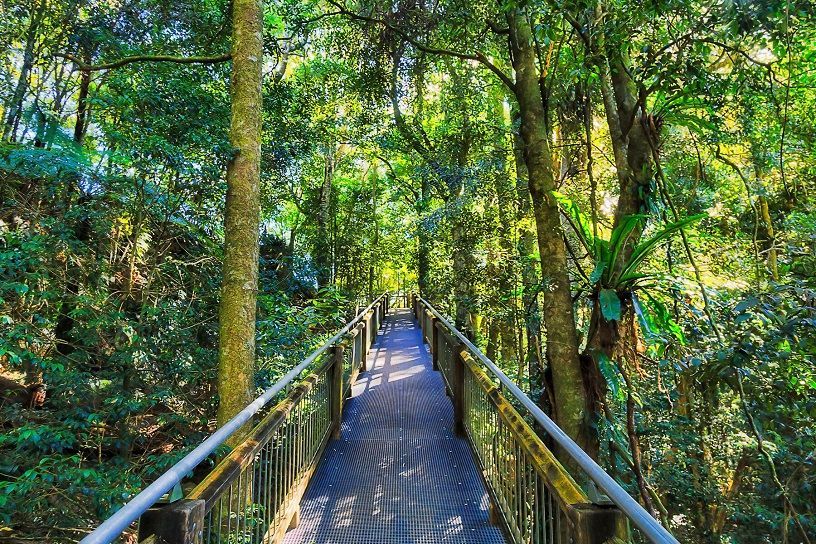
Australia’s national parks and wilderness areas are laced with hundreds of spectacular hiking trails , many of which are best tackled at certain times of the year. As the summer months can be unbearably hot in Australia’s Red Centre, walks in places like Uluru-Kata Tjuta National Park are most comfortably and safely undertaken from April to September.
The opposite can be said for Tasmania, where hiking is more popular during the warmer months, though walkers should be prepared for all seasons (even snow) throughout the year. Hiking in the lush Gondwana Rainforests of Queensland and New South Wales is typically more comfortable in the drier winter months (particularly, June to October), while the best time to wander Western Australia’s famed Cape to Cape Track is in the spring (namely, September and October, when wildflowers are in bloom) and autumn (March to May).
Related Stories
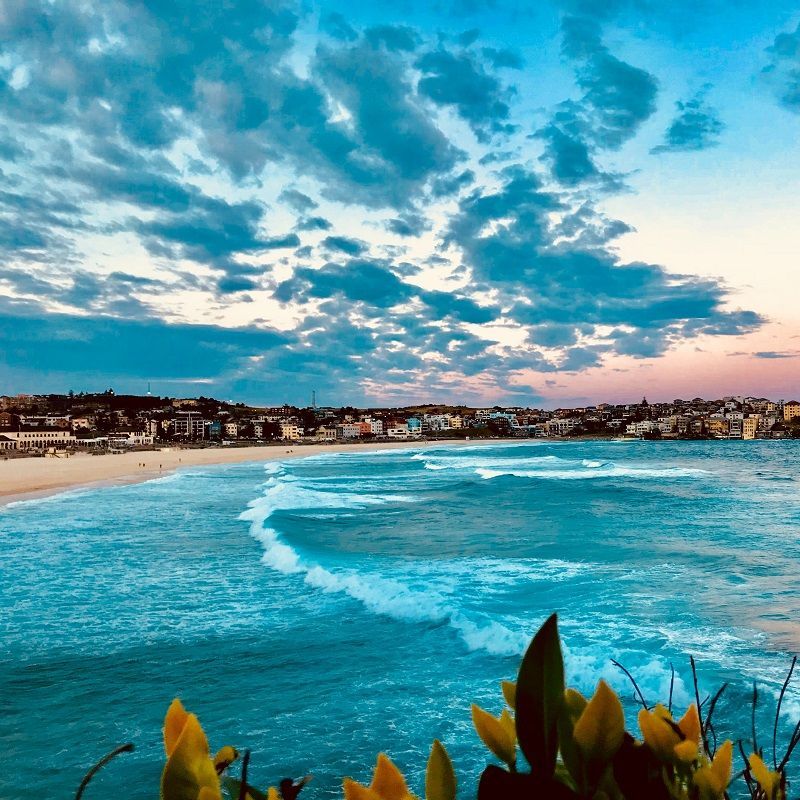
Sun, Sand, Sea And Surf: Bookmark These Best Beaches In Australia For That Summery Vibe

Bookmark This: Australia's Top Unmissable Destinations & Experiences
Best time to go surfing .
Like many other surfing destinations around the world, the best time to visit Australia for surfing doesn’t always coincide with the best months for swimming. If you’re just learning how to surf, there’s generally no bad time to take a lesson in Australia, though you’ll be more comfortable spending hours in the water during the Australian summer months — especially in Victoria and southern Western Australia. Offshore winds combined with more consistent swells during the Australian winter months tend to proffer the best conditions around the country, though there are some exceptions. Storms can still generate big waves at any time of the year.
Best time to see wildlife in Australia

One of the best things about visiting the east and west coasts of Australia between May and November is the opportunity to spot migrating whales, which make their way up and down each coast during those months. The best time to book a whale-watching tour is generally in August and September when humpbacks tend to be most active. If you’ve always wanted to see an orca on the hunt, aim to be in Western Australia’s Bremer Bay between January and April.
The best time to see land-based wildlife is more about the time of day than the time of year, with the hours of dusk and dawn typically the best for spotting native animals such as kangaroos and wombats. From lorikeets to cockatoos and the iconic kookaburra, Australia’s birds (which can often be seen in cities) also tend to sing their hardest when they come in to roost. After dozing in gum trees all day, koalas are also more active in the evenings, making them easier to spot.
Baby animals of all kinds abound in springtime (September to November) across the country. And while sea turtles can be seen in Australian waters throughout the year, time your visit to Queensland between November and January to see turtles come ashore to nest in their thousands, with their babies hatching from January to April.
Cheapest time to visit
Flying to Australia is usually one of the biggest cost hurdles, but if you’re willing to opt for a layover in New Zealand, China, Singapore , or another regional hub, good deals can be found. Airlines like Jetstar (Qantas’ low-cost carrier) and Virgin Australia often advertise great domestic deals, and accommodation prices can drop significantly in low and shoulder seasons, which differ from region to region. City breaks in southern cities are often cheaper in the winter, when there’s still plenty to see — notably Vivid Sydney, during which iconic buildings are illuminated by incredible light installations for several weeks.
This story first appeared on travelandleisure.com
Related: Why Smiths Beach in Western Australia Needs to Be on Your Must List
- New South Wales
- Tasmania in Australia
- tourism victoria
Australia & South Pacific
5 Reasons To Travel To Sydney This Fall
By Paul Feinstein
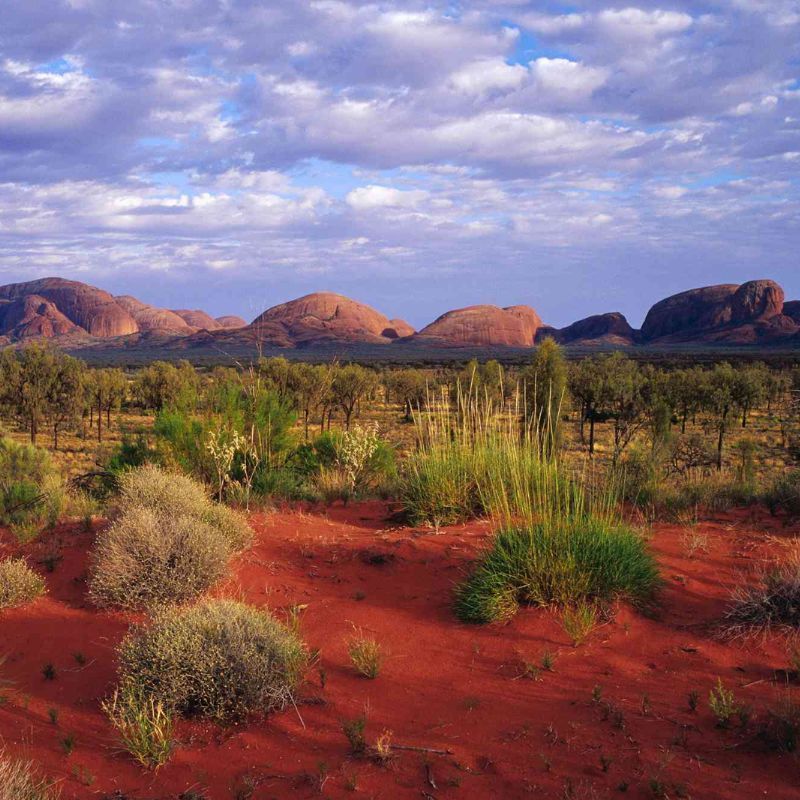
I’ve Been Visiting This Remote Region In Northern Australia For More Than 2 Decades Now
By Drew Kluska

Bookmark This: Australia's Top Unmissable Destinations & Experiences
By Bayar Jain

This Is The First Accessible Dive Center On Australia's Great Barrier Reef
By Evie Carrick

The Top Ten Best things To Do In Melbourne
By Lakshmi Sharath

By Pyusha Chatterjee
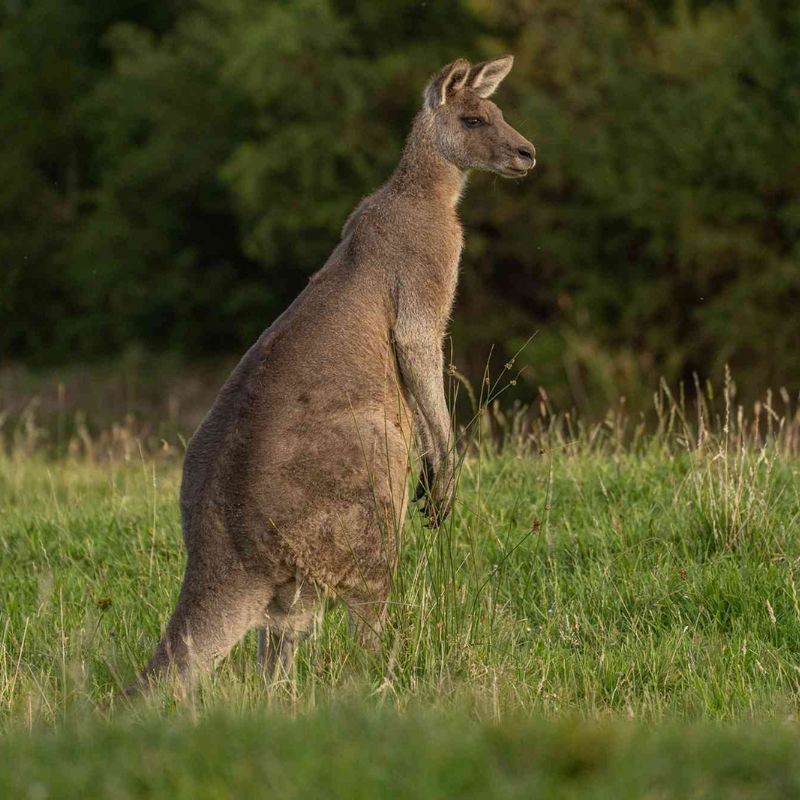
This New Safari In Australia Visits 8 National Parks In 21 Days
By Stefanie Waldek
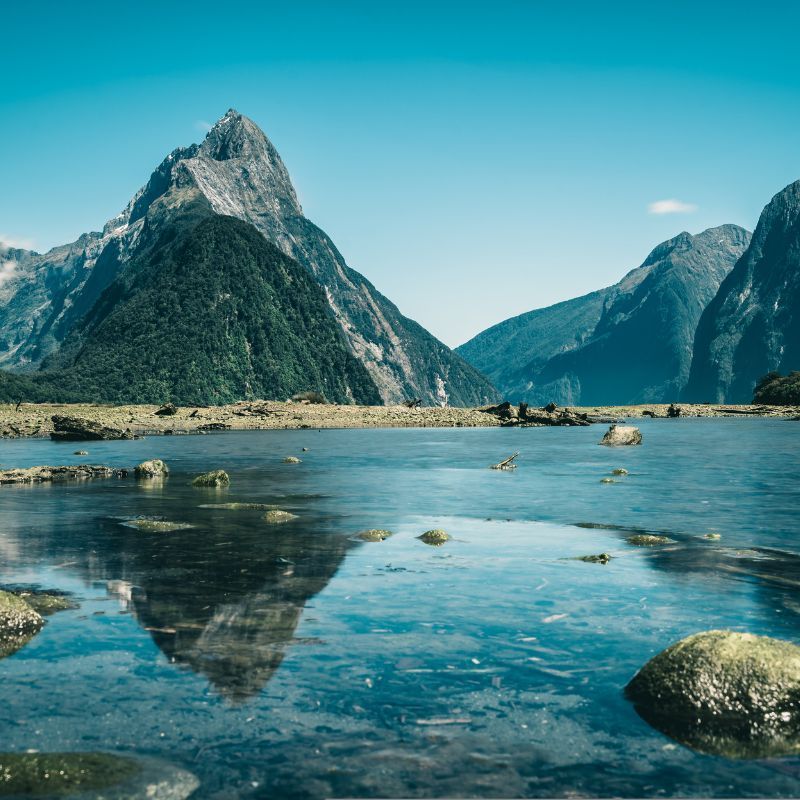
New Zealand: Travel Like Kim Taehyung By Heading To These Spots In His Favourite Country
By ESHITA SRINIVAS
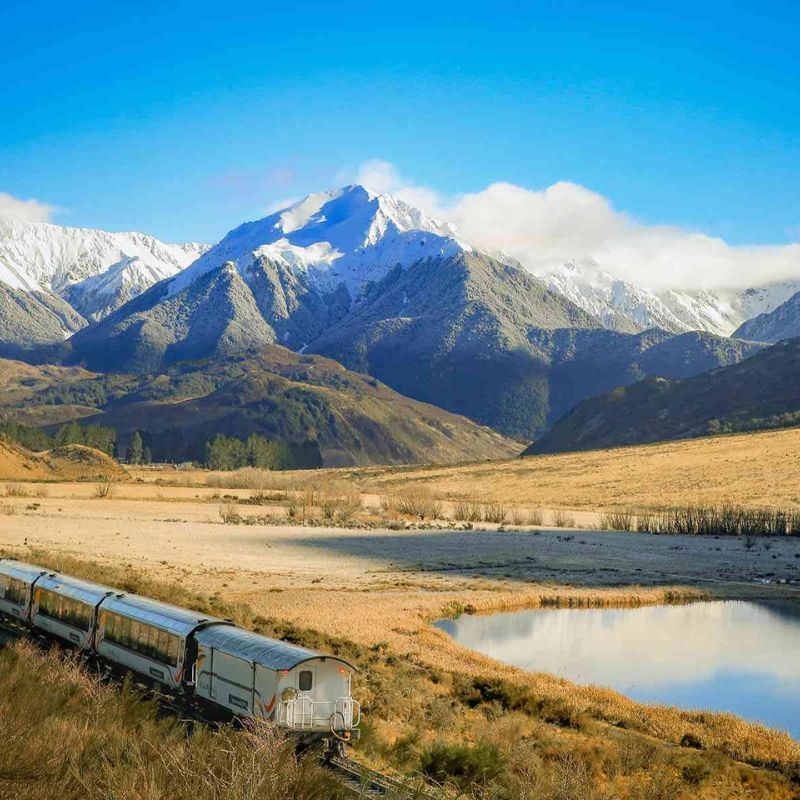
These New Train Tours Might Be The Most Stunning Way To See New Zealand
By Laura Beausire
Subscribe to our newsletter to get the latest on travel, stay & dining.
You’re all set
Thank you for your subscription.
Budget Travel With Gabby
Travel tips, budget travel guides, volunteering stories, more!

Best Time To Visit Australia: A Complete Guide
Wondering when is the best time to visit Australia? Here is my comprehensive guide!
Australia is an amazing country, and I think any eager traveler should definitely visit.
But planning a trip to Australia can be confusing, simply because the country is so huge. Australia is a continent as well as a country. It is massive!
Each corner of the country is different from the next. You could travel to different areas and feel like you’ve entered a new world entirely.
So when considering the best time to visit Australia, you first have to decide which parts of the country you will be visiting.
In this article, I’ll break down the geography of the country as well as the seasons. Hopefully this will help travelers figure out when to visit Australia!

The Best Time To Visit Australia
The best time to visit Australia really depends on where you are going. In general, you’d visit the south in summer and the north in winter to avoid the most extreme weather.
Tasmania in the south has an entirely different climate to Alice Springs in the center of the country, which is different from Tropical North Queensland.
In this article, I’ll list the different areas of Australia based on climate. I’ll discuss the best months to visit each area.
Remember, Australia is in the Southern Hemisphere, so the seasons are reversed from the Northern Hemisphere!
- Summer: December, January, February
- Autumn: March, April, May
- Winter: June, July, August
- Spring: September, October, November
Read next: Pros and Cons of Living in Australia
Different Regions: The Best Time To Visit Australia
I will break this guide down into the different regions of Australia based on climate.
The regions are:
- Tropical North
- Outback/Desert
- Temperate South
I found this photo from The Outback Guide to be pretty helpful for visualizing the climates around Australia.
Many climate maps of Australia differ slightly, and this image differs slightly from the categories I am using. But you get the general idea.
The Tropical North: Northern Territory, Queensland, and Western Australia
The northern section of Australia has a tropical climate. Temperatures are hot year-round, and it is usually very humid.
Tropical weather also brings an abundance of wildlife, rainforests, and unique natural landscapes. Animals and plants are colorful, interesting, and massive. Fruits are exotic and flavorful, waterfalls are lush, coral reefs are thriving, and the wilderness is truly wild.
If you can brave the heat and humidity, the tropical north of Australia is a magical place to visit.
Some highlights in the north of Australia include:
- The Great Barrier Reef, QLD
- The Daintree Rainforest, QLD
- Cairns, QLD
- Airlie Beach, QLD
- The Whitsundays Islands, QLD
- Kakadu National Park, NT
- Litchfield National Park, NT
- Ningaloo Reef, WA
- Cape Range National Park, WA
Best Time To Visit The North of Australia
The best time to visit the north of Australia is anytime between May and October.
Australia’s tropical north has two seasons: wet and dry.
Wet Season: bad weather, no crowds
Wet season runs from roughly November until April . The weather is extremely hot and humid.
There is almost constant rain, and frequent monsoons, tropical storms, and floods. These can lead to floods and road closures, causing travel delays.
Some national parks and landmarks in northern Australia are closed during wet season, and many tours don’t run.
Rainy season is also marine stinger season, so some beaches may be closed for swimming. You can opt for beaches with stinger nets or freshwater swimming holes.
The positives to visiting at this time are the lack of crowds and the cheap flight prices.
Dry Season: Beautiful weather
If you want a better experience in the north, visit between May and October .
This is dry season, and it may still rain but not as much.
You’ll enjoy sunny beach days, clear waters for snorkeling, lower humidity, and cooler temperatures. And most beaches will be open for swimming!

The Outback/Red Center: Northern Territory, South Australia, Western Australia, Rural NSW or QLD
The Outback refers to the remote regions in the center of Australia.
The majority of the Northern Territory, South Australia, and most of Western Australia are often referred to as the Outback. But there is Outback in rural Queensland and New South Wales.
It is basically just the whole middle of the country, away from the coasts.
The Red Center (or Red Centre as the Aussies would spell it) refers to the southern part of the Northern Territory. It is the literal center of Australia, and it is home to Alice Springs and the famous red monolith, Uluru (or Ayers Rock) .
Highlights of the Outback Include:
- Alice Springs, NT
- Uluru Kata Tjuta National Park (Ayers Rock), NT
- Watarrka National Park, NT
- Kings Canyon, NT
- Larapinta Hiking Trail, NT
- Karijini National Park, WA
- Coober Pedy, SA
- Lake Eyre, SA
- Broken Hill, NSW
Best Time To Visit Outback Australia
Winter is the best time to visit the Outback! The Outback of Australia generally has very hot, dry summers and mild or cool winters.
It’s easy to picture the desert as hot and dry all the time, but nights in winter can get pretty cold.
Visit the Outback in Winter, Spring, or Autumn
The best months to visit the rural, desert regions of Australia is probably the winter months of June through August . Most of the days will be sunny and clear, with little to no rain.
But the nights will be cold, with even a chance of frost in July and August. If you’re camping, pack a warm sleeping bag and warm clothes!
September/October in Autumn, or April/May in Spring , will have comfortable temperatures at night and hot, sunny days.
Always bring plenty of water to stay hydrated in the desert, and plan tours for the morning when the heat is less intense.
Avoid visiting the Outback in Summer
Most people would advise against visiting the Outback in Summer.
November through March can be so hot that exploring isn’t very fun. Especially in December or January, the desert heat is extreme.
So winter or the shoulder season is ideal for visiting the Outback or Red Centre of Australia.

The Temperate South: Southern QLD, Coastal NSW, South of Western Australia and South Australia
The middle south of Australia has a more temperate climate, with hot summers and pretty cold winters. The temperatures can vary a bit between states, however.
For example, most of southern Queensland fits into the temperate climate category. But some coastal places like Brisbane , the Gold Coast, Noosa, and the Sunshine Coast have hotter temperatures than inland QLD.
The most visited part of Australia is New South Wales and the Sydney region.
This area has hot summers and cool winters. The Blue Mountains just west of Sydney can get a little snow in the winter.
The south of Western Australia has a similar climate to New South Wales, but has a more humid, Mediterranean climate that doesn’t get as cold.
Overall, the climate in these areas is pleasant. It’s never too unbearably hot and the winters are chilly but beautiful.
Read more: 1 Week in Sydney Itinerary for the Outdoorsy Traveler
Highlights of the temperate, southern region of Australia include:
- Brisbane, QLD
- Gold Coast, QLD
- Sunshine Coast Hinterland, QLD
- Byron Bay, NSW
- Sydney, NSW
- Blue Mountains, NSW
- Adelaide, SA
- Kangaroo Island, SA
- Canberra, ACT
- Margaret River, WA
- Esperance, WA
Best Time To Visit Australia in the Temperate South
The best time to visit the southern areas of Australia depends on the type of trip you want.
Summer: Fun and hot, yet expensive and crowded
If you want a beach vacation with hot sunny weather, outdoor BBQs and parties, and long hours of daylight, visit in the summer.
In the south, Australian summers are dreamy.
You’ll have lots of beautiful weather and plenty of time for hiking, swimming, surfing, sightseeing, and more. There are lots of outdoor beach parties and good vibes in summer.
Temperatures are hot, but not unbearable.
Summer also means higher flight prices and more crowds. Popular beach destinations like Noosa, Bondi Beach or Byron Bay will be packed.

Spring or Autumn: Lovely weather, fewer crowds than summer
Personally, I think the best time to visit places like Sydney, Brisbane, or Perth is Spring.
September through November has really nice weather but it’s not as hot and it’s not as crowded. Flights are also much cheaper than in December or January.
Perth and Brisbane are also a bit hotter than Sydney, and summer temperatures can be uncomfortable.
Autumn is nice too, from March to May . However it can be a bit rainy.
Rain is pretty consistent and unpredictable in the south of Australia, so you’ll probably get a few rainy days no matter when you visit. But the rain is nothing like the Tropical North, so your visit will still be fun.
Winter: cheap flights and no crowds
Winter is still a nice time to visit southern Australia. It will get pretty cold at night and in the early mornings. You may even find snow in mountainous, rural areas.
But winter in places like Sydney or Perth is still warm and sunny during the day. Flight prices are also super cheap and the crowds are scarce.
If you’re an experienced surfer looking for epic waves, you may want to visit NSW or WA in winter. The water can be cold so you’ll need a wetsuit, and the swells get really big. If you’re a beginner surfer, maybe stick to visiting in summer.
Visit Skyscanner to find the cheapest flights to Australia

The Far South: Victoria, Southwest NSW and Tasmania
The far south of Australia includes Victoria, the southwest of NSW, and the island of Tasmania. Here, summers are warm and sometimes hot. Winters are cold and you can even find snow in the mountainous regions.
Highlights of Australia’s south include:
- Melbourne, VIC
- Great Ocean Road, VIC
- Phillip Island, VIC
- Snowy Mountains, VIC and NSW
- Murray River Region, VIC and NSW
- Kosciuszko National Park, NSW
- Freycinet National Park, TA
- Cradle Mountain, TA
- Bruny Island, TA
Best Time To Visit the Far South of Australia
Summer has the best weather, spring and autumn are still nice. winter is good for snow season.
The best time to visit the far south of Australia is definitely summer. Winters can be cold and not that pleasant, whereas summers are warm and sunny but never too hot.
Especially if you’re visiting Tasmania, where the main highlight is outdoorsy activities like hiking and camping, you’ll want decent weather. December through February have the best temperatures.
If you still want to escape the crowds and high flight prices, and you won’t be doing much camping or hiking, visiting the south in Autumn or Spring is nice too.
Melbourne and Adelaide are fun cities that can be enjoyed even with a bit of rain or cool temperatures.
If you’re looking to visit the Snowy Mountains or Mount Kosciuszko and go skiing/snowboarding, you’ll have to visit in winter between June and September for consistent snow.

Recap: When is the best time to visit Australia?
If you’ve read all that information, well done. I really dove into the details, but if you’re actually curious about the climate in Australia and when you should visit, this should be helpful.
Of course there are many factors that affect when to visit Australia, including:
- Which region you are visiting
- What type of vacation you want (beach, snowboarding, hiking, etc.)
- How much money you want to spend
- If you care about crowds or not
Taking all these factors into account, I would say overall the best time to visit Australia is either Spring (September through November) or Autumn (March through May).
You’ll get mild weather in most places, with potential rainfall but not too much. You’ll most likely get some hot sunny days and some cooler nights. Flight prices won’t be at their highest, and crowds will be smaller than in Summer.
Just keep in mind that certain parts of Australia have more extreme temperatures. For example:
- The Outback in the middle of summer is extremely hot
- Camping and hiking in Tasmania is difficult in winter when it’s really cold
- Rainy season in the tropics means floods, road closures, and marine stingers

However, with the right mindset, you can enjoy Australia at any time!
I visited Tropical North Queensland in January-March, right in the middle of rainy season.
It did rain often and floods made traveling difficult. But, we still had some sunny days and everywhere we went had no crowds.
We found lots of freshwater swimming holes to avoid jellyfish, stingrays, and saltwater crocodiles, and we still had so much fun.
I’ve also grown very fond of Sydney in winter. There are no crowds, the weather is still usually sunny and pleasant, and flights are really cheap.
So just have a positive attitude, do a bit of research, and enjoy your time Down Under!
Read next: 15 Travel Essentials To Always Add To Your Packing List

This post may contain affiliate links. Read more about this in my About Me page!
Share this:

One thought on “ Best Time To Visit Australia: A Complete Guide ”
Simple If it’s winter go north. If it’s summer, go south. Can’t go wrong with Tassie.
Leave a Reply Cancel reply
Discover more from budget travel with gabby.
Subscribe now to keep reading and get access to the full archive.
Type your email…
Continue reading
Accessibility Links

Best time to visit Australia: when to go and what to do
With eight climate zones spread across one continent-sized expanse, timing is everything with a visit down under. here we offer a guide to where to go and when, whether it’s wildlife, festivals or simply sunshine you’re looking for.

When is the best time to visit Australia?
T he best months to visit Australia are usually September to November, and March to May. This is because these are Australia’s shoulder seasons, when attractions are still open but less busy, accommodation prices are more reasonable, and weather tends to offer blue skies and warm sunshine.
Australia is an absolutely vast country though and the weather differs hugely by region. The most pleasant time to visit the tropical north, or the “Top End”, is from March to September and the best time to explore Alice Springs and the Red Centre is from March to November if you want to avoid the oppressive summer temperatures.
Main photo: The Australian Alps in New South Wales (Alamy)

When is Australia’s peak season?
December to February is summertime in Australia and the busiest time of the year.
Brits and Europeans looking to escape winter in the northern hemisphere arrive in droves, while it’s also the Christmas holidays for locals. All this — combined with the fact that it’s also cricket season in Australia — means you’ll find the beaches busier and hotel prices up to 25 per cent higher.
Advertisement
The opposite is true of the far north and the desert-filled central regions, when May to August — the antipodean winter — brings lower humidity in the Top End and milder days in the Red Centre.

When are the cheapest months to travel to Australia?
The low season runs from around June to August. Australia’s winter brings cooler daytime temperatures and occasional rain showers down in the south of the country. The upside to this means lower-priced accommodation and fewer tourists, although many attractions run with reduced hours.
Winter is the best time to visit the north of the country, however, and it’s also a good time to go skiing, with the Australian Alps — in the country’s southeast — seeing more annual snowfall than Switzerland .
When is dry season in Australia?
Only Antarctica receives less rainfall than arid Australia, and most of the country has a dry, desert climate. The exceptions are the tropical Top End — which includes the northernmost parts of the Northern Territory plus Queensland’s Cape York peninsula — and the country’s coastal regions, which are temperate but still receive relatively little rainfall. In the Top End the dry season runs from May to October. Perth and the southern part of Western Australia don’t see much rain from November to March. Brisbane and central Queensland are driest from June to November, while in Sydney and New South Wales it’s from July to December. South Australia receives little annual rainfall, but the driest season runs from November to March.

When is the rainy season in Australia?
Rain is of little concern for most holidaymakers heading down under. Western Australia has moderate rainfall in June and July, while the east coast has a little more precipitation over the antipodean winter too. Victoria and Tasmania experience very light, occasional rainfall year-round.
However, if you’re planning on visiting Cairns for the Great Barrier Reef, the Cape York Peninsula, the Kimberly, or Darwin and the national parks of the Northern Territory, you should be aware of the infamous wet season. Running from November to April, “The Wet”, as it’s known with characteristic Australian brevity, is hot and humid with frequent torrential downpours.
This is the cheapest time of year to visit the north, but remote roads can become impassable, effectively closing the Gibb River Road and the Bungle Bungles to visitors. Nonetheless, it’s a dramatic time to see the Top End, with an explosion of vegetation, birds and wildlife, plus awesome waterfalls and thunderstorms.

Which are the best months for wildlife spotting in Australia?
Visit Mon Repos Conservation Park or Heron Island in Queensland from November through to January to see loggerhead and hawksbill sea turtles coming ashore to lay their eggs. Return from late January to March to watch their hatchlings emerge and make a dash back to the ocean.
June to November is the best time to watch humpback whales and southern right whales on their annual migration along the east coast, with Hervey Bay, Byron Bay, and Eden being good places to spot them. They migrate north to sub-tropical waters from June to August and head back towards the Southern Ocean from September to November.
On the Western Australia coast you can see whales from May right through to December.
If you want to swim with the biggest fish in the sea, head to Exmouth between late March and late July, where you can take a boat trip out to Ningaloo Reef, pull on your snorkel set and jump in right beside a colossal whale shark.

Sunshine and rainfall
More than 80 per cent of Australia receives less than 600mm in annual rainfall. Desert regions can get as little as 81mm each year, while the northernmost parts of the Cape York Peninsula receive over 4,000mm. Enjoying around 3,200 hours of bright sunshine each year, Perth is officially Australia’s sunniest city. Hobart in Tasmania is the least sunny with around 2,250 yearly. Compare that with less than 1,500 hours of annual sun in London and you start to see why Australia is so popular with Brits.

Key dates for your calendar
January Australia Day is celebrated each year on January 26 to mark the date when Britain’s First Fleet landed in Sydney Cove in 1788. The event is marked across Australia with festivals, parades, live music, sporting events, and ubiquitous fireworks. The City of Perth Skyworks is the country’s biggest fireworks celebration each year, Sydney celebrates with a regatta, featuring tall ships and the local ferries racing through the harbour, and Adelaide marks the day with a huge parade.
Also dubbed Invasion Day, the chosen date of these celebrations is considered by some to be offensive to indigenous Australians, and Melbourne’s festivities especially focus on multiculturalism.
Sydney Festival also takes place each January with three weeks of art, music, theatre and dance; while Melbourne hosts the annual Australian Open tennis tournament during the last fortnight of January.

March Known as “Mad March” to the people of the city, Adelaide is overrun with arts and cultural festivals each year. From mid-February to mid-March the Adelaide Fringe (the world’s second largest arts festival after the Edinburgh Fringe) takes over the South Australia capital, with thousands of live comedy, music, and street entertainment acts. In late February the more highbrow Adelaide Festival of Arts begins, celebrating theatre, opera, classical and modern music, visual arts, and dance until the middle of March. WOMADelaide is a four-day festival of world music, arts and dance that also comes to the city each March, while Writers’ Week is a week-long literary gathering held mostly in Adelaide’s Pioneer Women’s Memorial Garden.
November The Melbourne Cup is Australia’s most famous horse race, held on the first Tuesday of November each year. Known as the “race that stops a nation”, the event is one of the biggest spectator events in Australia and is attended by more than 110,000 people and marked by parties across Melbourne and, indeed, the whole country. As much a sartorial occasion as an equestrian event, celebrity attendees dress to the nines, and the Fashions on the Field event awards substantial prizes to the best-dressed man and woman.
• Best road trips in Australia
Sign up for the Times Travel Newsletter here .
Related articles


When Is The Best Time To Visit Australia
Michela Australia Travel Planning 14
A detailed guide on the best time to travel to Australia
When is the best time to travel to Australia ? I often get this question from first-time travellers, and it’s impossible to answer it in one sentence because of many factors. Australia is a vast continent located in the southern hemisphere, which means summer starts in December, as opposed to winter in the northern part of the globe. Many factors factor into the best time to go to Australia.
Before answering this question, I need to spend a few words about its geography and Australia’s weather. With double the size of Europe, the Australian continent stretches from North to South and East to West, covering over six thousand kilometres and crossing different climate zones. As climate and weather conditions change, Australia has all types of weather and climates, so there are multiple answers to this question. On this page, you can read about the various kinds of Australian weather by month, climate zones, and seasons to give you an idea of the best time when planning a trip to Australia .
Australia Weather Map
With summer starting in December and ending in March and winter starting in June and ending in September, Australia has three central climate and weather zones:
- Southern coastal regions from West to East Cities like Perth, Sydney, Melbourne, and Adelaide are in the West’s southern coastal regions to Australia’s East Coast. Here winter is between June and August, and summer months are between December and February. While the west coast has excellent and stable weather all year round, the east coast is more changeable.
- Inner central areas of the Outback When we refer to the Outback regions, we generally think of the Red Centre, but the Outback areas are much larger. They cover most of the entire inland territory of Australia. So winter from June to August has the coldest nights with warm days.
- Tropical Queensland, Northern Territory and North Western Australia . Northern Australia and North West Australia are also Outback areas with cold winter nights and warm days and wet with high humidity on hot summer days. You must be sure to travel off-season in spring between September and November or in autumn between March and May. Winter the best time of year to travel to tropical Australia.
Below is a recap of the Australian weather zones and seasons to help you identify the ideal time to travel to Australia.
Australia in December through February (Summer)
In December, January and February, the Australian weather has the hottest temps, which is the time with the warmest months throughout the country. Temperatures can reach 35-45°C all over the southern coastal areas. In the Outback areas (central Australia), temperatures can reach over 45°C with high air humidity.
Travel season is the peak season, with six weeks of school holidays. It is the busiest time and most expensive to travel around Australia for locals and international travellers alike. So if you do not like crowds or want to save money, avoid going to Australia in Summer from December to February.
However, travelling to Australia in summer have benefits too. Here are some:
- Summer is the best time for visiting Tasmania as temps are around 25-28°C and pleasant for hiking and enjoying the outdoors.
- Most outdoor events occur in summer in South West Australia, South Australia, and the South East Coast of Australia .
- Spending Christmas in Australia is also extraordinary as it is different to celebrate the festive holidays on the beach.
- If you are a beach lover and love all water sports, the Australian summer is the best time for planning a trip along the entire East Coast of Australia, including the Gold Coast . However, the Gold coast lies in a subtropical destination with great temperatures.
Australian Weather in March through May (Autumn)
The weather in Australia in March, April and May is pleasant, mostly all over the country. Temperatures can vary a lot, though. On average, they are around 20-25°C; they gradually decrease towards the winter months. This is my favourite time of the year to visit Australia. Here are some excellent reasons why you should the weather in autumn is great to travel around:
- It is the best time to visit many Australian Outback Regions , including Uluru, as the weather is mild, with warm days and cold nights.
- It is the ideal time to visit South Western Australia and South Australia on sunny days. It’s also a great time of the year for tasting local produce and wine and seeing many events.
- Another part of Australia worth visiting between March and May is the Top End and the Kimberley in North Western Australia .
April usually marks the end of the rainy season, so this month is great if you still want to see some lush green vegetation and gorges filled with water and enjoy active birdlife and wildlife in the beautiful Australian national parks .
Australian weather in June, July and August (Winter)
The Australian winter starts in June and goes through July and August. The winter months have the coldest weather in Australia as far as the southern regions are concerned. Winter in Victoria and Tasmania can have icy weather, sometimes with temperatures around zero degrees. For this reason, it is not ideal to visit this part of Australia in winter.
The winter months in Australia are suitable for visiting the following areas:
- The Australia Top End , with Darwin and the Kakadu National Park . Most Top End events are held between July and August. The weather in the Top End is dry, with very low humidity and cool nights.
- North Tropical Queensland , with lots of sunshine and the best dry weather you can have.
- Central Australia and North-Western Australia for the Outback regions. Here temperatures are around 20-25°C, ideal for Australia’s best road trips and camping.
Winter in Northern Australia is a busy time of the year; everyone wants to escape the cold weather of the south and spend a few days at the sunny beaches of North Australia. That’s why I would plan a trip to Northern Australia to secure cheap flights and the best accommodation and tours.
Australia in September through November (Spring)
From September to November, the Australian weather is good almost everywhere. In Northern Tropical Australia, spring, it’s a transitional period from the dry winter months into the rainy months, December to February. With pleasant temperatures around 20-30°C from the West Coast to the South East Coast , this is the best time to go to Australia, especially South Australia, South East Australia, Queensland and Western Australia.
- South Western Australia is best to enjoy between September and November, with wildflowers blossoming. Moreover, you can enjoy whale watching, hiking, biking, and outdoor activities.
- South Australia, Victoria, New South Wales, and the entire East Coast of Australia . Spring and autumn have mild weather, and this time of year is not as busy as in the summer months when locals take their Australian holidays.
- Spring is the best time for road trips, biking, walking tours, and outdoor activities.
The best time of year to visit Australia is March to May and October to December.
Best time to visit Australia’s top destinations
Apart from cities like Melbourne and Sydney, which can be considered city hubs for most travellers coming to Australia, these are some of the most popular destinations on the trip itinerary of many visitors. I have experienced the following places with all kinds of weather and can give you my best tips for making the most of these iconic places in Australia.
When to visit Melbourne
When planning your trip to Australia to the main Australian cities like Melbourne and Sydney, consider all the following tips. Below is a breakdown of the best time of the year to visit Sydney and Melbourne.
March to May and October to December is the best time to spend time in and around Melbourne . It implies milder weather with cooler temperatures. An advantage is that there are many great festivals and events and fewer tourists. A con is that the weather can be rainy and windy too.
The weather in Melbourne in summer is okay because it allows for planning more activities outdoors. Still, due to the ever-changing weather (the famous four seasons in one day that you typically experience), it can go from a rainy summer day with lots of humidity to a dry and hot day with temperatures over 40°C—the so-called scorcher.
Best time of year to visit Sydney
March to May and October to December are the best months to visit Sydney . In Summer, it is way too busy, and Sydney’s weather can also be quite hot. If you plan a beach holiday, the summer months of January and February are probably the best. And if you love to celebrate New Year’s Eve in style and don’t mind the crowds, then you should visit Sydney in the summer.
When to go to Cairns and the Great Barrier Reef
Located on the North East Coast of Australia, the Great Barrier Reef is a tropical destination that attracts many Australians throughout the country in the cold winter months of June, July and August. They are also the busiest months for international visitors from Europe and the US. It is the busiest time for tropical Northern Australia.
So, as a general rule, avoid travelling during these months and prefer April and May, marking the beginning of the dry season. I visited Cairns and Cape Tribulation in September.
The weather was just perfect and quite pleasant. I would also book at least 3-6 months ahead to secure accommodation and the best car rental deals. December to February is the worst time of the year to visit North Tropical Queensland because of the wettest and hottest weather with the highest humidity you can get in Australia.
When to travel to Northern Australia
As said, the best time to visit the Top End of Australia is winter. Still, August, the peak season with the Darwin Festival, is also costly, and finding accommodation at a reasonable price won’t be easy. The main attractions, Kakadu National Park and Arnhem Land are located a 3-hour drive from Darwin; I found this region a bit tricky to plan. From December to February, roads are closed in all national parks; tours are limited from October to April.
Local tour guides will tell you that the best time to visit Kakadu is in March or April when waterfalls are still filled with water. While this is true, it is risky.
You may end there in March and get stuck in town for days because of the rain (this is what happened to me). The best solution is to travel off-season and soon after the rainy season.
May to June is the best time to visit the Kakadu National Park , in my opinion. If you want to go camping in the Kakadu National Park with its lush green and beautiful gorges, this is the best time to travel to the north.
The Red Centre and Uluru
Among all Australian destinations, Australia’s Red Centre is high on the list of most travellers, and a road trip to Uluru represents, for many travellers, the journey of a lifetime. June to August is packed with tourist loads; airfares are the highest, and accommodation is limited. So if you cannot avoid travelling to the Red Centre during this time of year, you must book at least six months ahead to get a good flight deal. December to February is a no-go due to the excessively high temperature (up to 45°C or 115F).
I experienced Uluru twice at the end of March and once at the end of April, which was terrific. I highly recommend a visit in April-May as this is, in my opinion, the best time to visit Uluru.
Temps are around 25-27°C or 77-80F, making it perfect for walking around the Uluru base and enjoying its stunning settings and outdoor activities. When temperatures start going over 30°C or 86F, you will be limited to morning explorations.
Another benefit of planning a trip to Uluru between April and May is that these are the less busy time of the year, cheaper and less crowded.
Be sure you don’t plan your visit for 25th April, a popular public holiday in Australia. This time of the year is busy with families and schoolchildren. June-August is also great for the weather but extremely busy regarding visitors.
The Best Time For a Great Ocean Road Trip
One of the most famous drives in Australia is the Great Ocean Road . However, it is a destination you need to plan with the right weather conditions. Winter can get rainy and windy, so I recommend travelling on warm sunny days to make the most of this fantastic coastal drive.
From October to December and February to March, it is a good time of the year when the weather is more predictable. Avoid the peak season and school holidays between Christmas and January, as finding accommodation (including campsites) along your way will be difficult.
If you can only drive the Great Ocean Road over Christmas or public holidays, follow this advice for booking rental cars .
Best time to visit Broome
Broome is a popular destination for southern Australians who want to escape the cold winter between June and August. It is a beautiful destination and one of the most scenic landscapes you can see in Australia. Again the dry season with cooler weather from April to September is the best time to visit Broome in North-West Australia. The hot and steamy weather makes it a no-go from December to March when it rains heavily.
Many years ago, I went to Broome in February and couldn’t walk because of the high humidity. Being Broome, the getaway to the Kimberley Outback, you need to know that no tours will operate in the Kimberley region between October through March.
So my tip is to visit Broome in May when the dry weather starts; the landscape shows all its splendour, and the green vegetation, the red earth, and the blue sky create a fantastic contrast. July and August are also excellent times to visit Broome . August is less busy than in other months. Nights are cooler at 15°C and lovely warm days with about 28-30°C.
Final thoughts about when to visit Australia
Having travelled extensively around Australia on my own, covering over 100 km from west to east, from bottom to top, I have established that March to May and September to November is the best time to visit Australia hassle-free.
It is, in fact, the milder months when you can travel almost anywhere around the country, with warm days in the southern regions and dry, sunny days in Western Australia and dry weather in Northern Australia. Before planning any trip around Australia, check out this site for the weather zone forecast in Australia .
Please share it on Pinterest for later!
For more info on how to plan your trip to Australia , check these below pages:
Australia Travel
Back to Rocky Travel
First published in 2013, last updated in Jan 2023
If you find this article helpful for your trip, I’d appreciate it if you could support Rocky Travel, book tours, accommodation, and rental car, or purchase my book using the links below. Thank you!
BOOK YOUR TRIP WITH THESE RESOURCES
Get Travel Insurance For Your Trip
Travel with peace of mind: 👉 Compare and Buy Travel Insurance .
Book Accommodation WorldWide
Find the best deals for hotel, homes, villas with 👉 booking.com .
Join Small Group Tours Of Italy For Over 50
Explore Italy with our 👉 Small Group Tours Of Italy .
Find The Best Tours Deals For Australia
Scout for the best guided trips and tours with our 👉 Australian Tours Guide .
Plan & Book Your Australian Adventure
Create the perfect Australia Trip Itinerary with 👉 Your Australia Itinerary eBook and/or Book A Trip Planning Call .
Plan Any Trip With These Resources
Check out our 👉 Travel Planning Bible .

Michela Fantinel
→ Michela Fantinel
Related Posts
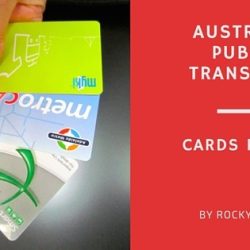
Australia Travel Planning
A Review of Australia Public Transport Cards
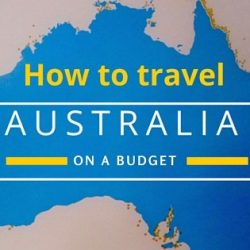
How To Travel to Australia on a Budget

A Guide to Long Term Travel in Australia
14 comments.
Keith Kellett October 9, 2013 @ 12:10 pm
Agree with all … especially if visiting the ‘Top End’ or TNQ, the ‘run-off’ is the optimum time
Robert Bruce March 6, 2014 @ 12:31 am
With two and a half weeks, we spent time in the following areas, driving as much as we could so we could set our own pace.Cairns. The great Barrier reef and world famous rainforest are of special interest here. Sydney. Be sure to spend a day hiking around the Blue Mountains. Red Center Ayers Rock is a place you need to put on your list. Tasmania – Is best to visit in the early spring or early fall. This area will give you a whole other look at the amazing continent with its 19th century history and amazing wilderness areas.
Pete November 14, 2014 @ 4:19 am
we have such a wide and varied climate here. scorching summers and cool temperate winters. A land of diversity, thats why I love Australia so much.
Marvin Sowers January 31, 2016 @ 12:24 pm
We are visiting Sydney in April and it looks like that may be a perfect time to visit. Good to know….and thanks for the information!
Rocky Travel Australia November 15, 2016 @ 11:18 am
April is a quite time of the year for visting Australia but still with warm temps so if you plan to visit Sydney and more Australian cities then March-April is a great choice!
Karyn Jane March 17, 2016 @ 1:11 am
This is a great post! The landscape is so varied here and a lot of people forget that we are an entire continent. There are so many things to be taken into account when visiting, depending on what areas you will be in.
Rocky Travel Australia March 21, 2016 @ 10:11 am
Absolutely. It is essential to pick the right time to visit places in Australia! Thanks for stopping by, Karyn!
Mar November 15, 2016 @ 8:23 am
We are looking to visit Melbourne, Sydney and Cairns (for snorkeling at the great barrier reef.) Options are April or September what would you advise? I know the temperatures vary in each location but looking for pros and cons thank you in advance
Rocky Travel Australia November 15, 2016 @ 11:15 am
September is the best time for visiting the Cairns region and North Tropical Queensland, as it’s the end of the dry season with warm days and cool nights. Whereas in April, the weather can still be wet in the tropics. If you plan to spend more time in Northern Australia and love snorkelling and outdoor activities, t would go with September. April is not bad for all three regions, but please consider that Melbourne and Sydney temps will be around 15-20°C max. I hope that helps!
Ellie March 16, 2018 @ 5:21 pm
I’m dreaming and already planning a trip to Tasmania. I’d like to enjoy the beach holidays, meet unique local wildlife and spend not much money. Is it possible at all? You recommend summer as the best season for the warmest temperatures, and that’s what I need for a seaside vacation. But it must be too expensive and too crowded, so could I possibly choose November or March instead? Are there any recommendations for the best wildlife experience? Thanks in advance for an answer.
Rocky Travel Australia May 6, 2018 @ 3:36 pm
Hi Ellie, sorry for the late reply! For a wildlife experience in Australia, it depends on where you are! The best I can recommend is Wilson Promontory National Park; if you plan a trip to Melbourne in March, that would be just perfect!
Kathy February 23, 2019 @ 6:31 pm
Planning to visit Tasmania this year and this article is helpful for us to decide when is the best time of the year to visit. Thank you very much.
Linda Evans January 16, 2020 @ 12:28 pm
I was planning on visiting Adelaide in July and August with my two sons who will be 8 and 14. I was hoping to make a base for the summer and travel out to activities. However, reading your information I can see that this mightn’t be the best weather wise. I’m not necessarily looking for really hot weather, just warm, mostly rain free so I can get outside with my sons and away from the dreaded xbox. Where would you suggest please?
Rocky Travel Australia February 7, 2020 @ 1:19 pm
Hi Linda, thanks for stopping by and leaving your message. If you travel between July and August, the best places where the weather is fine but not humid and rainy would be Northern Australia, between Darwin and Cairns, where temps will be between 25-30 C. Otherwise, you could also hit Brisbane and the Gold Coast, but temps would be between 18-23 C. It really depends on what you are wanting to do in Australia. You can visit this page with more Australia Itinerary Ideas or get my Australia Itinerary Guide Book . If you have more questions feel free to come back to me by sending in a message via the contact page here on the site. Thanks.
Leave a Reply Cancel reply
Your email address will not be published. Required fields are marked *
Privacy Overview
See reviews Enquire now
Email: [email protected]

When is the Best Time to Visit Australia?

- Planning Your Australian Holiday
The bonus of coming from the Northern Hemisphere to Australia for a holiday is that our seasons are the opposite of the USA, UK, and Europe. If you’ve never been able to experience a summer Christmas, Australia is a great place to do it!
Take a look at our breakdown of Australia’s weather by State.
When it is Summer or Winter in the northern hemisphere, the opposite season prevails in Australia, a principle that becomes harder to apply to the transitional seasons of Autumn and Spring. To confuse things further for those planning an Australia vacation downunder , the four seasons only really exist in the southern half of the country outside of the tropics.
Here, you’ll find reliably warm summers at the coast with regular, but brief heat waves in excess of 40°C (104°F). Head inland, and the temperatures rise further. Winters, on the other hand, can be miserable, particularly in Victoria, where the short days add to the gloom. Tasmania is cooler year-round: while weather in the highlands is unpredictable at all times, summer is a reliable time to explore the island’s outdoor attractions.
As a result, the best time to visit Australia depends on where exactly you plan to go.
Australia Seasons
In Australia, the seasons are defined by grouping the calendar months in the following way:
- Spring - the three transition months September, October, and November.
- Summer - the three hottest months December, January, and February.
- Autumn - the transition months March, April, and May.
- Winter - the three coldest months June, July, and August.
More info: When is the BEST season to travel to Australia?
High Season for Tourists
April to September is High Season for Tourists. Depending on what you are looking for, visiting Australia during the high season can be good or bad. Everything is open and running and the weather is mild and dry in most of the country, with warm days. However, the high season can mean crowding and chaos at popular sites, and you'll need to plan and book far in advance to avoid disappointment.
Low Season for Tourists
October to March is the low season for Tourists. Low season in Australia is less crowded, but it's can be an uncomfortable time of year to visit. Much of the country, including the Red Center and much of Western Australia, is simply too hot and humid to travel comfortably. Many hotels and attractions also close during this time, and floods are also a serious problem in much of the country. However, if you visit at this time, many hotels offer discounts.
Jellyfish Season
If you are coming to Australia for a beach holiday and you planning on swimming, don't visit during jellyfish season, when the waters are unsafe. During this time, which takes place at different periods throughout the country, box jellyfish swarm the oceans and their excruciating sting are usually very painful and in some cases deadly, Jellyfish season typically lasts from October to April in northern Australia and November to March in the north of Western Australia and Queensland.
Crazy January
Though January weather in much of Australia is warm, it's not an ideal time for travel. Most Aussies go on holiday and school kids are on holiday. Much of Australia is overwhelmingly hot in January - it's also high season for mosquitoes and flies.
Australian School Terms & Public Holidays
During Australian Public & School Holidays seat availability on flights, tours and accommodation may be limited, unavailable or priced very high due to high demand. You may like to consider avoiding travel during Australia’s Public & School Holidays.
Australian School Terms & Holidays
Australian Public Holidays
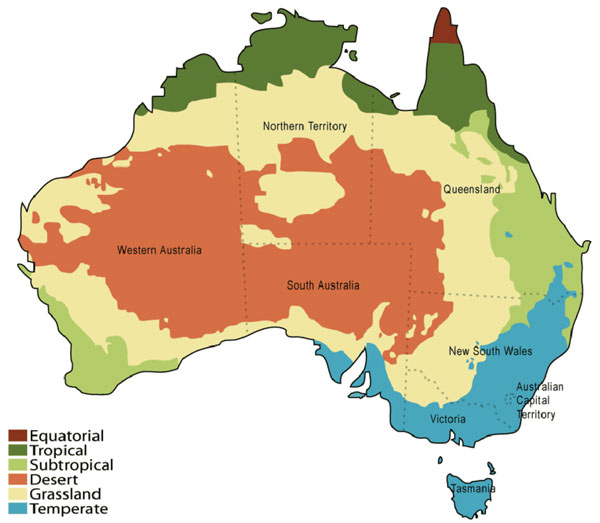
When is the Best Time to Visit Australia? - by Region
The best time to visit t he northern territory.
The Northern Territory plays host to a handful of the country’s largest deserts, including the Great Sandy Desert, Tanami Desert, and the Simpson Desert, each contributing to an expansive landscape that is uniquely Australian. With terrain ranging from powerful rivers and expansive wetlands to barren deserts and sandstone escarpments, much of the Northern Territory has been shaped by a monsoonal climate that cultivates extremities, ensuring one of the most dynamic and exciting environments on earth.
Try these Northern Territory Self Drive Itineraries
1) The Red Centre
Australia’s interior is an arid semi-desert with very little rain, high summer temperatures and occasionally freezing winter nights. The best time to visit Australia's Red Centre, Uluru and Kata Tjuta is between May and September when the maximum temperature during the day is usually between 20°C (68°F) and 30°C (86°F). The weather is cooler, making it easier and safer and much more pleasant to walk and there is very little rain. Overnight temperatures can be very cold during winter, so be sure to bring some warm clothing with you.
August and September are usually the best months to see the park’s wildflowers in bloom. October to March can get extremely hot, with daytime temperatures regularly exceeding 35°C (95°F). However, the hot weather also brings storms and rain, which fill the waterholes and start Ulu r u’s waterfalls flowing – a truly spectacular sight!
If you visit the park during the summer, make sure you drink plenty of water and do not walk after 11.00 am. Summer also brings large numbers of flies to the desert, so you might want to consider wearing a protective head net (these can be purchased when you arrive).
Weather in Uluru could be considered extreme. Summer temperatures can get very hot with temperatures soaring to 40 ° C (104 °F) and 45 ° C (113 °F) in the desert. On the contrary, during the winter, temperatures can drop to below 0 ° C (32 °F) Here’s a rundown of what temperatures you could expect when you visit, depending on the season and the months you choose (all temperatures are in Celsius and are rounded off).
Spring – High from 26 ° C-34 ° C (79 °F-93°F) and low from 17 ° C-9 ° C (62 °F-48°F) Summer – High from 35 ° C-38 ° C (95 °F-100°F) and low from 17 ° C-21 ° C (62 °F-69°F) Autumn – High from 23 ° C-28 ° C (73 °F-82°F) and low from 17 ° C-8 ° C (62 °F-46°F) Winter – High from 22 ° C-20 ° C (71 °F-68°F) and low from 5 ° C-3 ° C (41 °F-37°F)
2) Darwin, Kakadu, Arnhem Land, Katherine & Surrounds
Known for its tropical weather, Salt Water Crocodiles, rich Indigenous culture, abundant fishing spots, National Parks and laid-back Australian lifestyle; the Top End is blessed with more than its fair share of world-class destinations and attractions. Monsoonal wet and dry seasons provide the region with one of Mother Nature’s most punishing environmental contrasts, shifting from dry heat and scorched earth to astonishing downpours and flooded plains on a half-yearly cycle.
Wet Season (November – April)
During the wet season, the Top End is subject to unprecedented volumes of rainfall. Characterised by intense and often visually dramatic weather events, the average temperatures range from 25 ° C (77 ° F) to 33 ° C (91 ° F) and are amplified by a sharp rise in humidity (in excess of 80%).
Visiting the Top End during the wet season provides travellers with some interesting dilemmas. The increased rainfall results in spectacular waterfalls pumping with life and lush green landscapes that engulf much of the region, including Kakadu and Litchfield National Park. Locations such as Jim Jim Falls and Twin Falls will also reach their visual best during these months. - Katherine Gorge as a visually impressive destination during the wetter months. The whole area's waterfalls are amazing when it’s so wet, the wildlife really comes out but the downside is r oads can often be closed and certain areas won’t be accessible.
Dry Season (May – October)
During the dry season, the Top End boasts warm sunny days and crisp winter nights. Temperatures typically range from 21 ° C (70 ° F) to 32 ° C (90 ° F), with a drying heat throughout the day complemented by substantially lower levels of humidity (around 60 – 65%) providing arguably the most comfortable time of year to visit.
With the lowest temperatures falling between May and July, the Top End will never be more accessible than it is during these months. Regions that were previously off-limits from flooding or dangerous conditions have now reopened and visitors are free to explore every nook and cranny to their heart’s content.
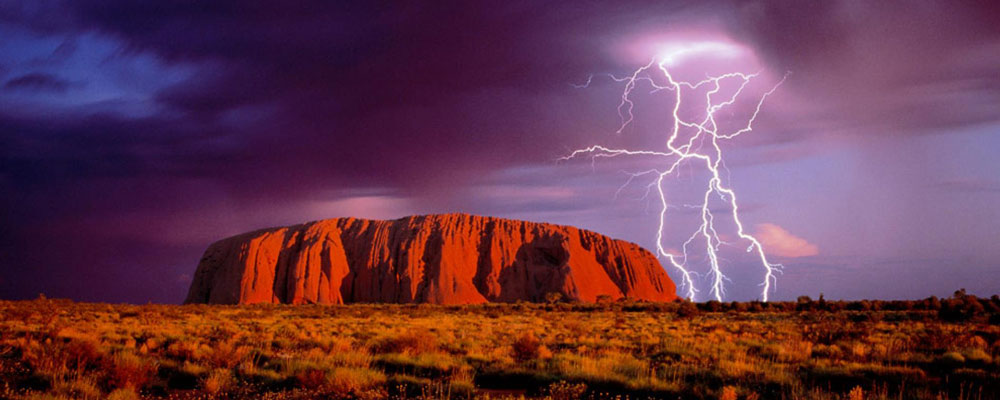
The Best time to Visit Western Australia
Visit the South of Western Australia (below the Tropic of Capricorn) between November to March (summer) when it doesn’t rain as much and the temperatures are high. Above the Tropic of Capricorn visit Between May and October (during the dry season) when the temperatures are milder.
Itinerary Ideas for a Western Australia vacation
1) The Coral Coast
North of Perth you'll find the Coral Coast: more than 1,100 kilometres (680 miles) of white beaches, outback desert, laid-back coastal towns and the world's largest fringing coral reef: World Heritage-listed Ningaloo. The best time to visit the Coral Coast is generally between March to October due to warmer weather as well as the concentration of seasonal activities.
March-May: Coral Spawning March-July: Whale Sharks June-November: Manta Rays June-November: Humpback Whales November-March: Turtle nesting and hatching July and October: Wildflowers
2) Margaret River
The Margaret River region is just under 3 hours drive South from Perth, which, by Australian standards, is a medium level drive. With 4 four distinct seasons, the mild Mediterranean climate not only makes Margaret River a premium wine growing region, but also a year-round choice for holidaymakers.
In summer, there is little rainfall and the average maximum temperature is just under 30°C (86°F). Hot days are usually cooled off by afternoon sea breezes. Summer evenings are balmy to mild with temperatures around 15°C (60°F). Also in summer, the stunning beaches seduce swimmers and kite surfers.
Most of the rainfall occurs in the winter but winter still has many glorious sunny days. Winter enjoys mild temperatures that average 16°C (61°F) to 18°C (64°F) with some days in the early ’20°C (70°F). Winter evenings are mild and average above 8°C (46°F) but are still cool enough to enjoy a log fire.
Spring and autumn are lovely and warm with plenty of sunny days. Autumn sees a flurry of arts and wine-inspired events. In spring, the wildflowers put on their own dazzling show.
3) The Kimberly
Between April to October is the best time to be in the Kimberly, go too early and you will be in the wet season and may experience road closures. Many of the region's attractions are also closed during the wet season. Go too late and you risk the closure of attractions due to bush fire.
June and July are warm but not hot, with cool to cold nights, during these times it can get down to single-digit temperatures in the Bungle Bungles (where you cannot have a fire), many people consider these months to be the best.
August is probably the best month, school holidays are over, the days are nice and warm which makes for great swimming, the nights are still cool which makes great camping and the water quality is still really good.
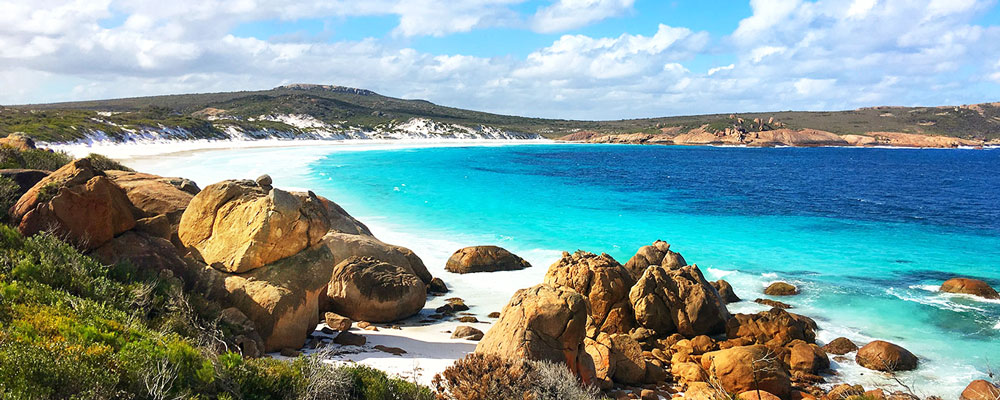
The Best Time to Visit Queensland
1) tropical north queensland .
Tropical North Queensland, or the regions of Cairns, Port Douglas, and Palm Cove, are hot and humid year-round and temperatures averaging around 31°C (88 °F) . The weather falls into two seasons.
The best time to visit is during the hot and cloudless Dry (from April to November), with moderate coastal humidity maintaining a pleasant temperature day and night and cooler nights inland. Rainfall is low and you can expect gorgeous sunny days, making it the most popular time to visit the region. The ocean is free of marine stingers during this time, so you can swim almost anywhere without nets or suits for protection.
Cairns’ rainy season is from November to April; this is when you will get near-daily rainfall but far fewer tourists. The “Build-Up” to the rainy season in November or December before the heavy rains can be very uncomfortable, with stifling, near-total humidity. During the wet season, the colours of the rainforest are at their brightest and the waterfalls are full and spectacular. The water around the Great Barrier Reef is calm at this time of year, so it’s perfect for snorkeling and diving.
2) The Whitsundays Islands
In the Whitsundays the wet season about matches that of Cairns, running November to April, however, the added concern are stingers. Stinger season runs approximately between October and March every year, and during this time a stinger suit must be worn when swimming in the Whitsundays, including on day trips to the Great Barrier Reef and Whitehaven Beach or just off the beach at Daydream Island.
The temperature remains even throughout the year, with July and August the coolest months at 22°C (71 °F) and the warmer, summer months reaching no higher than 31°C (88 °F) .
3) The Sunshine Coast
Stretching from the coastal city of Caloundra, near Brisbane, to the Great Sandy National Park in the north, the Sunshine Coast is home to pretty villages surrounded by beach, Noosa, and Maroochydore. Noosa receives less rain than its northerly sisters and is, therefore, more suited to year-round travel. As stingers don’t come this far south, there is no concern when getting in the water. Noosa’s rainy season also parallels that of Cairns and the Whitsundays, as most of Queensland.
4) The Gold Coast
While it may be tempting to visit the Gold Coast during the summer months of December to February, these periods can become uncomfortably warm and provide inconsistent tropical weather. Also, due to the destination’s popularity internationally, these periods become incredibly crowded with families travelling during the school holidays.
Itinerary suggestions for Queensland & Great Barrier Reef

The Best Time to Visit Tasmania
If you want to know about the best time to visit Tasmania , you need to keep asking every five minutes. Because that is how often the weather can change. It’s so different from the rest of Australia, it is almost astounding. It has maritime and mountain climates, with rainforest thrown into the mix.
For many people, the best time to visit Tasmania is the driest, warmest months, December through February. Don't let the tourist troops and pricier rooms let you down, as summer in Tassie brings various festivals and is perfect for hiking and scuba diving.
March and April, Tasmania’s autumn, is also a good time of year to visit. This is usually the driest time of year, and the days are still warm and long, but the nights are beginning to cool down and everywhere is much quieter, this is also the time of year for yachting, wines, and fresh Pacific oysters. However, this is also mating time for Tasmanian devils so the chances of seeing them in the wild are less than at other times of the year.
Tasmania Self Drive Itineraries

The Best Time to Visit New South Wales (Sydney)
New South Wales enjoys a subtropical climate, bringing hot summers and cool winters, with plenty of year-round sunshine across the state and enough rain to keep the land green and fertile. In general, the coast is the warmest place to be, while the inland mountains can experience snow and frost in the depths of winter. However, moving westwards, you get into some really dry areas, and even venture into the desert. so be prepared for all eventualities.
September - November
As the days heat up, New South Wales comes alive with greenery and life. Days are warm and sunny, but not too hot, so now’s the time to explore the Blue Mountains, chill out on the beaches and tour the Hunter Valley. Sydney is gorgeous in the springtime too – the flowers are blooming, the birds are singing and the city is enveloped in a canopy of purple jacaranda trees.
With beach-worthy summers, breezy autumns, fresh winters, and colour-filled springs, it’s no surprise Sydney is consistently ranked among the world’s most liveable cities. Whether you prefer the heat of the summer for optimal beach weather or cooler, crisp winter mornings for a busy day of sightseeing, Sydney will have the perfect climate for you to plan your visit.
When is the best time to come to Sydney - Summer in Sydney has a habit of throwing together strings of scorching hot days while winter brings with it some icy-cold mornings and evenings.
September and October
September in Sydney marks the beginning of Spring and brings along with it all the hallmarks that make this season so pleasant, the days range from cool to warm, humidity is low, and there's annually a high volume of sunny days in the month.
September is statistically the month of the year in Sydney with the lowest amount of rainfall - a reason why the 2000 Sydney Olympic Games were held in September - and this extends largely through to the majority of October as well.
Temperatures during this crossover period average a comfortable maximum of 21.0°C (69.8°F) and a slightly chilly yet bearable 12.3°C (54.1°F) minimum. As a result, it's basically shorts and t-shirt weather during the day time, with only some light additional layers needed in the evenings.
The end of September signals the beginning of the Australian school holiday period. From the end of September to the beginning of October, you may see a rise in prices for accommodation, flights, and various attractions, however, if you're planning to visit with the kids during the holidays this would be one of the best times to do so.
Explore Sydney & surrounds: New South Wales Self Drive Itineraries
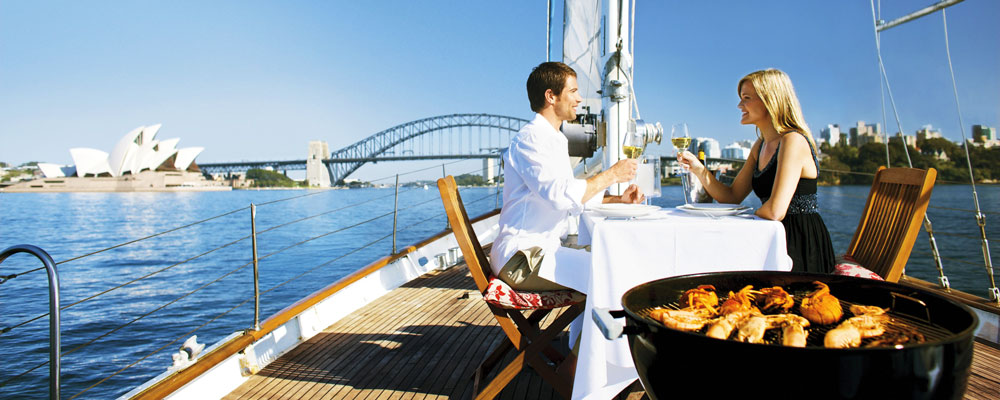
The Best Time to Visit Victoria (Melbourne)
Despite being approximately the same size as the United Kingdom, Victoria has a surprisingly varied climate, ranging from semi-arid in the north to temperate along the coast, producing hot to mild summers and cool winters, with a good amount of rain to keep the land looking green and lush.
It’s common for Melbourne to experience all four seasons in one day – one minute it can be sunny before it quickly turns to rain. It’s often warmer and dryer the further north you travel. Summer is hot with warm nights. Winters, on the other hand, are rather cool and rainy, but they continue to offer many sunny days.
With its variable climate, Melbourne hots up December to February (summer), cools down March to May (autumn), chills out June to August (winter), and warms up again September to November (spring). Melbourne's top temperatures are usually in January and February. Those months are often dry, with hot spells and cooling afternoon breezes off Port Phillip Bay. June and July are the coldest months, and October is the wettest.
When is the best time to go to Melbourne: The Best seasons are generally considered to be autumn (March to May) and spring (September to November). These are the best times to enjoy good weather and avoid massive tourist crowds. Humidity for most of the year is not particularly high so you won't be sweating it out as you walk around.
Temperatures average
Summer (December to February) 25°C - 16°C (77°F - 61°F)
Winter (June to August) 6.5°C - 14.2°C (43.7°F - 57.6°F)
Rainfall is highest from May to October.
Autumn (March to May) and Spring (September to November) is generally mild with temperatures from 11°C - 20°C. ( 52° F to 68° F)
Trip planning ideas for Melbourne, Victoria & Great Ocean Road
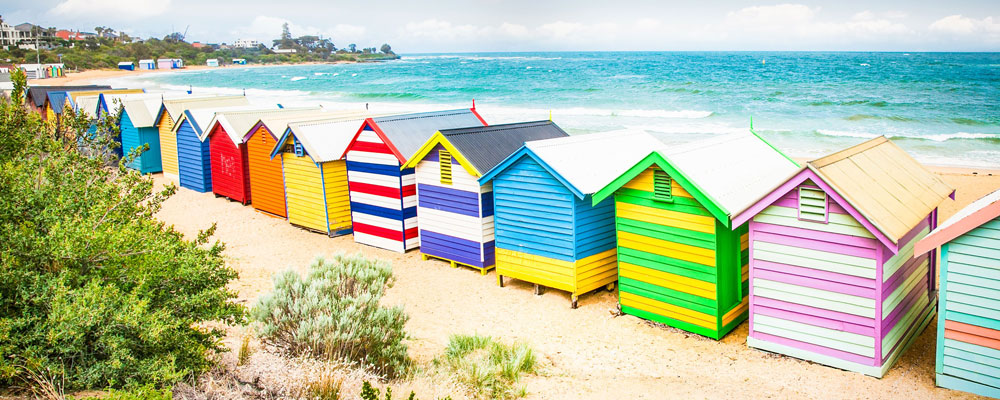
The Best Time to Visit South Australia (Adelaide)
Overall South Australia is Australia's driest state/ territory. The top two-thirds of the state is virtually all desert. Although all of the lower third of the state is also hot and dry, along the coast the weather can be cooler than in the north.
When is the best time to visit Adelaide? February-March is the best time of year to visit Adelaide
Why Adelaide between February and March? While February is one of the hottest months of the year in Australia on average, the latter parts of the month bridging into March tend to cool down to a seasonably warm level of comfort. Adelaide's geographical location works in its favour here.
While the first week of February still can boast days of surprisingly high temperatures in Adelaide, it still comes down to a reasonably comfortable average. Temperatures tend to settle around a 14°C (57 °F) minimum and 24°C (75 °F) maximum range without any of the humidity that plagues more northern cities.
Summer (December – February) During summer, average temperatures range from 16.7 - 28.6°C (62 - 83.5°F) and rainfall is sparse. Occasionally temperatures can soar to 40°C (104°F). Adelaide enjoys the lowest humidity of any Australian city.
Autumn (March-May) In autumn, the weather is pleasant with average temperatures between 12.7 - 22.7°C (55 - 73°F) and very little rainfall. The city and countryside take on a red, orange and golden hue.
Winter (June – August) In winter, average temperatures drop to between 8 - 16°C (46.5 - 60.8°F), and frosts are common in the nearby Adelaide Hills. June is the wettest month, averaging around 80 mm (3.1 ″ ), however, Adelaide is the driest of all the Australian capitals.
Spring (September – November) Spring sees weather warm up with average temperatures between 11.8 - 22°C (53.2 - 71.6°F). Rainfall is low but evenings can be quite brisk as temperatures drop quickly.
Self Drive Itineraries featuring South Australia

Since 2001 we’ve been helping visitors plan their dream Australian holiday. We aim to make visiting our beautiful land effortless. Let our expert holiday planners put together an itinerary for you, no obligation FREE of charge, or get some friendly advice on what small group tour would suit - Just follow the link and answer a few brief questions
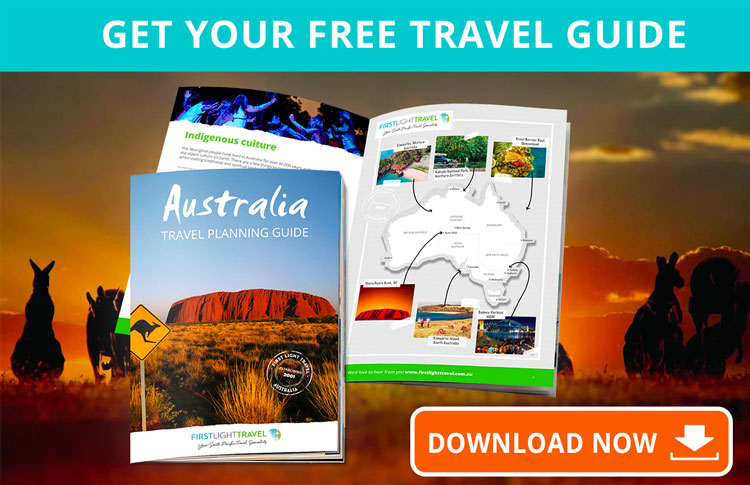
Pricing terms
The price is based on current exchange rates but is only an approximation. Please contact us for a final price
The Best Time To Travel Australia: An Overview Per Region
- Updated on: May 1, 2022
This article may contain affiliate links. For more information, please see our disclaimer here.
Table of Contents
Australia is such a big country it’s impossible to tell you the best time to travel Australia. Asit has many different climates in different parts of the country. This blog post will give you an overview of the climates per region and the best time to travel to these Australian regions.
Are you planning on going to Australia for a year or longer? Check out the part further down in this blog post on how you can travel around Australia, while only having summertime. 365 days of summer, who doesn’t want that!?
Best time to travel Australia

Australia is situated in the Southern part of the hemisphere and therefore, a lot of things are the other way around compared to the rest of the world. People drive on the left side of the road and the sun travels from the East via the North to the West. Some even claim that the water flows in the opposite direction through the drain!
The seasons are also opposite to most other countries. Australian wintertime is during the European summertime and the other way around.
Weather seasons
Australia knows a lot of different climates. The tropical climates only know two seasons: a wet season and a dry season. Other seasons know them all: winter, summer, autumn, and spring.
In general, we can say the weather seasons are as follows:
June until August
September until November
December until February
March until May
Tourist seasons
3 tourist seasons are distinguished:
- High season : This season runs from December until February, this period is the Australia vacation, during the Australian summer. Schools are closed and a lot of Australians have holidays. Everywhere around Australia, it is busier and the prices are going up.
- Low season : This season runs from June until August, during the Australian winter. There is only sunshine in the Northern part of Australia, which is the reason a lot of retired Australians travel to the North. If you like skiing, this is the time of the year it is possible! There are some ski slopes in the Southern part of Australia as well as in Tasmania. Generally said this season is the least busy period in Australia and the prices are lowest.
- Midseason : This season falls between high season and low season and runs from March until May and from September until November. The weather is pleasant in most parts of Australia and the prices are good.
Festival season
Festival season is on during the Australian summer, from December until February. Music festivals on the beach, rodeo’s in the outback and many more festivals take place around Australia.
Public holidays
During public holidays most shops and businesses are closed. You might find a local market or a celebration in town.
Australia celebrates a couple of national holidays (besides Easter, Christmas and New Years Eve):
- Australia day : 26th of January
- ANZAC day : 25th of April
- Queens Birthday : Most of the states celebrate it on the 2nd Monday in September. In Queensland, it is celebrated on the 1st Monday in October. In Western Australia, there are no fast rules when the celebration takes place. But mostly somewhere between the last Monday in Septembre and the first Monday in October.
Best travel time Australia – North
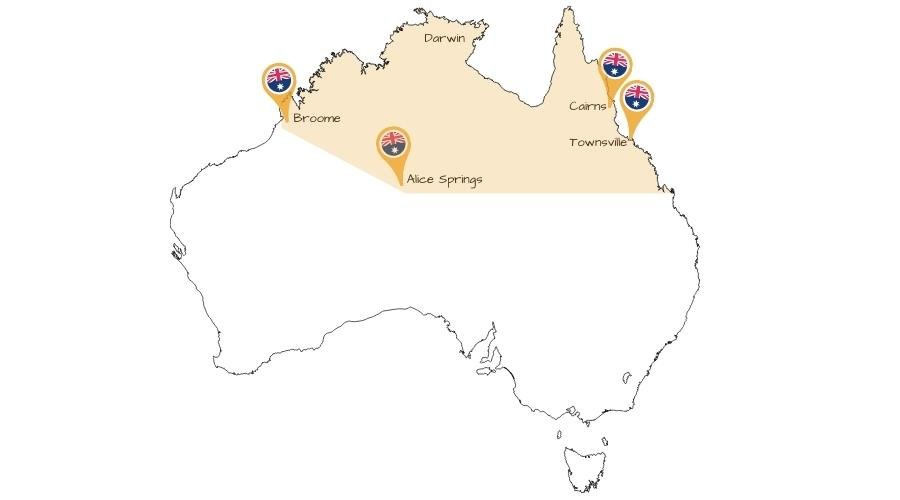
November until April, which is called the tropical summer
May until October, which is called the tropical winter
The Northern part of Australia runs from Broome (North-West), up to Townsville (North-East). In between, you’ll find cities and places like the Kimberley in Western Australia – Darwin, Kakadu National Park and Arnhemland in the Northern Territory – Cape York, Port Douglas and Cairns with the Great Barrier Reef in Queensland.
Like the name indicates, during the wet season there falls a lot of rain. Mainly rain showers that last a couple of hours and bring a lot of water. The day temperature is hot and can be over 40ºC. The nights are warm as well, but the temperature will drop until a more comfortable 20ºC.
Note: During the wet season, it is no exception that roads are closed due to flooding. if you want to explore the northern part of Australia during this season, make sure you have a 4wd.
During the dry season, you are lucky if you’ll have some rain. Normally there isn’t any rain at all, except for a little lost rain shower. The day temperatures are more comfortable and vary between 20ºC to 30ºC. During the night it cools off and you can expect temperatures below 10ºC.
Time to visit Australia Northern Part
The best travel time for the Northern part of Australia, including the Northern Territory is from April until October. The temperatures are more comfortable and you don’t have to plan your explorations around the rain showers. The beginning of the dry season is the most beautiful time, as nature has had lots of water and everything is in bloom. Later on, in the season, nature gets dry and more yellowish.
Climate in Darwin
Activities & events in the northern territory.

To check out all the festivals, activities, and events in the Northern Territory, click here to visit the official NT website . Below you will find some special festivals and events I would recommend.
Best time to travel to Australia – Northern part of the east coast

April until September
October until March
The Northern part of the East Coast of Australia runs from Townsville to Hervey Bay. In between, you’ll find the places Airlie Beach, Mackay, Rockhampton, Gladstone and Bundaberg.
Note: Below are descriptions of the winter and summer climates applied in particular for the coastal areas. If you plan on going more inland, expect a bit warmer days and a bit cooler nights. During wintertime, freezing cold nights aren’t an exception for inland destinations.
Queensland is called the Sunshines state, and that is because the sun shines all year round. Although the sun will be shining, winter can bring some colder days, but the average day temperature will fluctuate between 15ºC to 30ºC. During the night it cools down until about 5ºC to 10ºC.
Clouds will form often during the afternoon and give some showers in the evening. This rain makes waterfalls flow and gives nature some color.
In summer the average temperature during the day will be between 20ºC and 35ºC. The nights are warmer, but there is still a chance to have some colder nights during this time of the year.
Best time to visit
The best travel time for the Northern part of the east coast of Australia is from June until November. Winter is a beautiful time of the year to explore this part of Australia, as the waterfalls will be flowing and nature looks stunning. Just prepare yourself for the colder nights and a couple of cool days you might come across.
Climate in Townsville
Activities & events in the north of the east coast.
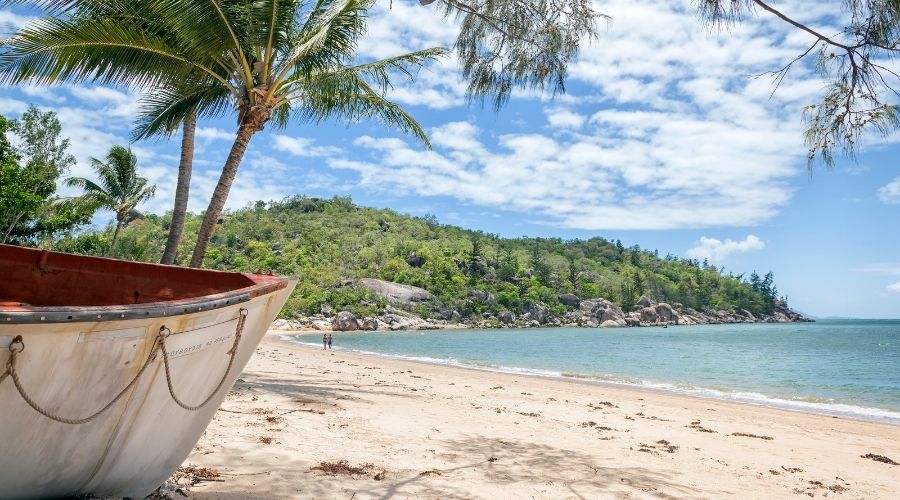
To check out all the festivals, activities, and events in Townsville, click here to visit the official Townsville Event website . Below you will find some special festivals and events I would recommend.
Best time to travel Australia – Gold coast

May until August
September until April
The Southern part of the east coast of Australia runs from Hervey Bay to Sydney, so along the route, you’ll cross the border from Queensland to New South Wales. In between, you pass places like Brisbane, Gold Coast, the beautiful Fraser Islands, Coffs Harbour, and New Castle.
The climate in this part of Australia is a moderate sea climate. This is probably the best climate you can have, as there is only one season: summer!
Winter temperatures are mild, with an average of 19ºC during the day. But don’t be surprised if you have a cooler day where the mercury barely reaches 10ºC. Rainfall can be expected all year round but during this time of the year a bit less than during summer.
Summer brings a bit warmer days and the average day temperature rises up to 26ºC to 30ºC. Thunderstorms at night will happen often, which makes it a bit wetter than winter. But still, a perfect time of the year to explore this part of Australia.
Best travel time
It doesn’t really matter when you travel to this part of Australia. If you like warmer days and don’t mind the bit of extra rain on your face, travel here between September and April. More comfortable when it is a bit cooler throughout the day? Travel here between May and August.
Climate in Sydney
Activities & events in sydney.
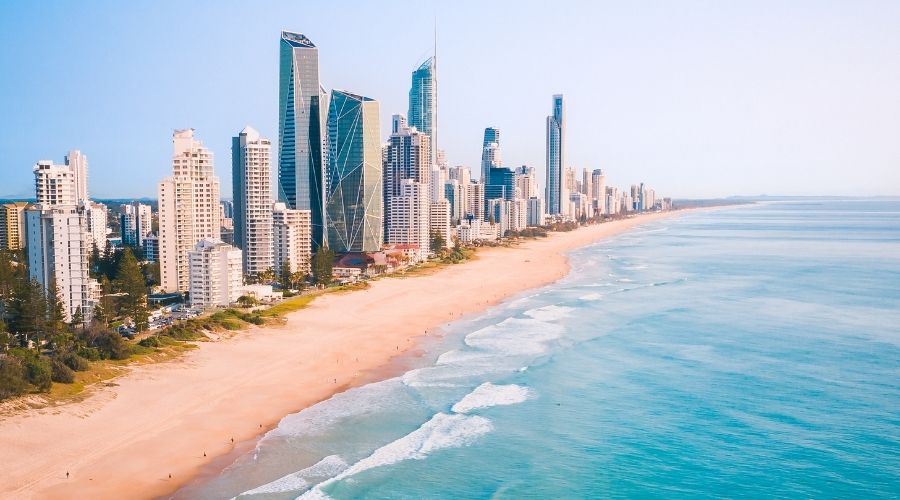
To check out all the festivals, activities, and events in Sydney click here to visit the official Sydney Event website. Below you will find some special festivals and events I would recommend.
Must Read: The Complete Route Guide Brisbane to Cairns
Best time to travel Australia – Southeast

The southeastern part of Australia runs from Sydney in New South Wales along with Melbourne in Victoria up to Adelaide in South Australia. In between, you’ll find Canberra in Australia Capital Territory. Although, Canberra is a bit more inland, and extremer temperatures can be expected.
Winters can be cold and freezing temperatures and snow aren’t exceptions. The average day temperature is below 10ºC. This part of Australia is actually a part where you can go skiing during this time of the year. The biggest ski accommodations have up to 100km skiing slopes!
Summer is more pleasant with an average day temperature between 20ºC and 25ºC. You can visit the beaches and work on your tan.
Spring & Autumn
During spring and autumn, the temperatures fluctuate between summer and winter temperatures. Autumn is a beautiful time of the year if you like the orange and yellow colors in nature. This part together with Tasmania is the only part in Australia where you have a real autumn season.
If you want a beach and sunshine holiday, between September and March is your time to visit this part of Australia. Do you want to go skiing? You better visit this part between June and August.
Climate in Melbourne
Activities & events in melbourne.

Best time to visit Melbourne Australia for festivals, activities and events click here to visit the official Melbourne Event website . Below you will find some special festivals and events I would recommend.
Best time to travel Australia – Tasmania

Tasmania is an island situated 500 kilometers South of Melbourne. In Tasmania, seasons are even more extreme than in Southeast Australia.
Winter is cold in Tasmania. Temperatures drop to 10ºC and below. In the mountains, it will snow and skiing is possible on some small slopes. Winter is a good time to see the Southern Lights. Although the Southern Lights can be seen all year round, in winter is your best chance, because of the long and dark nights.
Summer is temperature-wise the best time of the year, but during the day it won’t be much warmer than 20ºC. A perfect temperature for a long hike into the mountains!
Tasmania can best be visited between December and February. The temperatures are best during this time of the year. Nature is stunning and many activities can be done. But always be prepared for a cool day and cold nights.
Climate in Hobart
Activities & events in tasmania.

To check out all the festivals, activities, and events in Tasmania click here to visit the official Tasmania Event website. Below you will find some special festivals and events I would recommend.
Must Read: Tasmania Travel Guide
Best time to travel Australia – Southwest

Southwest Australia runs from Melbourne to Perth. You’ll find Adelaide in between.
Winters are soft, with an average day temperature between 15ºC and 18ºC. Some days might be a bit cooler. This time of the year is known for the enormous amount of rainfall. The temperature during the night only drops a bit and has an average temperature between 9ºC and 14ºC.
Summers are much dryer, but a rain shower will fall down every now and then. Day temperatures are warm with an average between 25ºC and 35ºC. Also, expect heatwaves, when day temperatures will rise towards the 40ºC. During the nights it cools off a bit to 16ºC to 20ºC.
The best travel time for Southwest Australia is between September and April. During this time of the year you avoid the heavy rainfall. Just be prepared for some really hot days and make sure you can plan some days at the pool or the beach to cool off.
Climate in Perth
Activities & events in perth.

To check out all the festivals, activities, and events in Perth click here to visit the official Perth Event website. Below you will find some special festivals and events I would recommend.
Must Read: Free camping in Australia: The Ultimate Backpackers Guide
Best time to travel Australia – Northwest

Northwest Australia runs from Perth to Broome. In between, you’ll find places like Halls Creek and Port Hedland.
In this part of Australia is a desert climate, which generally has two seasons as mentioned above.
Winters are characterized by extreme temperature differences between day and night. During the day it won’t be much cooler than 27ºC and during the night the temperature drops to 10ºC, and sometimes far below!
During summertime, the days are even hotter and temperatures will easily rise above 40ºC. During the night it still cools off a lot, but not as much as during the winter. Average night temperatures vary between 20ºC and 25ºC.
Wintertime is definitely your best option to travel to this part of Australia. Between April and September, the day temperatures can be handled. Just be prepared for some cool nights!
Climate in Broome
Activities & events in broome.
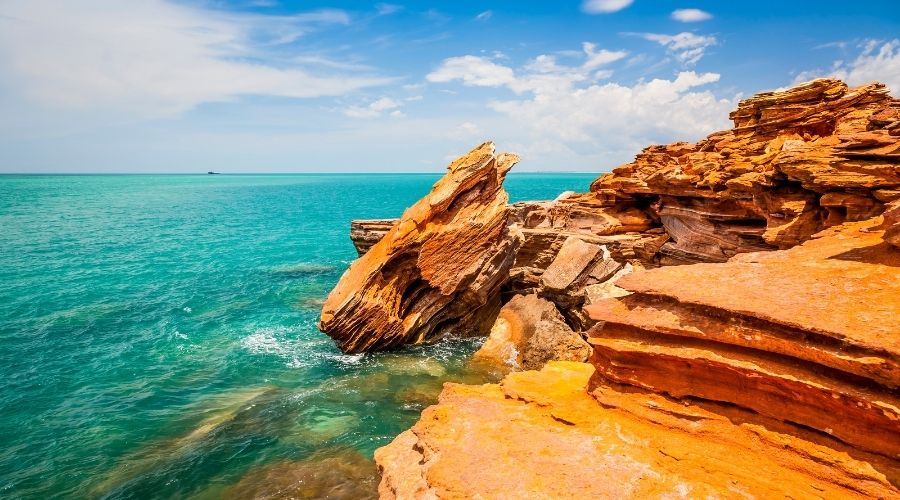
To check out all the festivals, activities, and events in Broome click here to visit the official Broome Event website . Below you will find some special festivals and events I would recommend.
Best time to travel Australia – Central
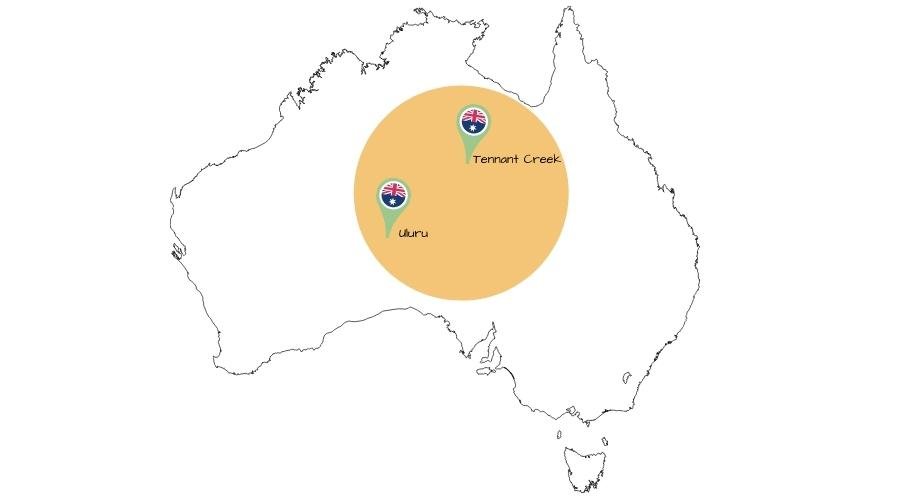
The red center covers Alice Springs, Ayers Rock, Uluru and some smaller places like Tennant Creek, Devil’s Marbles and Ghan.
This part of Australia is a desert climate, just like in the Northwest of Australia. The climate is more extreme in the Red Centre and therefore, I discuss it separately.
The temperature during the day in the wintertime will rise up to 25ºC, but 20ºC is more of an average. During the night the temperatures often drop below zero. A cooler day and a more comfortable night can be experienced as well.
During summertime, the red center is extremely hot. Temperatures can rise far above 40ºC and during the nights the temperature doesn’t drop far below 25ºC.
The best travel time for the red center is between March and May and between September and November. These are the transition periods between winter and summer. Day temperatures will likely be between 20ºC and 30ºC and during the night it cools off a bit, but freezing temperatures are rarely seen.
Climate in Alice Springs
Activities & events in alice springs, australia’s longest light show installation at parrtjima.
To check out all the festivals, activities, and events in Alice Springs click here to visit the official Alice Springs Event website. Below you will find some special festivals and events I would recommend.
What is the best time to travel Australia, while only having summer?

Australia is very diverse in all sorts of ways. We just discussed the many different climates in this country, but also landscapes, highlights, animals, and vegetation vary a lot when you travel across Australia. Don’t think you can drive around Australia during a 4-week holiday, since travel distances are huge.
But if you have a gap year, or if you are traveling around the world and want to spend some longer time in a country, Australia is the place to be! Buy your own car , and if you make sure you can sleep in it, you can travel around Australia without paying any accommodation if you use the many free camps !
Do you love to feel the sunshine on your skin, a breeze through your hair and the sparkling ocean in your eyes? You can drive all around Australia in 1 year time while only having summer!
- January : Explore Tasmania
- February – March : Travel around Melbourne and Adelaide
- Apri : Go to the Red Centre, or do this in September and travel to Perth
- May : Explore Perth, you might get some rain, but the temperatures are still very pleasant
- June : Travel North to Broome
- July – August : Explore the Kimberly, Arnhemland and Darwin + surroundings.
- September : Choose to travel via the Red Centre or via the Northern coastline to Cape York
- October : Cape York and Cairns
- November – December : Travel along the east coast to Sydney
There you go, 1 year in Australia, while only having summer!
You might also like: Cape Tribulation & Daintree Rainforest: Adventurous Things To Do & Epic Hikes
How much does it cost to travel australia?
Faq best time to travel australia, what is the cheapest time to travel to australia.
The cheapest time to travel to Australia by airplane is from mid-April till the end of August.
What is the best time to visit Sydney Australia?
The best time to visit Sydney is from if from September till November and from March until May. Those two periods are the best by temperature and it’s not as crowded in the city as at the hiking tracks.
What is the best time to visit New Zealand and Australia?
The shoulder season(March-April) is the best time to visit New Zealand and Australia, as there are less tourist and the weather is moderate.
How many days in Australia is enough?
I would suggest spending at least 3 weeks in Australia if you want to discover. It all depends on your goals, as I lived in the country for 2 years and still have things I want to do/see.
Is April a good time to go to Australia?
April is the start of the dry season in Australia so this means warmer nights and a perfect time of the year to travel around Australia.
Pin for later
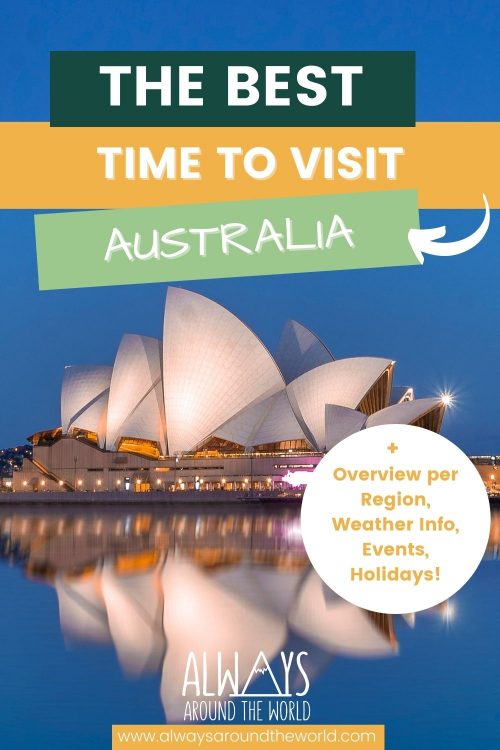
Hopefully, this blog post informed you well enough about the different climates in Australia, so that you can prepare for your trip ! Have you traveled around Australia and noticed the many different climates? Or do you have a question regarding this blog post? Leave a comment below.
All Australia posts
1 thought on “The Best Time To Travel Australia: An Overview Per Region”
Great article.
Leave a Comment Cancel Reply
Your email address will not be published. Required fields are marked *
Related Posts

Brisbane to Cairns 2024: East Coast Hidden Gems Unveiled
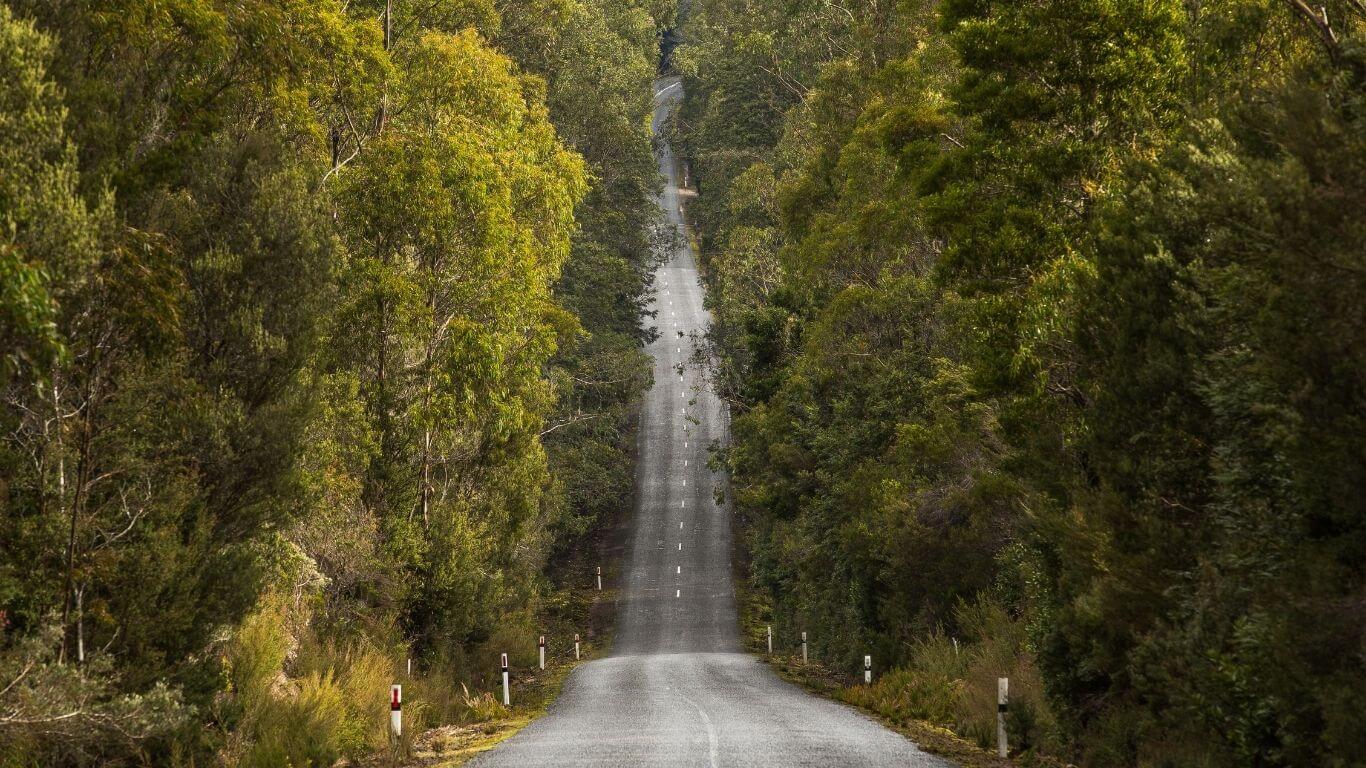
Self-Drive Tasmania: The Best Trip Planner for an Ultimate Road Trip

9 Greatest Hikes in Tasmania | Becoming One With an Ancient Land
Deals australia, activities & tours, travel insurance, accommodations, destinations, travel tips.

- Big Island of Hawaii
- Cook Islands
- French Polynesia
- New Zealand
- Tahiti, Moorea, Bora Bora
- My Favorites
- My Specials
- Best honeymoon destinations
- Best time of year to visit Tahiti
- Best time of year to visit Fiji
- Best time of year to visit the Cook Islands
- Best time of year to visit St. Lucia
- Best time of year to visit Vietnam
- Best time of year to visit Thailand
- Best time of year to visit Bali
- Best time of year to visit New Zealand
- Best time of year to visit Australia
- Best time of year to visit the Seychelles
- Best time of year to visit the Maldives
- Best Jamaica all-inclusive resorts
- Best Fiji all-inclusive resorts
- Overwater bungalows
- Detailed visa requirements by country
- Tahiti, Bora Bora, and Moorea Destination Weddings
- Fiji Destination Weddings
- Best resorts in Tahiti, Bora Bora, and Moorea
- Best resorts in the Dominican Republic
- Best resorts in Fiji
- Best resorts in Jamaica
- Best resorts in Kenya
- Best resorts in New Zealand
- Best resorts in the Seychelles
- Hawaii - Maui
- Hawaii - Kauai
- Hawaii - Big Island
- Hawaii - Oahu
- Dominican Republic
- Puerto Rico
- St. Kitts and Nevis
- St. Maarten
- Turks and Caicos
- Virgin Islands - US
- Virgin Islands - British
- Bali & Indonesia
- Ask an Expert
Testimonials from Piper's clients:
Best time of year to visit australia.
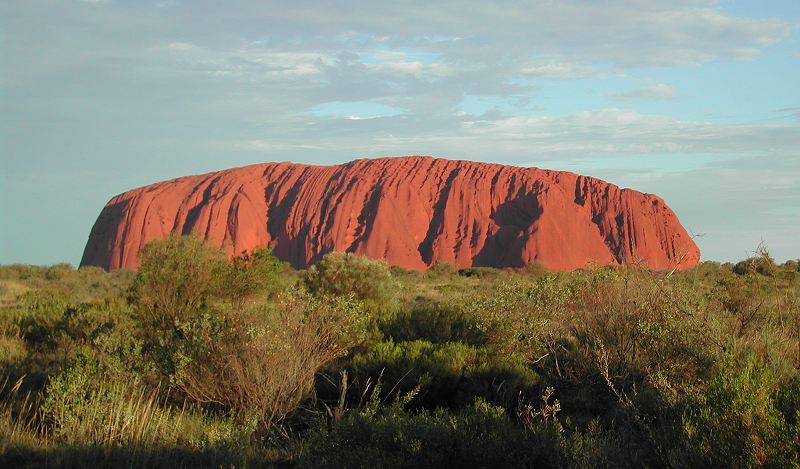
- Airfare by month
- Travel specials
- See all resorts in Australia
- Temperature by month
- Precipitation by month
- Best time to go by region
- High season/low season prices
- Map of all resorts
Australia is enormous, with a wide range of climates. The northern states are typically warm year-round, while the southern states have cooler winters. December to February is summer; March to May is autumn; June to August is winter; and September to November is spring.

Typical airfares from LAX to Sydney, Australia

Best time of year to go to different parts of Australia
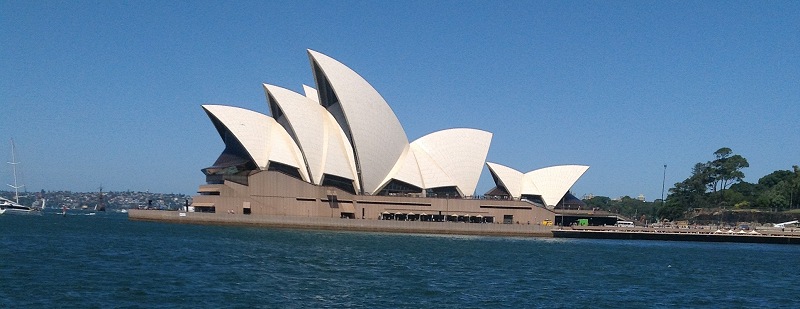
Sydney , in New South Wales, is in Australia's temperate zone. The Great Dividing Range is a major climate factor, as it creates 4 distinct zones: the coastal strip, the highlands, the Western Slopes and the flat countryside to the west.
Sydney typically sees about 340 sunny days a year, with humidity in summer around 65%.
Pictured above is the famous Sydney Opera House .
Tasmania , the island southeast of the main continent, the climate is mild and temperate. With no part of the island more than about 75 miles from the water, the ocean has a big effect on the climate. Because it's much farther from the equator than the rest of Australia, the seasons are more distinct. January and February are pretty dry, with temperatures averaging about 70F.
See the Australia tourism website for a detailed description of the seasons in Australia.

Storms in Australia
In Cairns, on the coast of Queensland, tropical cyclones can occur sometimes between November and May. Around Alice Springs and Ayers Rock, you can see thunderstorms, hail and dust storms in the spring months. In Western Australia, tropical cyclones can occur between November and April--most commonly though in January and February.

Airfare and Resort Prices
High season is from about Christmas through the end of January, when children are on their summer holidays, and the popular resorts fill up with the locals. In the north, June through August is peak season as Australians from the southern areas travel north to escape winter. Typically the airlines will discount airfares April through June.
Water temperature, SCUBA diving and surfing in Australia
On the Great Barrier Reef, you can dive year-round, although the best conditions for diving are from late August to early December. For liveaboard diving, the best time to go is July through November. In the Coral Sea, the visibility is best in June and in September. If you want to see the Minke whales, they're seen mostly from June to August. From April through June, the whale sharks can be seen near Ningaloo, in Western Australia. Australia Tourism has an excellent reference on dive locations and regions here .
- We'll talk with you to find out what you're looking for, what you like/don't like, etc.
- We'll use our first-hand knowledge of the destination to pick out a handful of resorts we think you'd like
- We'll create a custom mini website for you, with photos, videos, maps, etc. of the resorts we are recommending
- We'll follow up with you to help you make your decision
- We'll go to work with our suppliers to get you the best deal available on what you've decided on.
Map of all resorts in Australia
Comet 12P/Pons-Brooks, aka the 'Devil Comet' is visible this week. Here's how to spot it
Science Comet 12P/Pons-Brooks, aka the 'Devil Comet' is visible this week. Here's how to spot it
This week is the best time for Australians to see a comet that won't be back again for 71 years — almost a whole lifetime.
The so-called "Devil Comet", or 12P/Pons–Brooks has already been visible to Northern Hemisphere viewers, but it's just become visible in the southern sky.
So, grab some binoculars and a camera and find somewhere where you can view the night sky without too much light pollution.
"There's been some astonishingly beautiful photos coming out on social media of the comet taken from the Northern Hemisphere near the Andromeda Galaxy," Jonti Horner, an astronomer with the University of Southern Queensland, says.
In the Southern Hemisphere, we've had to wait a bit longer for the comet to arrive as it moves into our part of the sky, but it should be at its brightest this weekend.
And then you should be able to watch it over the next few weeks as it travels back into the far Solar System
It's worth getting somewhere dark to try and catch a glimpse of the comet, as it won't be back for another 70 years from now.
12P/Pons-Brooks is a Halley-type comet. Just like Halley's comet, it only comes close to Earth every few decades — Halley's takes 75 years, compared to 12P/Pons-Brooks's 71-year orbit.
Despite its ominous name, there's no threat to Earth — it's much too far away to hit us.
The comet's closest approach to Earth will be on June 2nd, reaching within 231 million kilometres of the planet — about 1.5 times the distances from the Earth to the Sun.
When is the best time to see it?
If you're a keen stargazer, the most important date to put in your calender to be able to see the comet is April 21.
This is when the comet will be closest to the Sun (or perihelion) and at its brightest. It will reach a "magnitude" — a logarithmic measurement of brightness used by astronomers — of around 4.5.
This is enough to see with the naked eye, but less bright than the brightest stars in the sky, which have a magnitude of -1.
Professor Horner says the comet will "look like a bit of a fuzzy blob" to the naked eye, and its tail may also be visible in dark locations.
"That's with the caveat that there is a famous saying: 'Comets are like cats — they've got tails and they do what they want.'"
Why is it called the 'Devil Comet'?
While most comets are made up of dust, rock, ice and gas, researchers believe 12P/Pons–Brooks is a cryovolcanic comet. This means the ice, dust and gas erupt when the Sun's heat increases pressure on the inside of the comet.
"As it's been coming in towards the Sun and heating up, it's been periodically giving out bursts or explosions of activity, throwing gas and dust out and then slowing down again," Professor Horner says.
"[Over] the last 12 months or so it keeps burping, it keeps having outbursts."
At one stage, the outbursts caused the comet to look like it had two tails, giving it a horned appearance.
Unfortunately, stargazers are unlikely to see the horns now, as recent outbursts have given the comet a more conventional appearance.
It's hard to measure how large the comet is from so far away, and therefore how large the outbursts are, but estimates have put 12P/Pons-Brooks at about 17 kilometres on it's longest side.
We do know that these bright, cryovolcanic outbursts may get more violent as the comet approaches the Sun.
But Professor Horner says the outbursts themselves will actually appear less bright, due to the relative increase in brightness of sunlight striking the comet.
This makes it hard to predict how bright the comet will appear to viewers on Earth, he adds.
"There's a chance that the comet will be a bit brighter than predicted or equally, it could be a bit fainter than predicted."
How to see 12P/Pons-Brooks
Astronomers suggest you look for the comet just after sunset , as it will be visible close to the western horizon near Jupiter.
Although the advice varies depending on your location around Australia, about 60 minutes after sunset is the comet-viewing sweet spot, when it's dark enough to see the stars, and 12P/Pons-Brooks itself isn't too low on the horizon.
"Go and find somewhere dark, away from city lights," advises Donna Burton, an astronomer at the Milroy Observatory.
She suggests using a free app like Star Walk or Night Sky as "they'll show you exactly where it is".
"You don't need people like me to teach you how to find things in the sky anymore."
Although the comet will be visible with the naked eye, Ms Burton suggests taking a pair of binoculars just in case, as you'll be more likely to see the tail and other features of the comet.
"It's still bright enough to see with your naked eye. But it's not going to be super-bright like some media outlets are making it out to be."
More comet watching on the horizon
While you won't want to miss checking out 12P/Pons-Brooks before it sails off for another 71 years, there might be another comet on the horizon.
Comet C/2023 A3 (Tsuchinshan-ATLAS) was discovered last year, and it's already got astronomers excited.
According to their models, it will come within just 59 million kilometres of the Sun by September this year. That's twice as close to the Sun as 12P/Pons-Brooks will come this time around.
Even better, the comet will be best seen in the Southern Hemisphere because of the time of year and position of the comet entering the inner Solar System.
It's already quite bright even out past Jupiter, so if it stays on track we could be in for a treat when it arrives.
"I'm cautiously optimistic. It's behaving really well and could become as much 100 times brighter than Pons-Brooks," Professor Horner says.
"But it's a comet we've never seen before, it's never come through the inner Solar System. It's what we'd call a long period comet. And they're even more notorious for being hard to predict."
- X (formerly Twitter)
Related Stories
From antarctica to the moon, test your knowledge in our science quiz.
They may look like simple security cameras, but these devices are tracking meteors
The Sun is entering its 'solar maximum'. For aurora hunters in Antarctica, there's nothing 'quite like it'
Plumber's obsession with would-be exploding stars is helping astronomers 'find the unknown'
- Astronomy (Space)
- Science and Technology

Australia Recommends 2024

Come and Say G'day

G'day, the short film

Discover your Australia

Travel videos

Deals and offers

Australian Capital Territory

New South Wales

Northern Territory

South Australia

Western Australia

External Territories

The Whitsundays

Mornington Peninsula

Port Douglas

Ningaloo Reef

Airlie Beach

Kangaroo Island

Rottnest Island

Hamilton Island

Lord Howe Island

Tiwi Islands

Phillip Island

Bruny Island

Margaret River

Barossa Valley

The Grampians

Hunter Valley

Yarra Valley

McLaren Vale

Glass House Mountains

Alice Springs

Uluru and Kata Tjuta

The Kimberley

Flinders Ranges

Kakadu National Park

Eyre Peninsula

Karijini National Park

Great Barrier Reef

Blue Mountains

Daintree Rainforest

Great Ocean Road

Purnululu National Park

Cradle Mountain-Lake St Clair National Park

Litchfield National Park

Aboriginal experiences

Arts and culture

Festivals and events

Food and drink

Adventure and sports

Walks and hikes

Road trips and drives

Beaches and islands

Nature and national parks

Eco-friendly travel

Health and wellness

Family travel

Family destinations

Family road trips

Backpacking

Work and holiday

Beginner's guide

Accessible travel

Planning tips

Trip planner

Australian budget guide

Itinerary planner

Find a travel agent

Find accommodation

Find transport

Visitor information centres
Deals and travel packages

Visa and entry requirements FAQ

Customs and biosecurity

Working Holiday Maker visas

Facts about Australia

Experiences that will make you feel like an Aussie

People and culture

Health and safety FAQ

Cities, states & territories

Iconic places and attractions

When is the best time to visit Australia?

Seasonal travel

Events and festivals

School holidays

Public holidays
How to get to Australia's most iconic cities

How long do I need for my trip to Australia?

How to travel around Australia

Guide to driving in Australia

How to hire a car or campervan

How to plan a family road trip

How to plan an outback road trip

Seasonal travel in Australia
Australia is famed for its sunny days and beautiful beaches, but each new season brings a magic of its own.
Link Copied!
The best ways to experience Australia’s seasons

Australia’s seasonal nature experiences

8 wildlife events to catch in summer

8 wildlife events to catch in autumn

8 wildlife events to catch in spring

8 wildlife events to catch in winter

Whale watching in Australia

When's the best time to visit?
Seasonal essentials.

Weather in Australia

Australia’s seasons

Explore other interests

Aboriginal Australia

Road trips and self-drive journeys

Australia's food and drink experiences

Arts and culture of Australia
Australia's stunning seasons.
We use cookies on this site to enhance your user experience. Find out more . By clicking any link on this page you are giving your consent for us to set cookies.
Acknowledgement of Country

We acknowledge the Traditional Aboriginal and Torres Strait Islander Owners of the land, sea and waters of the Australian continent, and recognise their custodianship of culture and Country for over 60,000 years.
- International (English)
- New Zealand (English)
- Canada (English)
- United Kingdom (English)
- India (English)
- Malaysia (English)
- Singapore (English)
- Indonesia (Bahasa Indonesia)
- Deutschland (Deutsch)
- France (Français)
- Italia (Italiano)
- 中国大陆 (简体中文)
*Product Disclaimer: Tourism Australia is not the owner, operator, advertiser or promoter of the listed products and services. Information on listed products and services, including Covid-safe accreditations, are provided by the third-party operator on their website or as published on Australian Tourism Data Warehouse where applicable. Rates are indicative based on the minimum and maximum available prices of products and services. Please visit the operator’s website for further information. All prices quoted are in Australian dollars (AUD). Tourism Australia makes no representations whatsoever about any other websites which you may access through its websites such as australia.com. Some websites which are linked to the Tourism Australia website are independent from Tourism Australia and are not under the control of Tourism Australia. Tourism Australia does not endorse or accept any responsibility for the use of websites which are owned or operated by third parties and makes no representation or warranty in relation to the standard, class or fitness for purpose of any services, nor does it endorse or in any respect warrant any products or services by virtue of any information, material or content linked from or to this site.
Awesome, you're subscribed!
Thanks for subscribing! Look out for your first newsletter in your inbox soon!
The best things in life are free.
Sign up for our email to enjoy your city without spending a thing (as well as some options when you’re feeling flush).
Déjà vu! We already have this email. Try another?
By entering your email address you agree to our Terms of Use and Privacy Policy and consent to receive emails from Time Out about news, events, offers and partner promotions.
Love the mag?
Our newsletter hand-delivers the best bits to your inbox. Sign up to unlock our digital magazines and also receive the latest news, events, offers and partner promotions.
- Things to Do
- Restaurants
- Arts & Culture
- Coca-Cola Foodmarks
- Los Angeles
Get us in your inbox
🙌 Awesome, you're subscribed!

The 25 most incredible places to see in Australia
Not sure where to begin with the Great Southern Land? Here are the must-sees for 2024

Call us biased, but we reckon Australia is one of the most astonishing and varied places to explore on Earth. A sizeable place – (you know, continent-sized), it can be hard to know where to begin when it comes to working out how to tackle the Great Southern Land – but that's where we come in.
From turquoise beaches with sugar white sand, to ancient tropical rainforests, to flaming red deserts, to buzzy metropolitan cities, we've picked out the 25 most incredible places you should visit in Australia.
No matter who you are, or what you like, rest assured – there's something on this list for everyone.
RECOMMENDED: Follow the rainbow to Australia's most colourful landmarks.
Stay in the loop: sign up for our free Time Out Australia newsletter for more news, travel inspo and activity ideas, straight to your inbox.
An email you’ll actually love
25 best places in Australia in 2024

1. Uluru and Kata Tjuta, NT
The red centre in the Northern Territory is truly Australia's sacred heart, and nothing is quite so sacred or spectacular as Uluru, in Kata Tjuta National Park. On the ancestral lands of the A n angu people, Uluru has had immense spiritual importance for Australia's First Nations people. In all types of light, weather and seasons, Uluru is magnificent. You can walk around its immense red base and hear stories from Indigenous guides – but climbing is very much not allowed. While you're there, drive 40 minutes to Kata Tjuta (formerly known as The Olgas) for another remarkable and magnificent red rock formation that's imbued with ancient secrets and deep spiritual meaning. Considered a living, breathing landscape, Uluru and Kata Tjuta are places that will stay with you long after you've left.

2. Blue Mountains, NSW
A hop, skip and a jump west of Sydney lies the Blue Mountains region. Named for the mysterious blue mist (generated from the thousands of gum trees, actually) that hugs this immense landscape, this remarkably special spot manages to combine incredible nature with cosy eateries, impeccable accomodation and delightful boutique shops. In summer, explore the region's many pristine waterholes and waterfalls, and in winter, rug up for cosy walks, followed by a meal out at one of these incredible restaurants. Whether you like glow-worm grottos or day spas , this perfect weekend away from Sydney can be whatever you want it to be.

3. Exmouth & Ningaloo Reef, WA
The sleepy coastal town of Exmouth is adjacent to the Cape Range National Park and the 300 kilometre Ningaloo Reef – a region that is drop-dead gorgeous and brimming with vitality. Located about 1,270 kilometres north of Perth (around a 15-hour drive or two-hour flight to nearby Learmouth), Exmouth is a nature lover’s playground with one of the longest fringing reefs on the planet, meaning in many places the coral comes right up to the beach. You can swim with whale sharks (don’t worry, they’re harmless filter feeders that can grow up to 18 metres in length), spot a black-footed rock wallaby at Yardie Creek or take a guided walk through the fossil-crusted Mandu Mandu Gorge, which has been inhabited by humans for about 30,000 years.

4. Kangaroo Island, SA
Recently named as the world's second-best 'must visit' region by Lonely Planet, Kangaroo Island (also known as Karta Pintingga) is pretty special. Full of pristine beaches, this open-air wildlife sanctuary is perfect for all those keen on seeing native Aussie animals at their happiest in the wild. With perfect beaches, seal colonies, cuddly koalas and a seriously delicious local food and wine scene, this third-largest island in Australia is a fail-safe place for good times. Plus, its home to a beach that took out Tourism Australia's prize for best beach in the nation in 2023 .

5. Kakadu National Park, NT
A certified UNESCO World Heritage site, Kakadu National Park is certainly one of Australia’s most incredible national parks. The fringe of the park is about a two-hour drive from Darwin, where it sits on the traditional lands of the Bininj/Mungguy people. Pro tip: Kakadu is best explored at your own pace by car. It’s actually Australia’s largest national park (it covers more than 20,000 square kilometres), so you’ll need some time to discover it all properly. Take a peek at the 200 metre Jim Jim Falls waterfall; go for a swim at Gunlom, the crystal-clear infinity rock pool made famous in Crocodile Dundee ; hike your way through the 30-odd walking trails that sweep across Kakadu; or take your 4WD out for a spin towards the crown of the park, Jarrangbarnmi (also known as the stunning Koolpin Gorge).

6. The Whitsundays, QLD
Think you have to go to the Maldives for a slice of paradise? Australia’s got its very own paradise ready and waiting in the Whitsundays. This collection of 74 islands is located right next to the northeast coast of Queensland and the Great Barrier Reef. Most of the islands are uninhabited, and you’ve probably seen secluded, long white stretches of beach and gorgeous landmarks like Heart Reef on your Instagram feed. If that’s not enough to entice you to pay a visit, the average daily temperature is 27 degrees Celsius. Enough said.

7. Lord Howe Island, NSW
Rugged, tropical and seriously beautiful, Lord Howe is a destination that we all want to try at least once in our lives. With just 400 visitors allowed at any one time and no mobile reception here, you’ll have space to breathe as you visit incredible natural attractions and mingle with the hundreds of animal species that call this island home. Whether it's exploring secret beaches, swimming with rainbow fish or eating incredible food, this is paradise – in all senses of the word.

8. Eyre Peninsula, SA
Considering a whopping 65 per cent of Australia's seafood comes from this pristine bit of coastline that lines the Great Australian Bight in Southern Australia, you can bet your bottom dollar that if you like fish, this should be on your Australia travel list. From swimming with sea lions, to exploring pristine beaches, to foraging for your own oysters, Eyre has it all. You can fly into one of the region's three airports from Adelaide, and then hire a car to explore the long stretches of remote and stunning coastline on the way. You'll just need a roadworthy vehicle, and a ravenous appetite for good times – and even better seafood.

9. The Kimberley, WA
If adventure is your favourite thing, look no further than the wild reaches of the Kimberley in Western Australia. Whether you do it by roadtrip, cruise or helicopter, this vast and incredible region is full of ancient Indigenous and geological history, glorious waterways and towering red rocks. A particular highlight is the shocking pink waters of Lake Hillier. Three times bigger than England, this is an absolutely huge area of land, so we recommend doing it either with a tour, or with someone who knows what they're doing.

10. Kings Canyon, NT
Considered one of the most epic hikes in the world, this surprising oasis in the middle of the Central Australian desert is bound to astound you. Towering red rocks, a magenta-hued moonscape and a secret waterhole in the middle of hundreds of kilometres of orange sand await you at this very sacred place. The six kilometre walk around the rim of this incredibly impressive place is fairly easy for a range of fitness levels – but just beware of the steep stair scramble at the very beginning.

11. Rottnest Island (Wadjemup), WA
Just a zippy 30-minute ferry ride from Fremantle (or 90 minutes from the Perth CBD), Rottnest Island is one of Western Australia's greatest gems. Also known by its local Aboriginal name, Wadjemup, and ‘Rotto’ by locals, it’s an essential addition to any WA itinerary. Out of towners may know Rottnest for its friendly population of quokkas, but the island is also home to the most incredible azure blue waters you’ll come across, and nowadays, it has a selection of top-notch eateries and luxe accommodation, as well as camping grounds, cafés and low-key restaurants for the budget-conscious

12. Bruny Island, TAS
With its incredibly pure air and unspoilt wilderness, Bruny Island is reachable via a 20-minute ferry journey from the town of Kettering. With just a few hundred human residents, it’s also home to an abundance of wildlife, including fairy penguins, white wallabies and swift parrots. Frolic on remote beaches, do incredible hikes and spot dolphins and wales jumping in the clear waters of the Tasman Sea. On top of that, you eat. Whether it's fresh oysters from Get Shucked or oozing cheeses and chilled glasses of vino from the Bruny Island Cheese Company, it's guaranteed you will not leave empty (stomach, or soul).

13. The Daintree Rainforest, QLD
This ancient rainforest is the traditional country of the Kuku Yalanji people. For an estimated 5,000 years, the Indigenous people of the Daintree have been coexisting with the environment and imbuing the land with dreaming. Referring to the rainforest as ‘Madja’ (elder), the Kuku Yalanji are the custodians of invaluable knowledge of the prehistoric flora and fauna. The Daintree is full of sacred sites and you can experience some of these with permission. This verdant paradise features movie-cool waterfalls, clear blue lakes, sunlight shimmering through the trees, tropical vegetation and exotic wildlife.

14. Byron Bay, NSW
Whether you know for its hippie days of old, or for being home to Chris Hemsworth, Byron Bay in the Northern Rivers region of NSW is inarguably stunningly beautiful. A barefoot, beachside town that is also a whale and dolphin sanctuary, Byron offers up stunning beaches, gorgeous green rolling hills and epic coastal walks galore. On top of all the astounding nature is world-class food, incredible coffee, an abundance of boutique shops, and a year-round holiday feel. Although now more gentrified and expensive than it's ever been, Bryon has a particular kind of magic that even the most cashed-up influencers cannot take away.

15. Melbourne City, VIC
All the stereotypes about Melbourne are true: everyone wears black, everyone is coffee obsessed , and there are far too many rooftop bars for a city with such temperamental weather. But the best thing about Melbourne is that it’s full of secrets to discover. Whether it’s a hidden laneway bar , a ten-storey shopping adventure or an underground theatre space, most things worth visiting are within easy reach (and cheap as chips to get to, thanks to the city-wide free tram zone).

16. The Sapphire Coast, NSW
If glittering blue waters are your shtick, the Sapphire Coast on NSW's southern coastal border should be on your Australia travel list. Not a known tourist hot spot (probably because it takes up to five hours to drive down here from Sydney), this stretch of oceanic paradise and rugged, unspoilt nature is what postcard dreams are made of. Whether it's guzzling fresh oysters and swimming with seals in Narooma , walking on the world's whitest sand at Hyams , eating just-caught seafood in Eden and succulent cheeses from dairies in Bega and Tilba, or just swimming in crystal clear waters at pretty much every beach along the way, you can best believe that this trip is pretty priceless.

17. Sydney City, NSW
Everyone knows Sydney packs a punch when it comes to spectacular views and thrilling activities. A blue-water city through and through, this buzzing metropolis is a one-stop holiday destination that has something for pretty much everyone. From incredible beaches , to hot and happening new bars , cafés , and restaurants , to colourful cultural happenings , to secluded bushwalks , this city has it all, no matter your poison.

18. Tasmanian Mainland, TAS
It’s easy to understand the allure of Australia’s southernmost state. For one thing, 40 per cent of Tasmania is preserved as national parks and world heritage wilderness. Drive 20 minutes outside the state’s major cities (Hobart and Launceston) and you can walk in emerald bushlands, discover hidden waterfalls, or lounge on an exquisite and remote beach . But Tasmania isn’t just for nature fans. There’s extraordinary food, gin and whisky distilleries, wildlife sanctuaries (where you’ll meet endangered Tasmanian devils), cool-climate wineries, wild festivals , and a world-class art museum in the Museum of Old and New Art (MONA) .

19. The Dorrigo Rainforest and Bellingen, NSW
If impossibly lush, emerald hills, ancient rainforests and sparkling freshwater swimming holes are your idea of a good time, look no further than exploring the hidden wonders of inland Northern NSW. The Dorrigo rainforest is a World Heritage-listed pocket of wilderness left over from Gondwana. Packed with oodles of accessible day walks, this is a remarkable place to see rainforest birds, dip into water holes and even walk through the tree canopy. Drive 30 minutes away to Bellingen, an artistic country town that's packed full of incredible local food, buzzy bars and some of the most perfect swimming spots you've ever seen.

20. The Great Ocean Road, VIC
Justifiably one of Victoria’s most popular tourist destinations, the Great Ocean Road snakes all along the southwest coast of the state, starting in Torquay (1.5 hours from the CBD) and finishing up just before Warrnambool. This winding stretch of road provides ample opportunity to reconnect with the ocean, the bush and the sounds and sights of nature whether driving, walking, horseriding, surfing, sailing or cycling. From stunning beaches, to cascading waterfalls , to upmarket dining, to the wonders of the Twelve Apostles , there are plenty of adventures to be had.

21. The Snowy Mountains, NSW
If you're a snow bunny and are keen to come Down Under and hit the slopes, you're in luck (so long as it's winter, and there's been snow). Up high in the Australian Alps is the aptly named 'Snowy Mountain' region of NSW. Also accessible from Canberra and Melbourne, this rugged and mountainous region has a special beauty, no matter the season. In winter, ski at one of the many snow resorts up high, and in summer, head up for cool climate hikes, freezing swims and cosy eats.

22. The Great Barrier Reef, QLD
It's a classic for a reason. A UNESCO world heritage icon, people come from all over the world to witness the rainbow wonders of the biggest coral reef on Earth. Although threatened by climate change, the Great Barrier Reef continues to offer up a watery magic that has to be swum in to be believed. Whether you’re a hardcore scuba diver, novice snorkeller or want to see the GBR via a fancy glass-bottomed boat, there are multiple ways to explore it . Just make sure you wear reef-safe sunscreen. The turtles will thank you.

23. Broken Hill, NSW
There are few places in Australia, or indeed the world, as fascinating, complex and unexpected as Broken Hill. Founded on the richest lead, zinc and silver orebody ever discovered, a mining rush in the 1880s made it one of the most prosperous settlements in Australia’s early colonial days. In more recent years, blockbuster movies have been filmed here, including Priscilla Queen of the Desert and Mad Max 2 , making it a tourism hotspot for a diverse range of travellers, from dystopian movie buffs to drag aficionados.

24. The Barossa Valley, SA
The Barossa Valley is one of Australia’s premier wine-producing regions, so if you’re a fan of vino, this is the place to visit. You’ll find it 50 minutes northeast of Adelaide, and there are more than 150 wineries and 80 or so cellar doors to explore. The region primarily focuses on big reds (mostly shiraz and cab sav), but you’ll also find a healthy selection of grenache, riesling and chardonnay. Big Australian wineries like Penfolds, Yalumba and Jacob’s Creek are located here, but we’d recommend visiting smaller producers like Charles Melton and Rockford Wines if you’re after true Aussie hospitality.

25. The Southern Highlands, NSW
Feel like harking back to simpler times? The Southern Highlands is the ultimate genteel getaway: full of quaint villages, winding walking trails, and Federation-era pubs for a drink along the way. Explore the lush idyllic hills of Kangaroo Valley, and take in the sprawling Minnamurra rainforest centre on the way. For lunch, the village of Bowral punches well above its weight when it comes to the region's culinary scene. For country coziness just a stone's throw from Sydney, wander up to the Highlands for a cuppa.
[image] [title]
Discover Time Out original video
- Press office
- Investor relations
- Work for Time Out
- Editorial guidelines
- Privacy notice
- Do not sell my information
- Cookie policy
- Accessibility statement
- Terms of use
- Modern slavery statement
- Manage cookies
- Time Out Market
Time Out products

Change location
- UK / International
- Call toll-free tomorrow from 9am EDT 617-223-4575 or
- REQUEST A QUOTE
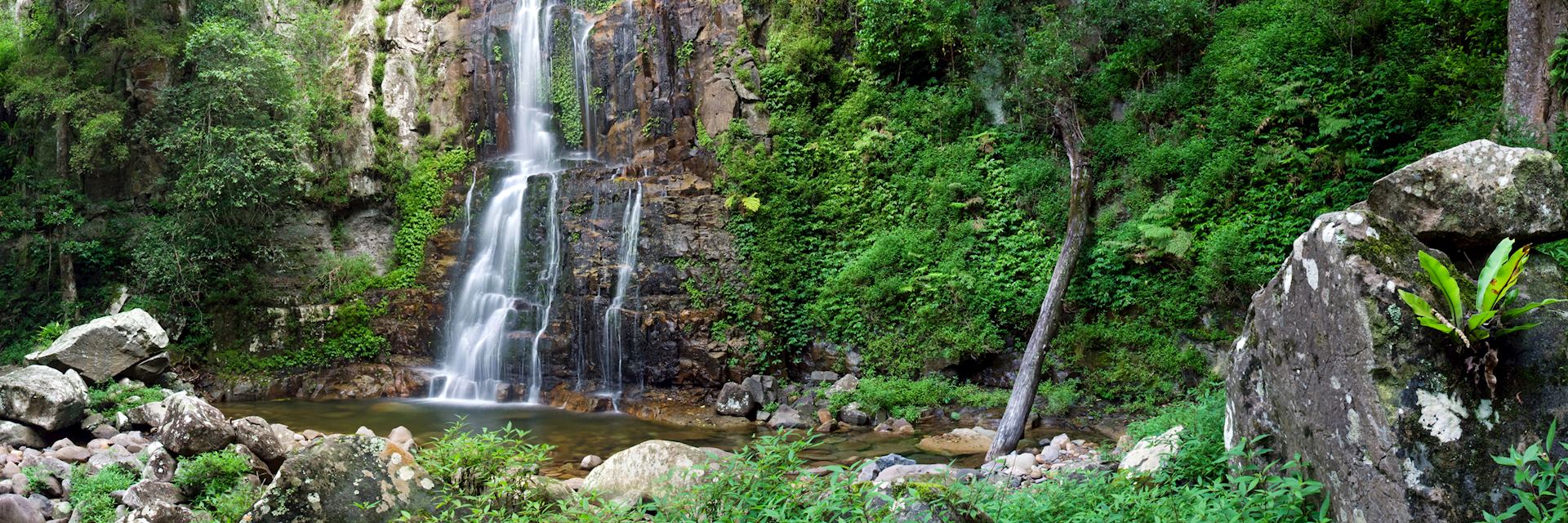
When is the best time to visit Australia?
- New South Wales
- Month-by-month
The best time to visit Australia depends on the area you plan to see. A country of two climates, Australia’s northern half is driest and most accessible between April and September. Warm, sunny days show the national parks and beaches at their very best, providing opportunities for swimming and barbecues. The north is humid from October to March, with more rainfall, but this is offset by the active wildlife, and reinvigorated rainforests and wetlands.
In the southern half of Australia, the summer months (December to February) bring hot weather. Fall (March to May) is also a lovely time, with numerous festivals and the busy grape harvest. Winter (June to August) is less busy and generally attracts a temperate climate that’s ideal for hiking, while spring (September to November) often sees more wildlife activity.
- Make an inquiry
- Request a brochure
Month-by-month guide for traveling in Australia

Visiting Australia in January - March
Hot and humid conditions and storms bringing tropical rain bursts typify the start of the year in northern Australia. During these months northern Australia experiences its wet season, and can be difficult to get to.
In the south, the days are warm and sunny, and while there can be heavy rain showers, these pass quickly. This is the most popular period for Australians to take time off work, with Australia Day celebrated in January, frequent sports events and numerous festivals.
It can be busy across the southern part of the country and on its beaches. The Great Barrier Reef can be visited, but its weather is temperamental around this period. Ningaloo Reef can also be visited, but please be aware that it has extremely hot weather around this time.
Events & Festivals
- In late January take in the firework displays and lively celebrations around Sydney Harbour, which mark Australia Day.
- Take your seat at one of the many outdoor cinema screenings held throughout the summer.
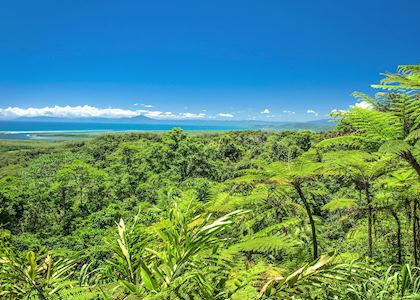
Visiting Australia in April - May
In the north, the temperatures are pleasant and the crowds of summer have started to disperse. Roads open up across the region, improving access to more remote locations.
With plenty of sunshine and much less rain than the summer months, April is one of our most recommended times to visit the south. In May, the south is still bright and sunny, but the temperatures begin to drop a little, triggering a notable change in the landscape as autumn hues appear.
- Between April and June take a boat trip out to see or even swim with the whale sharks near the Ningaloo Reef.

Visiting Australia in June - September
Northern Australia’s 'dry season' (during the Australian winter) is a time of lovely sunny days and warm temperatures, well suited for exploring on land or underwater. The tidal currents around the Great Barrier Reef are gentler, creating good snorkeling conditions.
In the country’s southern regions the weather is more temperate, making for good hiking conditions, although it can be rainy in certain parts. This period is a quieter season in the south, and the comfortable temperatures make it an excellent time to explore some of the rural inland regions, such as the Flinders Ranges , that are best avoided during the very hot summer.
- Take in the unusual Henley-on-Todd Regatta, held on the dry riverbed in August in Alice Springs.
- The Brisbane Festival takes place for three weeks in September with a line-up of music, comedy and theatrical events. Combine this with a wider exploration of Brisbane.
- A vibrant mix of wildflowers dot the landscape in Western Australia in September.
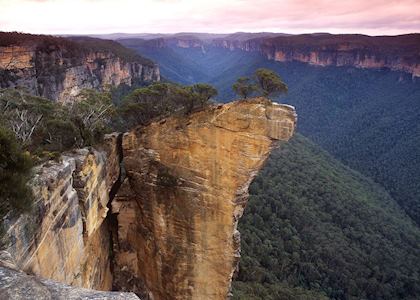
Visiting Australia in October - December
In the north, the temperature and humidity starts to build, causing the odd thunderstorm. This can bring welcome rain, transforming Outback landscapes with wildflowers. Along the coast, high winds can affect access to the reef islands.
In the south, this is the start of spring. Terrific walking and wildlife-spotting opportunities open up in the national parks and coastal regions. As Christmas approaches, Christmas lights and trees appear in towns and cities under blue skies. The year culminates in New Year's Eve celebrations with dazzling firework displays.
- Hike along one of the well-marked trails in October before the summer crowds arrive in the Blue Mountains.
- Explore in November and take in the food and wine festivals in and around the region of the Margaret River.
- Dress up for the 'race that stops the nation' as Australians tune in for the Melbourne Cup horse race in early November.
Australia Climate Guide
Why travel with audley.
- 100% tailor-made tours
- Fully protected travel
- Established for over 25 years
- 98% of our clients would recommend us

Travel advice
Practical tips for traveling to Australia, from social protocols to guidance on money matters, with a link to the latest Government of Canada travel advice.

Request our brochure
Covering all seven continents, The World Your Way shows you how you can see the world with us. It features trip ideas from our specialists alongside hand-picked stays and experiences, and introduces our approach to creating meaningful travel experiences.
Trip ideas and travel guides for exploring Australia
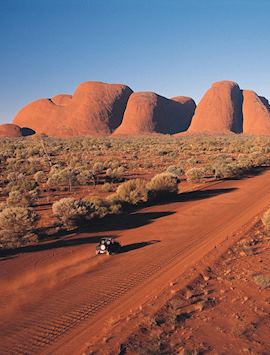
Highlights of Australia — city, Outback & reef
13 days from CAD12,750pp
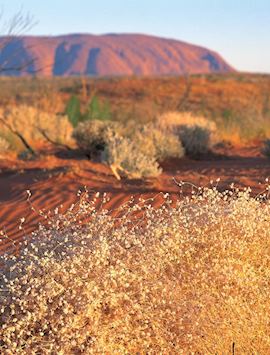
Australia & New Zealand uncovered
20 days from CAD15,745pp

What to do in Australia: our highlights guide
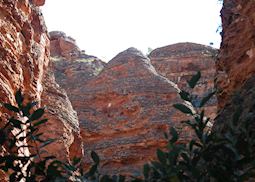
Australia's top 10 natural highlights

IMAGES
VIDEO
COMMENTS
Spring and autumn are among the best times to travel the entire country. International flights to Australia are more affordable than in summer; the weather is warming up (or cooling down from summer highs); and the north, from Broome to Cairns, experiences the dry season, offering perfect travel conditions. Must do spring experiences.
Learn what's happening in Australia through the year, from festivals and sports to wildlife and weather. Find out when to travel for beach days, multi-destination adventures, snorkeling, skiing and more.
Best Times to Visit Australia for Smaller Crowds. Most tourists, especially from the Northern Hemisphere, visit Australia during the country's summer months: December, January, and February. To ...
The best time to visit Australia depends on the area you plan to see. A country of two climates, Australia's northern half is driest and most accessible between April and September. Warm, sunny days show the national parks and beaches at their very best, providing opportunities for swimming and barbecues. ...
Find out when to visit Australia based on weather, desired destinations, current and historical flight deals. Learn how to save money and plan your trip with Skyscanner's tips and inspiration.
Learn about Australia's climate, seasons, and events to plan your trip. Find out when to visit the beaches, the outback, and the major cities for the best weather and experiences.
Learn when to visit Australia based on your preferences and activities. Find out the weather, events, and attractions for each season, from summer to winter, and get inspired by our Australia tours.
Learn how to plan your first trip to Australia with tips on when to visit, where to go, how long to stay and more. Find out why Australia is the best place to visit and how to experience it like a local.
Best time to visit Australia. In general, the best time to visit the south is during the Australian summer, from December to March, though long summer holidays from Christmas through January mean that prices are higher and beaches more crowded at this time. In the tropical north, the best months are from May to October, while in the Centre they ...
Learn about Australia's weather, seasons, school holidays and flight prices to plan your trip. Find out the average temperatures, rainfalls and water temperatures for popular tourist destinations across Australia.
Learn about the weather, activities and events in different parts of Australia and when to plan your trip. Find out how to enjoy the Great Barrier Reef, the Coral Coast, the Sunshine Coast, the Gold Coast and more.
The overall best time to visit Australia is in the fall from March to May. The fall shoulder season boasts mild temperatures, fewer crowds, and lower prices across the continent of Australia. Narrowing down the right time to go within the fall season depends on what you're looking for. Remember — seasons are backward in the southern hemisphere!
Best time to visit Australia for ideal weather. Every month presents an opportunity to experience a particular region of Australia at its best. If beach hopping is high on your agenda, aim for the warmer months of September to April in New South Wales and southeast Queensland, and November to March in southern states, including southern Western ...
The best time to visit Australia is either September to November or March to May, though in truth there's never really a bad time - there's always somewhere basking in glorious weather.June to August is very pleasant, though chilly in the evenings. These winter months can be the best time to go to Northern Australia, which is sweltering and humid much of the year.
The best time to visit Australia really depends on where you are going. In general, you'd visit the south in summer and the north in winter to avoid the most extreme weather. Tasmania in the south has an entirely different climate to Alice Springs in the center of the country, which is different from Tropical North Queensland. ...
Winter is the best time to visit the north of the country, however, and it's also a good time to go skiing, with the Australian Alps — in the country's southeast — seeing more annual ...
Experience autumn's changing colours. Autumn is a brilliant time to visit Australia. Parts of the country enjoy changing leaves, and exciting events and festivals make appearances throughout the season. Check out these incredible things to do in Australia's autumn.
Learn about Australia's weather zones, seasons, and events to plan your trip according to your preferences. Find out the pros and cons of travelling to Australia in summer, autumn, winter, and spring.
The best time to visit Australia's Red Centre, Uluru and Kata Tjuta is between May and September when the maximum temperature during the day is usually between 20°C (68°F) and 30°C (86°F). The weather is cooler, making it easier and safer and much more pleasant to walk and there is very little rain. Overnight temperatures can be very cold ...
Best time to travel to Australia - Northern part of the east coast. Winter. April until September. Summer. October until March. The Northern part of the East Coast of Australia runs from Townsville to Hervey Bay. In between, you'll find the places Airlie Beach, Mackay, Rockhampton, Gladstone and Bundaberg.
In the Coral Sea, the visibility is best in June and in September. If you want to see the Minke whales, they're seen mostly from June to August. From April through June, the whale sharks can be seen near Ningaloo, in Western Australia. Australia Tourism has an excellent reference on dive locations and regions here.
This week is the best time for Australians to see a comet that won't be back again for 71 years — almost a whole lifetime. ... 12P/Pons-Brooks will travel from the top of the Solar System, and ...
Uncover Tassie's winter secrets. Winter brings a certain magic to Tasmania. Cosy open fires, winter festivals and wildlife dusted with snow are just a few of the reasons winter is the perfect time to visit Australia's island state. Here are a few of Tasmania's winter secrets.
The 25 best places to visit in Australia. Call us biased, but we reckon Australia is one of the most astonishing and varied places to explore on Earth.
The best time to visit Australia depends on the area you plan to see. A country of two climates, Australia's northern half is driest and most accessible between April and September. Warm, sunny days show the national parks and beaches at their very best, providing opportunities for swimming and barbecues. ...
Melbourne Airport was ranked the best in Australia. Credit: Scott McNaughton Melbourne also took out the gong for Best Airport in Australia and the Pacific for the fourth time.